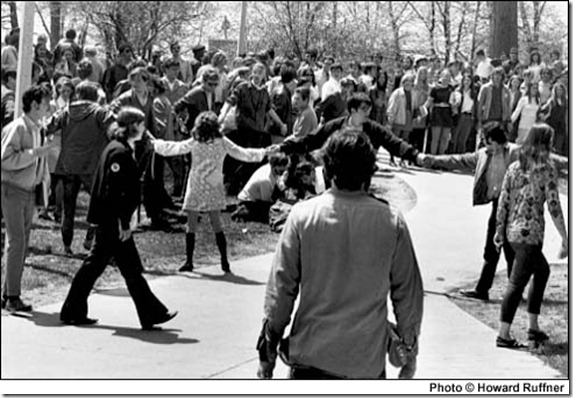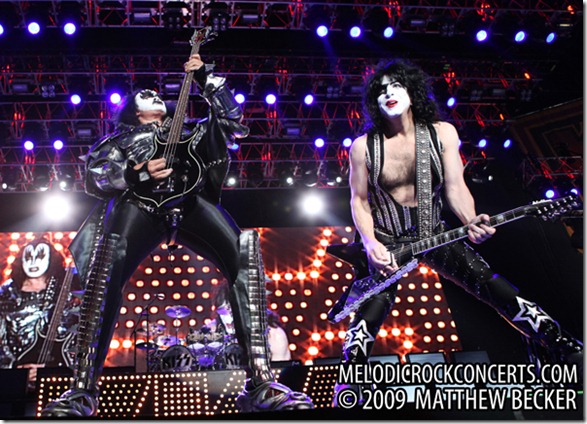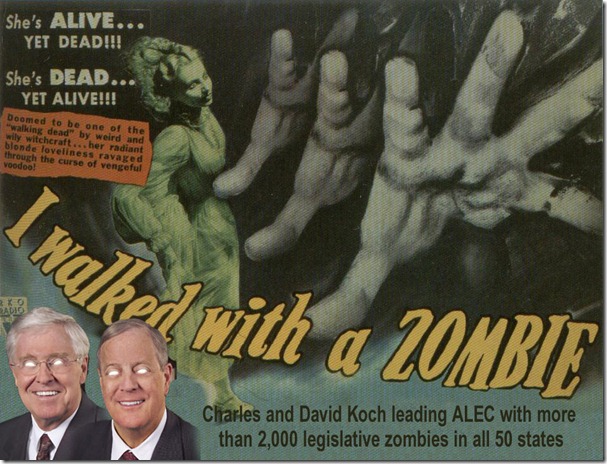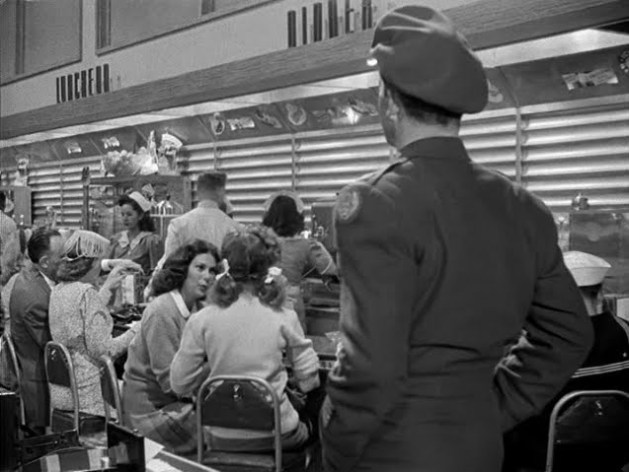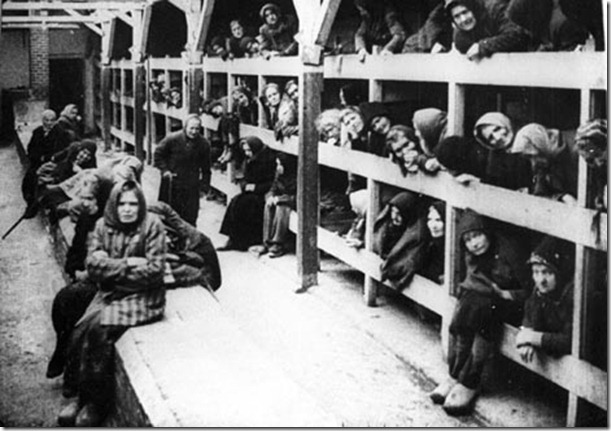Posts Tagged World War Two
Of Goths, Gen X, Anti-Abortionists, Pacifiers, and a Hierarchy of Healing … You Make It When You DON’T Fake It: Healing Crisis, Part 5
Posted by sillymickel in activism, allegory, authenticity, being yourself, Class, Culture, Generations, globalrevolution, History, individualism, life, meaning, nonconform, occupywallstreet, philosophy, Politics, psychology, spirituality, US on July 22, 2012
Getting Sick to Be Well, Part Five: Flaunting One’s Sickness Is Healthier Than Hiding It … Gen X, Goths, Pacifiers, and The Hierarchy of Healing
A Hierarchy of Healing?
This idea that those close to their unconscious conflicts are more likely to act them out blatantly goes completely against one of DeMause’s tenets. He wrote, “The higher the psychogenic mode of the psychoclass, the less it is necessary for it to act out its conflicts.” [Footnote 1]
However this is exactly the crux of my difference with his theory and is a  central point I am making. For from my perspective, the higher the mode of child-caring equals the less the defenses. Hence, the more it is likely that that generation’s conflicts will be close to the surface, seeking resolution … like Maslow’s hierarchy of needs theory. We might want to call it a hierarchy of healing theory. [Footnote 2]
central point I am making. For from my perspective, the higher the mode of child-caring equals the less the defenses. Hence, the more it is likely that that generation’s conflicts will be close to the surface, seeking resolution … like Maslow’s hierarchy of needs theory. We might want to call it a hierarchy of healing theory. [Footnote 2]
 In other words, our observing the supposed “acting out” of an underlying trauma does not mean that the group or person in question is actually or, at least completely, “acting it out” and defending against it. It may be that that group is resolving, healing, or integrating it—taking it inward rather than acting it out…in the world, on others…whether to a small or great extent.
In other words, our observing the supposed “acting out” of an underlying trauma does not mean that the group or person in question is actually or, at least completely, “acting it out” and defending against it. It may be that that group is resolving, healing, or integrating it—taking it inward rather than acting it out…in the world, on others…whether to a small or great extent.  Using the analogy of Pandora’s Jar, described earlier, they are opening the jar, at least a little. And I disagree with deMause in that I wish to stress that it is healthier by far to do that. Let me explain:
Using the analogy of Pandora’s Jar, described earlier, they are opening the jar, at least a little. And I disagree with deMause in that I wish to stress that it is healthier by far to do that. Let me explain:
The difference between acting out and resolving is whether the actions are done in total dissociation from the unconscious dynamics, that is to say, in a trance state—as explained earlier in regard to the World War Two generation and the Tea Party—or whether there is at least a modicum of insight into it occurring as a result of things inside of oneself, not completely projected onto the outside.
 The attitude that leads to total dissociation and acting out was expressed in a recent 2012 military movie, Act of Valor, which depicted Navy Seals engaged in anti-terrorism activity. At the end, the manner of dealing with pain recommended for these American soldiers and “men of valor” was to (paraphrasing) put all the pain in a box, shut it tight, press it down till it is smaller and smaller, and never, under any circumstances, let it out!
The attitude that leads to total dissociation and acting out was expressed in a recent 2012 military movie, Act of Valor, which depicted Navy Seals engaged in anti-terrorism activity. At the end, the manner of dealing with pain recommended for these American soldiers and “men of valor” was to (paraphrasing) put all the pain in a box, shut it tight, press it down till it is smaller and smaller, and never, under any circumstances, let it out!
 However, in non-acting-out—“acting inward” or taking back the projection—there is a tad of insight, as, for example, in the “overexamined life” of the “uncommitted” and the “self-analysis” of the young radicals of the Sixties generation. Similarly, the rock concert revivication of all current generations except the Fifties and WWII ones, as I’ve mentioned, is
However, in non-acting-out—“acting inward” or taking back the projection—there is a tad of insight, as, for example, in the “overexamined life” of the “uncommitted” and the “self-analysis” of the young radicals of the Sixties generation. Similarly, the rock concert revivication of all current generations except the Fifties and WWII ones, as I’ve mentioned, is 
 about personal experience and growth, and it is not about acting out on another; whereas an example of the extreme other end of that would be engaging, trance-like, in a mass killing against a perceived political enemy, as Loughner did, and as we do as nations in wars.
about personal experience and growth, and it is not about acting out on another; whereas an example of the extreme other end of that would be engaging, trance-like, in a mass killing against a perceived political enemy, as Loughner did, and as we do as nations in wars.
Another example of complete dissociation are the anti-abortion folks. They don’t have a clue of the connection between their own unconscious prenatal pain and the feelings they have about unborn others. They are not wrestling with their feelings, they are trying to change the world to conform to their defenses around those feelings—that is, they want the world to suppress that womb time out of existence like they have done to it in their own minds. The proof that it is acting out is that it is all about changing others’ behavior, and it involves imposing one’s inner pain on others forcefully and aggressively—which we have seen in its extreme form with the murders of physicians committed by anti-abortionists
Flaunting One’s Sickness Beats Hiding It—Generation X
The self-analysis of the Sixties Generation was followed by a different mode of struggling with perinatal pain by Generation X, which continues in abated form with the Millennial Generation.  It was manifest rather strikingly with the Goth phenomenon and the vampire fascination that began in the Eighties, coincident with Gen X’s coming of age. Goth and vampirism show blatant perinatal dynamics that are not unfelt and completely repressed as in dissociation with its trance-state aggression against others. An example of Gen X perinatal acting out of these dynamics in total dissociation and trance state was given above in the anti-abortionists. But Goth and vampire culture show folks feeling and immersed consciously in these pushes and pulls and wrestling with them, trying to work them out as opposed to act them out.
It was manifest rather strikingly with the Goth phenomenon and the vampire fascination that began in the Eighties, coincident with Gen X’s coming of age. Goth and vampirism show blatant perinatal dynamics that are not unfelt and completely repressed as in dissociation with its trance-state aggression against others. An example of Gen X perinatal acting out of these dynamics in total dissociation and trance state was given above in the anti-abortionists. But Goth and vampire culture show folks feeling and immersed consciously in these pushes and pulls and wrestling with them, trying to work them out as opposed to act them out.
Hey, It Was Tough!
This is rather clearly shown in looking at the “regression” in Europe, described by psychohistorians, which occurred in the Nineties. This behavior showed a bit of insight…and resolution happening…in that the baby song being hummed was about the very real hardships of being a baby. Therefore, an actual truth about their own lives was being faced there by those singing along with it. The song was not being used to deny or defend against those traumas.
One might suspect that as well in carrying around such blatant examples of regression as a pacifier. For  someone in a more defended mode would be highly threatened by such an obvious symbol that they are really needy children inside. More defended folks would be terrified such overt behavior would make them look wussy or sissified—that is, look like that vulnerable, frightened baby that they
someone in a more defended mode would be highly threatened by such an obvious symbol that they are really needy children inside. More defended folks would be terrified such overt behavior would make them look wussy or sissified—that is, look like that vulnerable, frightened baby that they  really feel themselves to be but are doing their damnedest to hide from everyone. Imagine how those Navy Seals described above would feel walking around sucking on a pacifier, for example.
really feel themselves to be but are doing their damnedest to hide from everyone. Imagine how those Navy Seals described above would feel walking around sucking on a pacifier, for example.
So in actually carrying around a pacifier these youth were not only displaying an insight into their feelings of sometimes being needy babies, on the inside, but  are actually flaunting this awareness, as if to shame, or slap the face of, or be “in the face” of a generation of their parents—the Fifties Generation for the most part—who did not see their needs when they were babies—however effortfully and obviously they sought to demonstrate them. Thus the symbols needed to become more and more shocking and obvious.
are actually flaunting this awareness, as if to shame, or slap the face of, or be “in the face” of a generation of their parents—the Fifties Generation for the most part—who did not see their needs when they were babies—however effortfully and obviously they sought to demonstrate them. Thus the symbols needed to become more and more shocking and obvious.
Look at What You Did to Me!
For example: the jeans with requisite holes around the knees was screaming out, “You did not take care of me; you made me feel like a poor, orphaned, ragamuffin child.”
The piercing of mouths, nose, ears, and even tongues shouted,
“
I am in pain, dammit! Can’t you see that when you stick needles in me as a little baby that I hurt? How can you be so insensitive? Can’t you see that when you refuse to breastfeed and thus nurture me orally that I am forever damaged there, ever painful there? What does it take, my sticking pins—safety pins make the point even more that it was when I was in diapers—in myself to make you see that I hurt there?”
 And, of course, the black clothes, the hideous macabre makeup, and depressed, sullen expressions was exclaiming,
And, of course, the black clothes, the hideous macabre makeup, and depressed, sullen expressions was exclaiming,
“Look, you might think we’re a wonderful family and everything is hunky-dory here; but I wish I were dead! I’ve felt so much pain, from in the womb, at birth, and right after birth, that I wish I’d never been born.
“Also, somehow in courting death, I have the feeling
that I might somehow be reborn again into a good life, not like this place of torture and tears, right from the beginning, where my welcome into the world consisted of being drugged, handled like an object or piece of meat, blasted by bright lights, scrubbed by rough cloths, having needles and suctions stuck in me, blasted with noise, made to lie on cold stainless steel surfaces, and then bundled like a tamale so that I could not move…making me feel again
like I was back in the hellish womb where in the later stages, for a time that felt like an eternity, I felt unable to move and was suffocating for lack of sufficient oxygen…and the only action that was possible was for me to scream my bloody head off for long periods of time or go into a stupor—which is what I did, alternating between them.
“Can’t you see that I’d rather be dead than live in such a world of insensitive zombies like you. Hell, in fact, to
further drive the point home, I’ll even look and act like a zombie, I’ll try to appear as unfeeling and morose as you all seemed to me, especially at my birth. And I’ll go a step further and mirror yourselves back to you by becoming enamored of vampires….
“Can’t you see that you sucked my very life force, my blood, and turned me into an unfeeling vampire like you, by suffocating me in the womb, poisoning me with your toxic blood which you both sucked from me and then forced down my throat!”
Footnotes
1. Lloyd deMause, The Foundations of Psychohistory. New York: Creative Roots, 1982, p. 139. See also “Are Some ‘Sick’ People More Healthy Than Normals?”
2. See also “Are Some ‘Sick’ People More Healthy Than Normals?” on the Primal Spirit site.
Continue with The Consciousness Revolution They Don’t Want You to Notice. It’s Inconvenient for Them, Initially Hard for Us, and Hopefully Not Too Late: Healing Crisis, Part 6
Return to Millennials and Their Opposites – Fifties Generation Tea Partyers … How OWS and Tea Party Movements Are Generationally and Perinatally Different: Healing Crisis, Part 4
Invite you to join me on Twitter:
http://twitter.com/sillymickel
friend me on Facebook: https://www.facebook.com/sillymickel
Healing Crisis, Part 1: What’s in Your Head, Zombie? Being Really Sick, But Denying It — WWII Generation, Nazis, KKK, Right Wing, Tea Party
Posted by sillymickel in activism, allegory, authenticity, being yourself, Class, Culture, economics, Generations, globalrevolution, History, individualism, life, meaning, nonconform, occupywallstreet, philosophy, Politics, psychology, spirituality, US on July 13, 2012
Getting Sick to Be Well, Part One: Birth Woes ~ World Wars and Can’t Know What You Don’t Know … What’s in Your Head, Zombie? 
Getting Sick In Order to Get Well
What does this all mean? What does this portend? What might be the outcome of this emerging perinatal unconscious? In other words, consciousness evolution or apocalypse?
To answer what an emerging perinatal unconscious might mean on a macrocosmic or societal-global scale, it is helpful to look at what an emerging perinatal unconscious portends on the individual or microcosmic level.
What we have learned from the experiential modalities—holotropic breathwork™, primal therapy, rebirthing, vivation, and others like them—is that unerringly people need to get “sicker” before they can get well. This should not be news to psychoanalysts or any of the other mainstream psychotherapists or counselors either.
Healing Crisis

 Basically, the underlying repressed material must come to the “surface,” must become more conscious…and obviously when it becomes more conscious its accompanying symptoms are exacerbated. This can be called a healing crisis in that the symptoms get worse, more obvious, more blatant; and there is a period of acting them out before integration and resolution happens.
Basically, the underlying repressed material must come to the “surface,” must become more conscious…and obviously when it becomes more conscious its accompanying symptoms are exacerbated. This can be called a healing crisis in that the symptoms get worse, more obvious, more blatant; and there is a period of acting them out before integration and resolution happens.
One Must “Die” to One’s Sickness Before One Can Be “Born” Well

 When Grof talks about birth/death scenarios in the perinatal unconscious, he is including these sorts of healings, where one must “die” to one’s sickness before one can be “reborn” into another way of being, without those sick patterns or symptoms.
When Grof talks about birth/death scenarios in the perinatal unconscious, he is including these sorts of healings, where one must “die” to one’s sickness before one can be “reborn” into another way of being, without those sick patterns or symptoms.
Degrees of Disease
Dissociation – Completely Split Off
It’s YOU! YOU’re the f&^$#r!
 We see a progression over the last century in which there was complete dissociation from the perinatal unconscious by those of the Fifties, the World-War-Two, and previous generations—hence complete projection of it on The Other—to lesser dissociations from it by the generations since, baby-boomer and afterward, which involve more awareness of it as being a part of oneself and less projection of it on The Other.
We see a progression over the last century in which there was complete dissociation from the perinatal unconscious by those of the Fifties, the World-War-Two, and previous generations—hence complete projection of it on The Other—to lesser dissociations from it by the generations since, baby-boomer and afterward, which involve more awareness of it as being a part of oneself and less projection of it on The Other.
Wounded Deer

 In this latter instance, there is more suffering from it and more individual acting out of it, so that in a sense one appears “sicker”—the perinatal is more obvious in one’s behavior, taking more individual forms, and it is more easily recognized and seen to be a personal problem…a “sickness.” Earlier I described this consciousness as being the way of the centaur, for it reflects Chiron, in ancient myths, having an ongoing wound but eventually becoming a teacher and healer.
In this latter instance, there is more suffering from it and more individual acting out of it, so that in a sense one appears “sicker”—the perinatal is more obvious in one’s behavior, taking more individual forms, and it is more easily recognized and seen to be a personal problem…a “sickness.” Earlier I described this consciousness as being the way of the centaur, for it reflects Chiron, in ancient myths, having an ongoing wound but eventually becoming a teacher and healer.
To understand the ways the perinatal manifests depending upon one’s “closeness” to it, let us contrast the two extremes of being split off from it and being close to it.
Being Really Sick, But Denying It: WWII Generation, Nazis, KKK, Right Wing, Tea Party
Can’t Know That You Don’t Know
![clip_image010[3] clip_image010[3]](https://apocalypseknow.files.wordpress.com/2012/06/clip_image0103.jpg?w=306&h=217)
 First let us take a look at what the perinatal appears like when it is completely split off from one’s conscious personality. This complete splitting off from the perinatal entails
First let us take a look at what the perinatal appears like when it is completely split off from one’s conscious personality. This complete splitting off from the perinatal entails 
 a complete repression and denial of it. Consequently, one has absolutely no access to it, and thus one is in total ignorance of the underlying motivations of one’s actions. One unconsciously acts out perinatal elements and traumas and manifests them in one’s behavior, rationalizing all the while that one has really good—non-perinatal, “real world”—reasons for why one is doing the things one is doing.
a complete repression and denial of it. Consequently, one has absolutely no access to it, and thus one is in total ignorance of the underlying motivations of one’s actions. One unconsciously acts out perinatal elements and traumas and manifests them in one’s behavior, rationalizing all the while that one has really good—non-perinatal, “real world”—reasons for why one is doing the things one is doing.
What”s in Your Head, Zombie?
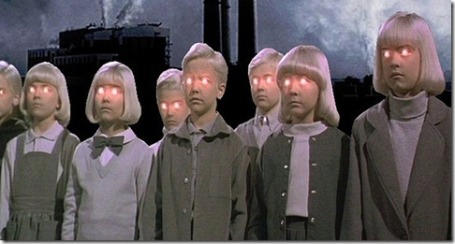 Psychohistorians deem this state to be such an oblivious one that they use the term trance-state for it, fully intending all the implications and connotations that term engenders. That is, they are saying that people who are this repressed and split off do their acting zombie-like and out of motivations completely hidden to themselves. [Footnote 1]
Psychohistorians deem this state to be such an oblivious one that they use the term trance-state for it, fully intending all the implications and connotations that term engenders. That is, they are saying that people who are this repressed and split off do their acting zombie-like and out of motivations completely hidden to themselves. [Footnote 1]
Birth Woes ~ World Wars

 In such total ignorance, and of course being totally ignorant that one is in ignorance, people in the past century have been able to act out their perinatal underbellies in ways to make such hideous and all-encompassing wars as World War I and World War II possible.
In such total ignorance, and of course being totally ignorant that one is in ignorance, people in the past century have been able to act out their perinatal underbellies in ways to make such hideous and all-encompassing wars as World War I and World War II possible.
![clip_image013[3] clip_image013[3]](https://apocalypseknow.files.wordpress.com/2012/06/clip_image0133.jpg?w=423&h=298) Leaving aside for a moment the myriad ways the perinatal has unconsciously been acted out in this century in creating the current situation in which we are on the brink of extinction—which can be considered the most serious consequences of this splitting off imaginable—simply focusing on this century’s major wars as evidence of perinatal acting-out alone is instructive.
Leaving aside for a moment the myriad ways the perinatal has unconsciously been acted out in this century in creating the current situation in which we are on the brink of extinction—which can be considered the most serious consequences of this splitting off imaginable—simply focusing on this century’s major wars as evidence of perinatal acting-out alone is instructive.
![clip_image014[3] clip_image014[3]](https://apocalypseknow.files.wordpress.com/2012/06/clip_image0143.gif?w=410&h=331) The Nazis, in particular, were extreme in their dissociation from their perinatal, in their projection of it onto the Jews, and their consequent ability to act it out in horrific ways on them and others. Alice Miller and Lloyd deMause have each detailed the psychodynamics of this projection of primal pain—both perinatal and childhood—in the creation of the people that Adolf Hitler and the Nazis became in their adulthood. [Footnote 2]
The Nazis, in particular, were extreme in their dissociation from their perinatal, in their projection of it onto the Jews, and their consequent ability to act it out in horrific ways on them and others. Alice Miller and Lloyd deMause have each detailed the psychodynamics of this projection of primal pain—both perinatal and childhood—in the creation of the people that Adolf Hitler and the Nazis became in their adulthood. [Footnote 2]
![clip_image016[3] clip_image016[3]](https://apocalypseknow.files.wordpress.com/2012/06/clip_image0163.jpg?w=479&h=359) The Nazis present us with the patterns of these processes of dissociation and projection in blatant and obvious relief. The way Nazis, especially in concentration camps, acted out perinatal trauma on their prisoners has been described in great detail by Grof as well. [Footnote 3]
The Nazis present us with the patterns of these processes of dissociation and projection in blatant and obvious relief. The way Nazis, especially in concentration camps, acted out perinatal trauma on their prisoners has been described in great detail by Grof as well. [Footnote 3]
Continue with Wounded Deer and Centaurs – Being “Weller,” But Appearing Sicker – Perinatal Awareness of Boomers and Beyond: Healing Crisis, Part 2
Return to Birth Wars ~ World Woes, Part 2: Can You Look Your Belly in the Face?
Footnotes
1. “Zombie” by the Cranberries lyrics:
Another head hangs lowly
Time is slowly taken
And the violence causes silence
Who are we mistaken?
Let he see, it’s not me
It’s not my family
In your head, in your head
They are fightin!
With their tanks, and their bombs
And their bombs, and their guns
In your head, in your head
They are cryin!
In your head! In your head!
Zombie! Zombie! Zombie!
Whats in your head, in your head?
Zombie! Zombie! Zombie!
Another mother’s breaking
Heart is taken over.
When the violence causes silence
We must be mistaken.
It’s the same old theme
Since 1916!
In your head, in your head
They’re still fightin!
With their tanks, and their bombs
And their bombs, and their guns
In your head, in your head!
They are dyin!
In your head! In your head!
Zombie! Zombie! Zombie!
What’s in your head, in your head?
Zombie! Zombie! Zombie!
2. Alice Miller, For Your Own Good. New York: Farrar, Straus and Giroux, 1984; and Lloyd deMause, “Restaging Early Traumas in War and Social Violence.” The Journal of Psychohistory 23 (1995): 344-391. Reprinted, with permission, on Primal Spirit site as “Restaging Prenatal and Birth Traumas in War and Social Violence”) [return to text]
3. Stanislav Grof, “Planetary Survival and Consciousness Evolution: Psychological Roots of Human Violence and Greed.” Primal Renaissance: The Journal of Primal Psychology 2(1): 3-26, p. 23. (Article reprinted, with permission, on this Primal Spirit website). [return to text]
Continue with Wounded Deer and Centaurs – Being “Weller,” But Appearing Sicker – Perinatal Awareness of Boomers and Beyond: Healing Crisis, Part 2
Return to Birth Wars ~ World Woes, Part 2: Can You Look Your Belly in the Face?
Invite you to join me on Twitter:
http://twitter.com/sillymickel
friend me on Facebook: https://www.facebook.com/sillymickel
Generations – Their Drugs and Politics. Gen Xers Are Fifty-ish, Millennials Are Sixty-ish: 21st Century and Its Discontents, Part 29
Posted by sillymickel in activism, authenticity, being yourself, Class, Culture, Generations, globalrevolution, History, individualism, nonconform, philosophy, Politics, psychology, US on July 4, 2012
Kaleidoscope of Postmodern Life, Part Twenty-Nine: An Aside on Drugs and Generations—Sixties, Gen X, Millennials and Their Parents
Millennials Are Sixty-ish
 There is another overlooked factor or aspect of this rise in drug use in the Nineties by Millennials: These youngsters were the sons and daughters of the Sixties generation who, in their own youth, as we all know too well, engaged in drug experimentation. In fact, this younger generation of drug users has sometimes been called the baby-boomer “echo” generation.
There is another overlooked factor or aspect of this rise in drug use in the Nineties by Millennials: These youngsters were the sons and daughters of the Sixties generation who, in their own youth, as we all know too well, engaged in drug experimentation. In fact, this younger generation of drug users has sometimes been called the baby-boomer “echo” generation.
Gen Xers Are Fifty-ish

 Millennials are quite a bit different from the previous “echo” generation — Gen X. The generation that came to age during the Eighties—Yuppies and Xers—had parents who were
Millennials are quite a bit different from the previous “echo” generation — Gen X. The generation that came to age during the Eighties—Yuppies and Xers—had parents who were 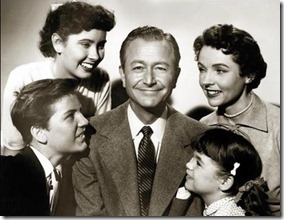 born during the Great Depression and
born during the Great Depression and 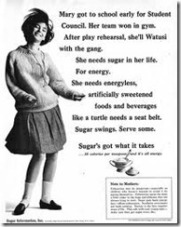 World War Two, who had their young adult formative years during the Eisenhower — Joe McCarthy –Presley Fifties. So Gen X was influenced by their parents to conservatism, career-mindedness, and, for drug-of-choice, alcohol.
World War Two, who had their young adult formative years during the Eisenhower — Joe McCarthy –Presley Fifties. So Gen X was influenced by their parents to conservatism, career-mindedness, and, for drug-of-choice, alcohol.
But this “echo” generation of Millennials has parents whose young adulthood was forged in the rebellion, drug and sex experimentation, activism, liberal-radicalism, and idealism of the Sixties, not the Fifties. [Footnote 1]
Forget What You’ve Heard About Generation Gap

 Generationally speaking, we know that children do not predominantly rebel to the opposite of their parents’ values. Kenneth Keniston, for one, has made it clear—referring to studies—that children are paramountly influenced by the values and attitudes…conscious and unconscious…of their parents. So this most recent cohort of youth was of course going to be more liberal in their attitude to drug use than Gen X, even if their parents, in their coming into adulthood, overtly decry or are against the use of drugs. Keep in mind also that many of the baby-boomers have retained, not reversed, their acceptance of drug experimentation, and many still believe in and use drugs; many still considering the occasional use of certain types—especially the psychedelics, and to some extent, pot—to be an aid to self-development and/or spiritual awareness.
Generationally speaking, we know that children do not predominantly rebel to the opposite of their parents’ values. Kenneth Keniston, for one, has made it clear—referring to studies—that children are paramountly influenced by the values and attitudes…conscious and unconscious…of their parents. So this most recent cohort of youth was of course going to be more liberal in their attitude to drug use than Gen X, even if their parents, in their coming into adulthood, overtly decry or are against the use of drugs. Keep in mind also that many of the baby-boomers have retained, not reversed, their acceptance of drug experimentation, and many still believe in and use drugs; many still considering the occasional use of certain types—especially the psychedelics, and to some extent, pot—to be an aid to self-development and/or spiritual awareness.
Family Lies Not “Family Ties”

 The myth that youth rebel against their parents’ values was expressed and propagandized by the TV show “Family Ties.”
The myth that youth rebel against their parents’ values was expressed and propagandized by the TV show “Family Ties.” 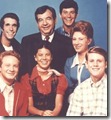 This was an oh-so-convenient portrayal, as it contributed to the pervasive scapegoating of the Sixties generation by the Fifties Generation—the Eisenhower–Joe McCarthy–Presley generation—who came into their Triumphant Phase, that is, took over the reins of society as mature adults in the Eighties.
This was an oh-so-convenient portrayal, as it contributed to the pervasive scapegoating of the Sixties generation by the Fifties Generation—the Eisenhower–Joe McCarthy–Presley generation—who came into their Triumphant Phase, that is, took over the reins of society as mature adults in the Eighties.
Rebellion in Youth Amounts to Being Uncompromising About Parents’ Values Not Defying Them

 This “Family Ties” kind of rebellion, however inaccurate, seems to be credible largely as a result of the observation that youth do rebel against their parents. But it
This “Family Ties” kind of rebellion, however inaccurate, seems to be credible largely as a result of the observation that youth do rebel against their parents. But it  ignores the fact that when they do, and they don’t always, they revolt or rebel, as in the Sixties youth, most often in the direction of being more insistent of actually living the values of their parents, not simply voicing them.
ignores the fact that when they do, and they don’t always, they revolt or rebel, as in the Sixties youth, most often in the direction of being more insistent of actually living the values of their parents, not simply voicing them.  As Keniston found out, for example, as he described in his follow-up to The Uncommitted, in the book, Young Radicals: Notes on Committed Youth, radical youth had liberal (hardly conservative!) parents.
As Keniston found out, for example, as he described in his follow-up to The Uncommitted, in the book, Young Radicals: Notes on Committed Youth, radical youth had liberal (hardly conservative!) parents.
 When Sixties youth were angry at their parents it was out of their perception of their parents as compromising and not living out their own expressed ideals, as laid out to their children in raising them. Therefore, Sixties rage against adults came out of their disgust at their parents for “not walking their talk.” As we may recollect, there was the oft-repeated charge of “hypocrite” directed by some of these youth toward their parental generation.
When Sixties youth were angry at their parents it was out of their perception of their parents as compromising and not living out their own expressed ideals, as laid out to their children in raising them. Therefore, Sixties rage against adults came out of their disgust at their parents for “not walking their talk.” As we may recollect, there was the oft-repeated charge of “hypocrite” directed by some of these youth toward their parental generation.
Millennials and Their Sixties Parents
In this regard notice also that this latest crop of young—born mid-70s through roughly 2000 (Boomers had children over a longer expanse of time than generations previous and since, for reasons that I’ve dealt with in other places) 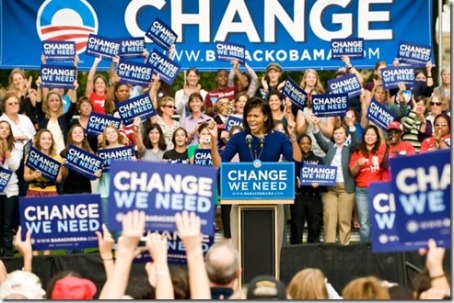 and being now in their twenties and thirties…the sons and daughters of the Sixties Generation—has also seen increases in voting for liberal or Democratic candidates. Their turnout for Clinton in 1992 was the first time since the Seventies that the youth vote went Democratic. Their support of Obama was widely given as the reason for his success.
and being now in their twenties and thirties…the sons and daughters of the Sixties Generation—has also seen increases in voting for liberal or Democratic candidates. Their turnout for Clinton in 1992 was the first time since the Seventies that the youth vote went Democratic. Their support of Obama was widely given as the reason for his success.
Occupy Wall Street … Sixties Gen Liberals, Millennial Revolutionaries?

 In the Nineties we saw — despite the AIDS scare — an end to a fledgling “youth celibacy movement” — which had been a movement of Yuppie/Gen Xers encouraged by their Fifties Generation parents. The Millennials,
In the Nineties we saw — despite the AIDS scare — an end to a fledgling “youth celibacy movement” — which had been a movement of Yuppie/Gen Xers encouraged by their Fifties Generation parents. The Millennials,  echoing again their parents and this time the sexual revolution, were noted for early and/or increased sexual experimentation.
echoing again their parents and this time the sexual revolution, were noted for early and/or increased sexual experimentation. This latest cohort of youth also has seen increases in idealism, activism, and volunteerism. It is no coincidence that we have finally seen a rising up of activism again in the occupy wall street movement, with Millennials taking the lead and supported, taught, and inspired by their Sixties cohort parents. [Footnote 2]
This latest cohort of youth also has seen increases in idealism, activism, and volunteerism. It is no coincidence that we have finally seen a rising up of activism again in the occupy wall street movement, with Millennials taking the lead and supported, taught, and inspired by their Sixties cohort parents. [Footnote 2]
Footnote
1. See my blog/book Culture War, Class War, especially Chapter Two: Matrix Aroused, the Sixties and Chapter Four: Drugs of Choice and Generational Cultures – Concocted Worlds and Chapter Five: The King Won’t Die – An Aborted Changing of the Guard.
2. These aspects and generational phenomena are spelled out in more detail in my work-in-progress, Regression, Mysticism, and “My Generation.” Right at hand, however, you can read an elaboration of some of these ideas in the chapters mentioned in Culture War, Class War—especially Chapters One through Seven and the post, Awakening Millennial Generation Occupy Global Revolution.
Continue with Tune Inward, Turn Back, Drop Down – Psychedelics, Depression, and Those Nasty Birth Feelings: 21st Century and Its Discontents, Part 30
Return to Raging to Reenter, Vampire Apocalypse, Drug Use, and Being Gratefully Dead—Perinatal Printouts Of Sixties, X, and Millennial Generations. 21st Century and Its Discontents, Part 28
Invite you to join me on Twitter:
http://twitter.com/sillymickel
friend me on Facebook: https://www.facebook.com/sillymickel
America Since Its “Pleasantville” Fifties: Cultural Rebirth Aborted, Changing of the Guard Denied, The Elders on Life Support, and the Abomination Fills the Land
Posted by sillymickel in activism, allegory, authenticity, being yourself, Class, Culture, economics, Generations, globalrevolution, History, individualism, life, meaning, nonconform, occupywallstreet, philosophy, Politics, psychology, spirituality, uniqueness, US on July 3, 2012
Culture War, Class War Chapter Seven: Cultural Rebirth, Aborted
It’s a (Not So) Wonderful Life…for the World War Two Generation Compared to Their Boomer Children

War Compelled the Dashing of Dreams for WWII Gen Youth – It’s a Not-So Wonderful Life
Sixties Youth Ideals of Freedom – So at Odds with Their Parents Lives of Heavy Responsibilities
The paramount theme in “Pleasantville”—which is that thinking for oneself and following one’s own unique path and being open to the change that comes with that brings “color,” truth, and aliveness to one’s life—is truly a Sixties Generation idea.  Again, it is not that it has never been thought of before. All great ideas have been thought before, but that does not mean they have been implemented on a sociocultural, macrocosmic level. Many ideas have remained in the realm of the solitary pursuits of philosophers and mystics and been exemplified only in individual lives. But the Sixties was such a time of turmoil because the values of individual freedom, personal passion, feeling and experience, questioning authority, and thinking for oneself were shared by so many Baby-Boomers and were so contrary to the values of the generation in power.
Again, it is not that it has never been thought of before. All great ideas have been thought before, but that does not mean they have been implemented on a sociocultural, macrocosmic level. Many ideas have remained in the realm of the solitary pursuits of philosophers and mystics and been exemplified only in individual lives. But the Sixties was such a time of turmoil because the values of individual freedom, personal passion, feeling and experience, questioning authority, and thinking for oneself were shared by so many Baby-Boomers and were so contrary to the values of the generation in power.
It’s a (Not So) Wonderful Life
An excellent example of how opposed the Sixties values are to those of the WWII Generation is found in that beloved movie of all time, “It’s a Wonderful Life,” starring Jimmy Stewart.  In that film, the main character is prevented by circumstances from following his dreams. One event after another keeps him from leaving his home town. His story might be called “The Truman Show” in reverse for he comes to accept the loss of his dreams. He is rewarded for giving up his yearning for adventure with the warmth of a loving family and friends.
In that film, the main character is prevented by circumstances from following his dreams. One event after another keeps him from leaving his home town. His story might be called “The Truman Show” in reverse for he comes to accept the loss of his dreams. He is rewarded for giving up his yearning for adventure with the warmth of a loving family and friends.

Nonetheless, he has been reduced to someone who simply follows a script or role and when it appears that he might fail in that role he considers killing himself.

Reassures a Generation
The movie is beloved and timeless, no doubt, because it reassures an entire generation and all those who have had to give up their dreams for whatever reason that their sacrifices were for a higher good and that it is a wonderful life after all.
Will never know what might have been.
It provides a rationalization against the painful feelings of knowing that one will never know “what might have been” by pointing out the truth that one’s life affects others and has meaning regardless of whether or not one has been fortunate enough to actualize one’s deepest desires, talents, aspirations, and dreams.
War Compels Dashing of Dreams
As mentioned, “It’s a Wonderful Life” calls out to and epitomizes the experiences and attitudes of the World War Two Generation in particular. They were called upon to  fight a war, after all, which no doubt would derail many a young man’s (and woman’s) dreams. As in “It’s a Wonderful Life,” the circumstances that arise to prevent their following through on their dreams are imposed from the outside–the state of being at war and being called upon by a draft to enlist or else be enlisted. For the women, as well as the men who stayed behind, the war’s influence on their lives and the carrying out of idealistic schemes and dreams are only a little less pronounced. For, as in “It’s a Wonderful Life,” the war created a society heaving with needs and pain, which only the truly heartless (who wouldn’t have any dreams anyway) could not help but feel compelled to respond to.
fight a war, after all, which no doubt would derail many a young man’s (and woman’s) dreams. As in “It’s a Wonderful Life,” the circumstances that arise to prevent their following through on their dreams are imposed from the outside–the state of being at war and being called upon by a draft to enlist or else be enlisted. For the women, as well as the men who stayed behind, the war’s influence on their lives and the carrying out of idealistic schemes and dreams are only a little less pronounced. For, as in “It’s a Wonderful Life,” the war created a society heaving with needs and pain, which only the truly heartless (who wouldn’t have any dreams anyway) could not help but feel compelled to respond to.
Growing up too fast
 In one way or another, the situation in the Forties, with the war effort and afterwards, created a generation who, except for the rare individual or one of unusual circumstances, was called upon to step up into mature responsible tasks long before the idealism of their youth would have preferred that they do so. And their generation is scarred for having missed this opportunity. They are individuals deserving of our sympathy; yet crippled they are nonetheless.
In one way or another, the situation in the Forties, with the war effort and afterwards, created a generation who, except for the rare individual or one of unusual circumstances, was called upon to step up into mature responsible tasks long before the idealism of their youth would have preferred that they do so. And their generation is scarred for having missed this opportunity. They are individuals deserving of our sympathy; yet crippled they are nonetheless.
We Are the Centaurs (My Friends)… The WWII Generation’s Sacrifice Made the Idealism of Their Children Possible

 The WWII Generation’s Sacrifice Made Sixties Visioning Possible
The WWII Generation’s Sacrifice Made Sixties Visioning Possible
Mashing Butterflies and Drowning Kittens
 This is not to say, however, that the generations before the WWII Generation were allowed their dreams and that the WWII Generation is unique in being crippled in its development. For we know that earlier child-rearing modes required the submission of children and youth to parental wishes (again, see “The History of Childhood As The History of Child Abuse” by Lloyd deMause). Therefore, dreaming or envisioning an adventurous life was not the norm. For much of the history of the world and in most cultures, indeed, even the selection of one’s spouse was decided by the parents. So much has our history–in both Eastern and Western cultures–been marked by the assassination of youthful dreaming, idealism, and choice that Shakespeare’s Romeo and Juliet can be said to be a revolutionary work in even depicting that this assassination of dreams is a tragedy!
This is not to say, however, that the generations before the WWII Generation were allowed their dreams and that the WWII Generation is unique in being crippled in its development. For we know that earlier child-rearing modes required the submission of children and youth to parental wishes (again, see “The History of Childhood As The History of Child Abuse” by Lloyd deMause). Therefore, dreaming or envisioning an adventurous life was not the norm. For much of the history of the world and in most cultures, indeed, even the selection of one’s spouse was decided by the parents. So much has our history–in both Eastern and Western cultures–been marked by the assassination of youthful dreaming, idealism, and choice that Shakespeare’s Romeo and Juliet can be said to be a revolutionary work in even depicting that this assassination of dreams is a tragedy!

Roaring Into Life
 Still, the WWII Generation can be said to have been especially affected by this slaying of self, for they did, after all experience the heady freedom of the “Roaring Twenties” and the dreaming that preceded the Great Depression. In the Twenties, victorious in World War I and with it now put behind, America was coming into its youthfulness and was heady with its achievements. Unbelievable accomplishments and inventions in all areas of life were speeding up sociocultural change causing some to believe that a new era was around the corner, just within reach, an era unlike anything the world had ever known. This was the atmosphere in the Twenties when the WWII Generation were in their childhood or adolescence. It couldn’t help making a very strong, because of its being early, imprint on their expectations.
Still, the WWII Generation can be said to have been especially affected by this slaying of self, for they did, after all experience the heady freedom of the “Roaring Twenties” and the dreaming that preceded the Great Depression. In the Twenties, victorious in World War I and with it now put behind, America was coming into its youthfulness and was heady with its achievements. Unbelievable accomplishments and inventions in all areas of life were speeding up sociocultural change causing some to believe that a new era was around the corner, just within reach, an era unlike anything the world had ever known. This was the atmosphere in the Twenties when the WWII Generation were in their childhood or adolescence. It couldn’t help making a very strong, because of its being early, imprint on their expectations.
Suddenly Depressed
However, these dreams would be dashed in the Great Depression, during which time they would be adolescents and young adults, and they would be harnessed into struggling like their parents had to earlier and were now again struggling.

Getting a New Deal…Light at the End of a Tunnel
Still, as time wore on the dreams of a new world would be reignited with the idealistic union movement and the Franklin Roosevelt changes in the social contract that rescripted the relation between the society and the individual, creating a symbiotic one which enhanced them both as champions of each other.  Folks would magnify the power of the person when united with others. They would dream of a fairer world in which the rich did not dominate with their wealth because the poor could balance the scales with their strength in numbers, adding to their individual power by joining in unions and by combining their votes in elections. They could begin to envision the light at the end of the tunnel of the Great Depression in which they might realize the freedom and adventure they’d glimpsed around them as children in the Twenties.
Folks would magnify the power of the person when united with others. They would dream of a fairer world in which the rich did not dominate with their wealth because the poor could balance the scales with their strength in numbers, adding to their individual power by joining in unions and by combining their votes in elections. They could begin to envision the light at the end of the tunnel of the Great Depression in which they might realize the freedom and adventure they’d glimpsed around them as children in the Twenties.
War. Shot Down Again.
So it is understandable that they would not wish to enter World War II when it began. And Pearl Harbor Day, when their fate was inevitably forged, when it became clear that for the second time the light of individual freedom would be extinguished, would become an important marker in their lifetimes–a day almost as much to be memorialized as their birthdays.

We Are the Centaurs (My Friends)
Sitting on the Shoulders of One’s Ancestors

 For this we can pity the World War Two Generation. As in John Updike’s The Centaur, the World War Two Generation is depicted as a generation that was required to give up its dreams and do its “duty,” above all. It was required to carry out a script given to them by their society, not allowing them to follow their natural youthful ideals. And as in Updike’s novel, they are beaten down in a life that is regimented and has no “color,” spark, life, idealism, or dreams. They have become the robot-like residents of “Pleasantville.” But Updike points out in his novel that their sacrifice, despite the personal tragedy of it on the individual scale, is both necessary and noble in that it makes possible the realization of dreams by the generation that they gave birth to.
For this we can pity the World War Two Generation. As in John Updike’s The Centaur, the World War Two Generation is depicted as a generation that was required to give up its dreams and do its “duty,” above all. It was required to carry out a script given to them by their society, not allowing them to follow their natural youthful ideals. And as in Updike’s novel, they are beaten down in a life that is regimented and has no “color,” spark, life, idealism, or dreams. They have become the robot-like residents of “Pleasantville.” But Updike points out in his novel that their sacrifice, despite the personal tragedy of it on the individual scale, is both necessary and noble in that it makes possible the realization of dreams by the generation that they gave birth to.
Prince in Exile and Hundredth Monkey: Good Old Boys Are Always the Last to Learn in America’s “Pleasantville”
The Hundredth Monkey: Good Old Boys Are Always the Last to Learn in America’s “Pleasantville”
The Sixties Generation Arrived
It is significant that the protagonist of change in the movie “Pleasantville” would be a young male, Bud (David). This is in keeping with legends of old where a young prince comes bearing the new knowledge. But in postmodern style, wonderfully so, he is drawn only reluctantly into this role and we see that it is women who are the real instigators, the least threatened by change. At first, David/Bud opposes his sister and argues for the status quo, maintaining that his sister, who is actually the first one to “break the rules” and thereby to bring color to the town, must abide by the script.
The Prince in Exile
The Prince is Schooled in Tradition

 The “young prince” knows the rules well. This fits with legend, where the new ways are brought by a prince who is not ignorant of tradition; in fact the prince is the one who has excelled in training in traditional ways. (See also, Common Themes from Myth and Mythology in Modern Fiction, Prince in Exile.)
The “young prince” knows the rules well. This fits with legend, where the new ways are brought by a prince who is not ignorant of tradition; in fact the prince is the one who has excelled in training in traditional ways. (See also, Common Themes from Myth and Mythology in Modern Fiction, Prince in Exile.)
In the movie, David is in fact a Pleasantville trivia whiz. He knows exactly the way things are supposed to unravel, the way events are supposed to go.
The Prince Is Reluctant to Break with Tradition
So when his sister first introduces color by introducing sex, he admonishes her. And when he also is tempted to a change in the “script,” he refuses at first. This is when Bud is offered homemade cookies by the young woman who would be his romantic partner. He refuses because he knows that, according to script, it is another young man who is supposed to get the cookies and end up with that particular girl. Despite his attraction for the young woman, his strong sense of maintaining the status quo, not rocking the boat, causes him to try to refuse the cookies. It takes a great deal of forcefulness on the young woman’s part to get him, reluctantly, to accept the cookies that he actually does want. So, again, it is a young, significantly “colorized,” woman who tempts him into a change in the script.

The Prince Brings Change, Without Realizing It, Just Being Himself
It is not that the young man does not have the makeup for accepting change. In fact, even before his sister blatantly brings about change, and therefore color, by rebelliously introducing sex,  he has already sown the seeds of change, although unconsciously, when he suggests to his boss, Mr. Johnson, that he think for himself, instead of following a rigid script. This he does unconsciously and out of selfish motives in that he by nature is different from the character he is supposed to portray and so he does not play his role exactly as it is “supposed” to be played. Specifically, because he is not really the robot character he has replaced, he ends up being late for his job–which heretofore was a totally unheard of event.
he has already sown the seeds of change, although unconsciously, when he suggests to his boss, Mr. Johnson, that he think for himself, instead of following a rigid script. This he does unconsciously and out of selfish motives in that he by nature is different from the character he is supposed to portray and so he does not play his role exactly as it is “supposed” to be played. Specifically, because he is not really the robot character he has replaced, he ends up being late for his job–which heretofore was a totally unheard of event.

The Hundredth Monkey
 It is also significant that it is the young that are the first ones in the town to become “colored.” As in the hundredth monkey phenomenon, it is first the young, especially females, who are open to new experiences, ways, and ideas. Then it is adult females–in this movie exemplified by Betty Parker, the mother of Bud and Mary Sue—who are next to consider alternatives and new ways. Adult males are the last to turn to color, but among them it is the sensitive of heart, exemplified by the artist/soda-jerk character, Mr. Johnson, who “turn on” initially.
It is also significant that it is the young that are the first ones in the town to become “colored.” As in the hundredth monkey phenomenon, it is first the young, especially females, who are open to new experiences, ways, and ideas. Then it is adult females–in this movie exemplified by Betty Parker, the mother of Bud and Mary Sue—who are next to consider alternatives and new ways. Adult males are the last to turn to color, but among them it is the sensitive of heart, exemplified by the artist/soda-jerk character, Mr. Johnson, who “turn on” initially.

Good Old Boys, the Last to Learn
 Last to become colorized—i.e., to be open to change and thinking for oneself—are the “authorities” of the town, in this instance, those on the Chamber of Commerce. And among these the most recalcitrant of all is their leader, Big Bob, played by J.T. Walsh, in his final film role before his passing away. Though Big Bob displays a pleasing and affable persona on the surface (for this read “good old boy”), there is an insidious Hitleresque quality to him which provides the suspense at the climax of the movie where he presides over the fate of the artist, Mr. Johnson, and the “young prince,” David/Bud.
Last to become colorized—i.e., to be open to change and thinking for oneself—are the “authorities” of the town, in this instance, those on the Chamber of Commerce. And among these the most recalcitrant of all is their leader, Big Bob, played by J.T. Walsh, in his final film role before his passing away. Though Big Bob displays a pleasing and affable persona on the surface (for this read “good old boy”), there is an insidious Hitleresque quality to him which provides the suspense at the climax of the movie where he presides over the fate of the artist, Mr. Johnson, and the “young prince,” David/Bud.
Abortion of Cultural Rebirth Always Begins With a Conservative Backlash by The “Religious Wrong”
A Conservative Backlash by The “Religious Wrong”‘ Attempts to Abort the Generational Changing of the Guard in America’s “Pleasantville”
“You Can’t Legislate Morals”
With the support of the Chamber of Commerce, we know Big Bob has the power to do whatever he will with the two on trial.  And since the events preceding the trial has included mob actions which have included a book burning, the attack and destruction of the malt shop, and the cornering, physical intimidation, and physical attack of “coloreds” by gangs—images common to modern times which has seen these sorts of events in actuality occurring in the civil rights and anti–Vietnam-War movements, and currently in democracy and freedom uprisings in the Middle East, America, and throughout the world in the Occupy movement—the fate of the prisoners is imagined to include the ultimate penalty of death.
And since the events preceding the trial has included mob actions which have included a book burning, the attack and destruction of the malt shop, and the cornering, physical intimidation, and physical attack of “coloreds” by gangs—images common to modern times which has seen these sorts of events in actuality occurring in the civil rights and anti–Vietnam-War movements, and currently in democracy and freedom uprisings in the Middle East, America, and throughout the world in the Occupy movement—the fate of the prisoners is imagined to include the ultimate penalty of death.

“Conservative Backlash”
Indeed, this ominous possibility is promoted by the actions of the soda-jerk Artist who, at the trial, pitifully pleads for a compromise. This is pitiful since we know that his art is his life, that it is the one thing that has truly enriched his life and made it worth living.
Sitting at the Lunch Counter
We know of its importance in that, even after the attack on his malt shop, he defied the “rules” laid down by the town’s authorities which outlawed art and color by working with the Prince through the night to produce a colorful mural on the outside wall of his shop depicting the current events of the town and the feelings swirling about inside its residents.
This defiant act by the artist is reminiscent of antiwar demonstrators, who got fired upon at Kent State, of civil rights demonstrators, who police attacked with dogs, and of Tiananmen Square demonstrators, who were rolled over by tanks, shot, and killed, and most recently of all the courageous men and women of the Middle East risking their lives for freedom and of the Occupy heroes throughout the world putting their bodies in front of the most dire, widespread fascism ever to exist.

Since this character, recently so courageously defiant, is intimidated into pleading for a compromise in which he would be willing to use only certain colors or where he would submit for approval by the Chamber’s leader his ideas for painting beforehand—a compromise which his body language and facial expressions show, wonderfully acted by Jeff Daniels, is one near up against the very death of his soul—we know he fears for the loss of his physical life.
“Just Sign This Confession.”
The compromise is too much like the compromises we have witnessed being offered and come to expect being offered to some of the Tiananmen Square and other  political prisoners of recent times wherein they are required to do something along the lines of admitting their guilt, apologizing to the State for the trouble they have caused it, and promising to never again to engage in such activities…and only in the most benevolent of circumstance being allowed to continue anything like their former activities but if so only under the supervision and with the approval of authorities with veto power over their proposed actions.
political prisoners of recent times wherein they are required to do something along the lines of admitting their guilt, apologizing to the State for the trouble they have caused it, and promising to never again to engage in such activities…and only in the most benevolent of circumstance being allowed to continue anything like their former activities but if so only under the supervision and with the approval of authorities with veto power over their proposed actions.
The Religious Wrong
So Big Bob and the Chamber of Commerce represent in the current social framework the Religious Right (sometimes referred to as the “religious wrong” and sometimes  about which it is noted that the Religious Right is neither).
about which it is noted that the Religious Right is neither).  Big Bob’s Chamber of Commerce represents Republicans, Tea Partiers, and those in general in our society who have succumbed to the rewards and threats of the World War Two Generation to live a regimented robot-like unfeeling passionless life; to become one of J. D. Salinger’s “phonies,” to abide by their misconstrued idea of “family values,” and above all to “behave” and not do anything to rock the boat of the status quo which might threaten the privileges of those currently enjoying power and wealth handed down, mostly, by heredity.
Big Bob’s Chamber of Commerce represents Republicans, Tea Partiers, and those in general in our society who have succumbed to the rewards and threats of the World War Two Generation to live a regimented robot-like unfeeling passionless life; to become one of J. D. Salinger’s “phonies,” to abide by their misconstrued idea of “family values,” and above all to “behave” and not do anything to rock the boat of the status quo which might threaten the privileges of those currently enjoying power and wealth handed down, mostly, by heredity.
Civil Rights Movement
It is highly significant that in the courtroom scene the “colored” would be sitting in the balcony, above the black-and-white men. One might say this represents their status as being an elevated state, something to aspire to, and yet not on the level where matters are decided. But even more so, this scene is important in that it is a near exact replication of the courtroom scene in “To Kill a Mockingbird,” wherein the balcony of the courtroom is filled with Blacks, another kind of “colored.” 
This makes it clear that when the movie is dealing with the conflict between the adult males of the town and the “colored” it is referring to the Civil Rights movement.
Revenge of the Octogenarians and the American Tienanmen Square – Culture War

 Abortion of Cultural Rebirth, Aborted Changing of the Guard – The King Refuses to Die
Abortion of Cultural Rebirth, Aborted Changing of the Guard – The King Refuses to Die
The American Tienanmen Square—Culture War

 The events in China’s Tiananmen Square more than twenty years ago so affected and still affects some of us here in America because we know at some level that we have experienced it before. What happened in China two decades ago is so much like what happened here four decades ago, somewhat less graphically, around the Vietnam War demonstrations. Let me explain.
The events in China’s Tiananmen Square more than twenty years ago so affected and still affects some of us here in America because we know at some level that we have experienced it before. What happened in China two decades ago is so much like what happened here four decades ago, somewhat less graphically, around the Vietnam War demonstrations. Let me explain.
Standing Before Tanks, Flowers in Barrels

 For one thing, the images of the demonstrations in China, e.g., the lone man standing in front of the tank, were so like those of Sixties demonstrations, e.g., Sixties youth blocking the paths of soldiers and placing flowers in their gun barrels.
For one thing, the images of the demonstrations in China, e.g., the lone man standing in front of the tank, were so like those of Sixties demonstrations, e.g., Sixties youth blocking the paths of soldiers and placing flowers in their gun barrels.
Revenge of the Octogenarians
 And the result of both was the same: In both cases the opposition,
And the result of both was the same: In both cases the opposition, the youth movement, crushed— violently in China, subtly and behind the scenes in the US—at the command of an octogenarian generation, clinging desperately to power as much as to their waning physical frames.
the youth movement, crushed— violently in China, subtly and behind the scenes in the US—at the command of an octogenarian generation, clinging desperately to power as much as to their waning physical frames.
The King Won’t Die
Assassinations—Character and Otherwise

 We see the same pattern of violent versus subtle played out in the US as well where we no longer assassinate our president as we did with JFK, we
We see the same pattern of violent versus subtle played out in the US as well where we no longer assassinate our president as we did with JFK, we 
 character assassinate instead, as we did with Clinton and which the Tea Party and the wealthy right are trying to manufacture against Obama. One might say the WWII generation in America has gotten more finesse, with practice, in its beating back sociocultural change not to their liking and that the Chinese geriatric set didn’t have as much practice with it.
character assassinate instead, as we did with Clinton and which the Tea Party and the wealthy right are trying to manufacture against Obama. One might say the WWII generation in America has gotten more finesse, with practice, in its beating back sociocultural change not to their liking and that the Chinese geriatric set didn’t have as much practice with it.

The King Refuses to Die

 Nevertheless the results in both countries are the same. They involve the ultimate victory of sociocultural change in both instances being delayed until the dying off of an elderly generation in power—a generation refusing to die or hand over the controls at the proper time like the generations before them. Simply, the king won’t die!
Nevertheless the results in both countries are the same. They involve the ultimate victory of sociocultural change in both instances being delayed until the dying off of an elderly generation in power—a generation refusing to die or hand over the controls at the proper time like the generations before them. Simply, the king won’t die!
Time is Running Out.
 Time is running out for the octogenarians and ninety-somethings on either side of the Pacific.
Time is running out for the octogenarians and ninety-somethings on either side of the Pacific.
The expected, supposedly inevitable defeat of the WWII Generation—their dying off—is portrayed in “Pleasantville” by Big Bob, head of the Chamber of Commerce, ending up fleeing the scene in the courtroom. (Strange coincidence, the actor actually died after making this film.) There are many ways his defeat could have been played out in the movie. I think it is highly significant that he runs away, never to be seen again, just as in the current context the dying off of the WWII Generation is a literal leaving of the scene, not an outright defeat, or some other means of change of power.
The King on Life Support and The Consequences of an Abomination: America Since Its “Pleasantville”
America’s Aborted Changing of the Guard and The King Propped Up Mechanically: Since “Pleasantville”
With these factors in mind, what have we experienced in the last two decades, as the Sixties Generation finally got its turn? As expected, it was at first quite different from what the WWII Generation had been serving up during its forty-plus years’ reign.
The Nineties
 We saw the beginnings of cultural enlightening and progress during Clinton’s term in the Nineties. In retrospect it was a colorful time; it was an enthusiastic time.
We saw the beginnings of cultural enlightening and progress during Clinton’s term in the Nineties. In retrospect it was a colorful time; it was an enthusiastic time.
The Nineties were bookmarked between the economic wreckage left by Reagan-Bush and their voodoo economics throwing money at the rich leading to a huge recession and a financial scandal—S&L Scandal—that involved, for that time, an extraordinary price tag for the country. And the other end was the assignment by the Supreme Court of the election to George W. Bush over Al Gore—a battle of a Sixties Generation member against a WWII Generation paid-for concoction, the W.
A Culture War Raged
In between those two markers a war was waged, a culture war, whose battles—economics, abortion, sexuality, cultural expression, war/peace, child abuse, spouse abuse; and whose personalities—Clinton, Gingrich, Lewinsky, OJ Simpson, Pat Robertson, Jerry Brown, Ross Perot—were detailed and rehashed endlessly via the daily news mills.
The W
At the end, the installment of the W represented a resurgence, in typical Culture War style, of the dominance of WWII-type oppression and manipulation of the masses.

The King Propped Up Mechanically

 It was the abortion of the changing of the cultural guard that was naturally occurring. It was the King propped up mechanically, robot-like carrying out the dictums of those who once lived but were no more. It was an abomination of the natural order.
It was the abortion of the changing of the cultural guard that was naturally occurring. It was the King propped up mechanically, robot-like carrying out the dictums of those who once lived but were no more. It was an abomination of the natural order.
The Consequences of an Abomination
And its consequences during the first decade of the Twenty-First Century were exactly what would be expected from an abomination like that.
Monsters Don’t Really Die in Horror Flicks

 The WWII Generation—like the endings of horror flicks, which leave always a hint or part of the monster living on somehow, thus setting up a possible sequel—left behind part of itself in the form of the Eighties Generation clones and the Fifties Generation. And these folks ain’t going away any time soon! They are here in the Tea Party; they are here in the wealthy right; they are here in the ownership and guiding principles of the mainstream media, now become principal propagandist of the American patriarchy (the “filthy rich”).
The WWII Generation—like the endings of horror flicks, which leave always a hint or part of the monster living on somehow, thus setting up a possible sequel—left behind part of itself in the form of the Eighties Generation clones and the Fifties Generation. And these folks ain’t going away any time soon! They are here in the Tea Party; they are here in the wealthy right; they are here in the ownership and guiding principles of the mainstream media, now become principal propagandist of the American patriarchy (the “filthy rich”).
Millennium’s Second Decade—Same Old Culture War
Currently, in the second decade of the new millennium, the Culture War has erupted in Nineties fashions, pitting Obama now against the cultural regressives.
The Wisconsin-style anti-cutback, pro-union uprisings and the worldwide Occupy phenomenon have brought the lingering issues out into the open in a style not much different from the rebellious Sixties.
It is the same old culture war/class war, now brought to furious and fiery life, as a struggle suppressed by a decade of domination by untruths would be, as it emerges even angrier for having to wait.
The King’s Gotta Die Sometime! Dangers and Prospects, Zombie Apocalypse vs the WWW
The King’s Gotta Die Sometime! Prospects and Dangers in the Post-WWII-Generation World
However much we cannot know the future, and despite the seeds of WWII Generation values left incubating in the minds of Eighties and Fifties Generation members and emerging under tea-bag hats, we can hope that the vision of “Pleasantville” will eventually hold out.
Hopeful News
People Fight Harder to Keep What They Have…For Good Things They’ve Experienced.
Just as in the movie when after everyone has experienced color there is no semblance of a wish to return to a black-and-white world, so also we might hope that as our society turns more and more away from war-making, selfishness, race- and sexism, ecological destruction, and all the other WWII Generation evils left behind, and turns more and more toward economic prosperity, peace-keeping, loving our children and having honest relationships, and the reclaiming of our natural environment and ecological balance, there will be fewer and fewer who wish to turn back the times to the unreal black-and-white world of the “Blue Meanies.”
Reason for Hope
 We see evidence of this in both the election of Obama and the high popular ratings for him since in office. Earlier we observed it in the great support for Clinton even during the assassination attempt on his character.
We see evidence of this in both the election of Obama and the high popular ratings for him since in office. Earlier we observed it in the great support for Clinton even during the assassination attempt on his character.
People of Hope
The approval ratings of both of these Sixties-side-of-the-Culture-War Presidents certainly is not comprised only of Baby-Boomers. Sixties Generation values are infectious because they offer so much hope. African-Americans of all ages supported Clinton overwhelmingly; of course they support Obama. We can certainly see that our black population would not wish a return to the black-and-white world that included discrimination and violence against them.
Women of all ages, for the same reasons, would not be expected to wish a return to a less individualistic status, to a subservient state. And the young will always be idealistic if they are shown any ideals, which is what we can expect the Sixties Generation to be doing for them, as they continue taking their seats in the Wise Elders section of the parliament of sociocultural creation.
Last Ditch Battle
 We have seen examples of this change all around us. In fact the current frenzied attack from the Right can be seen as a desperate last ditch battle in a war they will inevitably lose. That is the good news.
We have seen examples of this change all around us. In fact the current frenzied attack from the Right can be seen as a desperate last ditch battle in a war they will inevitably lose. That is the good news.
.
Bad News
How Bad the Aftermath, The Devastation Left Behind
The bad news is that, similar to the way the Republicans cleaned out the Treasury and left huge deficits and several wars on the desk of the incoming Democratic administration in 2009, thus hobbling it before it began, we have no idea how great will be the destruction left behind from these culture waging, albeit waning, authoritarians in the current context.
Heavy with Gold
 With their gains in stealing from all classes of society below them in their last dying clingings of a dying old guard, a king who simply won’t die, they are heavy with gold. They have the means to buy much more influence than their numbers.
With their gains in stealing from all classes of society below them in their last dying clingings of a dying old guard, a king who simply won’t die, they are heavy with gold. They have the means to buy much more influence than their numbers.
Their Power Is Magnified
The multitudes are growing in size against them, but with their wealth and with the technology and science available now multiplying further their abilities, their capacity to control the minds of much of the population is magnified beyond anything previously and beyond anyone’s abilities to calculate or foresee.
Zombie Apocalypse?
So despite the trends toward a natural evolution like we have seen in the past, we might witness a strange aberration-—a zombie apocalypse created out of the  thinking of a time long gone comprised of sick ghostly fantasies of a black-and-white golden age that never was. Such things have happened before; cultures have indeed stagnated for hundreds and even thousands of years. The Middle Age is one such example of stagnation beneath an oppressive deathly authority that would never renew.
thinking of a time long gone comprised of sick ghostly fantasies of a black-and-white golden age that never was. Such things have happened before; cultures have indeed stagnated for hundreds and even thousands of years. The Middle Age is one such example of stagnation beneath an oppressive deathly authority that would never renew.
Still, despite the scientific and technological monkey wrenches that might permanently upset a natural order of progression, it is more likely that things will work out as they have most of the time than that we will see an aberrant development. There is, after all, at least as much technology and science catalyzing progressive change as is not.

The Positive … Good News?
And the evidence for a natural development is there for all with eyes to see. With so much change needed, it is easy to forget how much has changed for the positive since the Sixties. Still, with no inclination to see it, no amount of listing of the evidence will bring them into view.
What might be helpful, though, is to note some other analogies from the movie “Pleasantville” which can provide insight as to what may be on the horizon or at least be considered food for speculation:
It Takes a Village; We Are a Global Village.
 Whereas the black-and-white Pleasantville ends at the town’s borders and turns round again to the center of town, the post-color Pleasantville roads continue going, connecting Pleasantville with the rest of the world. Thus, with color and by inference imagination and thinking for oneself, Pleasantville has become part of a larger world, one in which Pleasantville citizens can participate and in which they can travel and take up residence. This represents the global village, the coming together of the interests of all nations–the emerging “global economy.”
Whereas the black-and-white Pleasantville ends at the town’s borders and turns round again to the center of town, the post-color Pleasantville roads continue going, connecting Pleasantville with the rest of the world. Thus, with color and by inference imagination and thinking for oneself, Pleasantville has become part of a larger world, one in which Pleasantville citizens can participate and in which they can travel and take up residence. This represents the global village, the coming together of the interests of all nations–the emerging “global economy.”
We Have What Really Brings Down Tyrants – The Power of Individuals Is also Magnified by Technology.
But perhaps most of all this connection to a larger world represents those factors of modern telecommunications and travel that have made the world open to the eyes of all, which is the real reason the Iron Curtain fell, the real reason apartheid was overthrown, the real reason democratic revolution is coming to the Middle East and may yet be causative in bringing democracy to places like China and Iran, despite their oppressive propped-up elder-archies, their kings who will not die, their frozen non-renewing social processes.
The W’s Legacy Finally Overthrown by the WWW?
 And the most potent analogy of all: the World Wide Web, bringing together all peoples of the world into a collective consciousness sharing ideas and together shaping a world, not just a neighborhood, with true democratization of information, uncontrollable by any wealthy elite of any country or any generation.
And the most potent analogy of all: the World Wide Web, bringing together all peoples of the world into a collective consciousness sharing ideas and together shaping a world, not just a neighborhood, with true democratization of information, uncontrollable by any wealthy elite of any country or any generation.
Stay Tuned.
Finally, the image at the end of “Pleasantville” is the most apt for what we may next expect: The only thing we know for sure is that it will be different.

Continue with Culture War, Class War, Chapter Eight:
Creating an American Mind
Coming Up: The Rise and Fall of “Obvious Truths”–How The Big Lie Continued; The Fifty-Year Invisible Family and Community That Surrounded All Americans and Affected Every Aspect of Their Lives Including, and Intentionally, the Basic Components of One’s Personality, and the Erosion of Reason, Soul, and Independent Thought or Action.
Return to Culture War, Class War, Chapter Six: “Pleasantville” as Culture War Allegory
Invite you to join me on Twitter:
http://twitter.com/sillymickel
friend me on Facebook: https://www.facebook.com/sillymickel
“The Awakening” in America’s Not-So “Pleasantville”: Evolved Parenting Results in Authenticity Rising and Defeat of the Body Snatchers
Posted by sillymickel in activism, allegory, authenticity, being yourself, Class, Culture, Generations, globalrevolution, History, individualism, life, meaning, nonconform, occupywallstreet, philosophy, Politics, psychology, spirituality, uniqueness, US on July 1, 2012
Culture War, Class War, Chapter Six: “Pleasantville” as Culture War Allegory
To Follow or Not Follow “the Script” in America’s Not-So “Pleasantville”
“Pleasantville” as Culture War Allegory: Thinking for Oneself Gets You “Colorized”
Not So “Pleasantville”
 The film, “Pleasantville,” is a postmodern sociological allegory or fable released in 1998. It begins in then-current time against a backdrop of the usual violence, chaos, and turbulence that we are conditioned by the media to believe characterized the Nineties in America. Two high school teenagers, David and Jennifer, played by Tobey Maguire and Reese Witherspoon are planning their evening.
The film, “Pleasantville,” is a postmodern sociological allegory or fable released in 1998. It begins in then-current time against a backdrop of the usual violence, chaos, and turbulence that we are conditioned by the media to believe characterized the Nineties in America. Two high school teenagers, David and Jennifer, played by Tobey Maguire and Reese Witherspoon are planning their evening.
A Tale of Two Siblings
David is planning to watch the Pleasantville marathon on television and to participate in the trivia contest that will be part of it. Pleasantville is a an old sitcom from the 1950s in the Father Knows Best, Leave It to Beaver, My Three Sons style which has attained a cult-like following and is shown regularly on a cable channel similar to the “Nick at Nite” one that we know of which specialized in reruns of old sitcoms.  It becomes clear that David is an ardent devotee of the show in part because it compensates for the lameness of his real life. Unlike his sister, who is portrayed as a real “firecracker” of a young woman, he doesn’t date or participate in the school scene. It is implied that he may be using the sitcom as an escape from not only a boring life but a threatening one and that he longs to live in the kind of ordered, safe, and unchallenging reality that the sitcom depicts. David is such an avid follower of the show that he is shown to be a master of “Pleasantville” trivia and is primed and eager for the contest on Pleasantville trivia.
It becomes clear that David is an ardent devotee of the show in part because it compensates for the lameness of his real life. Unlike his sister, who is portrayed as a real “firecracker” of a young woman, he doesn’t date or participate in the school scene. It is implied that he may be using the sitcom as an escape from not only a boring life but a threatening one and that he longs to live in the kind of ordered, safe, and unchallenging reality that the sitcom depicts. David is such an avid follower of the show that he is shown to be a master of “Pleasantville” trivia and is primed and eager for the contest on Pleasantville trivia. 
But his sister, Jennifer, is planning for a hot date at home…their parents being away for the weekend providing an opportunity for her to be unchaperoned with her guy—which she eagerly anticipates.  At odds over what will be played on the TV–Jennifer wanting to watch instead an MTV concert with her date—they wrestle over the TV remote and end up breaking it. However all is not lost as at just that moment and completely inexplicably a television repairman played by Don Knotts drives up in his truck, knocks on the door, and imposes his services on them in fixing the problem.
At odds over what will be played on the TV–Jennifer wanting to watch instead an MTV concert with her date—they wrestle over the TV remote and end up breaking it. However all is not lost as at just that moment and completely inexplicably a television repairman played by Don Knotts drives up in his truck, knocks on the door, and imposes his services on them in fixing the problem.
 Don Knotts—perfectly cast, in a Jungian sense, for it is often the impish or normally overlooked and unnoticed element that initiates sweeping changes in people’s lives—indeed does introduce the magical element into the film. He produces a different kind of remote control, which he claims has special effects saying, “You want something to put you right in the show!” Sure enough, in checking out the remote they hit a mysterious button and are transported into the TV and thus into the sitcom and the town that is called Pleasantville.
Don Knotts—perfectly cast, in a Jungian sense, for it is often the impish or normally overlooked and unnoticed element that initiates sweeping changes in people’s lives—indeed does introduce the magical element into the film. He produces a different kind of remote control, which he claims has special effects saying, “You want something to put you right in the show!” Sure enough, in checking out the remote they hit a mysterious button and are transported into the TV and thus into the sitcom and the town that is called Pleasantville.
To Follow Or Not to Follow “The Script”
 After their initial confusion, they realize what has happened and try to return, but do not know how to. David–who it becomes apparent has been thrust into the role of Bud in the sitcom–advises his sister–Jennifer who has become Mary Sue in the TV series–to go along with events until they figure a way to get home.
After their initial confusion, they realize what has happened and try to return, but do not know how to. David–who it becomes apparent has been thrust into the role of Bud in the sitcom–advises his sister–Jennifer who has become Mary Sue in the TV series–to go along with events until they figure a way to get home. Since he knows all the plots of every show of the sitcom, his idea is that they act out the events as they are supposed to happen and that they do what the two characters–the teenage son and daughter of the parents in the sitcom, Betty and George Parker, played superbly by Joan Allen and William H. Macy–are known to do in the different episodes he has seen.
Since he knows all the plots of every show of the sitcom, his idea is that they act out the events as they are supposed to happen and that they do what the two characters–the teenage son and daughter of the parents in the sitcom, Betty and George Parker, played superbly by Joan Allen and William H. Macy–are known to do in the different episodes he has seen.

Essentially, then, David as Bud is advising his sister to “follow the script.” And of course it is not hard to discern at this point that we are beginning to see a metaphor for psychological realities and that “following the script” has a broader meaning for a choice that everyone must make in life in growing up, viz., to follow the script laid out for oneself by one’s parents and society in general or to follow one’s inner direction and inner guide in asserting one’s individuality and expressing one’s unique self.
The rest of the movie is the story of how these two characters–transported magically from the future as well as from the real world as opposed to a made-up TV world–introduce change into the town and thereby color. Mary Sue, formerly Jennifer, does it consciously. Rebelling against her brother’s admonishments to follow the script, she goes on a date with someone she is not supposed to according to the sitcom script and then–horror of horrors for a 1950s world – engages in sex with him at the local “lover’s lane”–where the farthest that anyone goes, according to “script,” is holding hands. We find later that her date describes this unheard of experience to his classmates, and, like ripples emanating from a pebble dropped in a pond, her action results in a number of the school youth engaging in sex and thereby becoming, to everyone’s amazement, colorized!
Mary Sue, formerly Jennifer, does it consciously. Rebelling against her brother’s admonishments to follow the script, she goes on a date with someone she is not supposed to according to the sitcom script and then–horror of horrors for a 1950s world – engages in sex with him at the local “lover’s lane”–where the farthest that anyone goes, according to “script,” is holding hands. We find later that her date describes this unheard of experience to his classmates, and, like ripples emanating from a pebble dropped in a pond, her action results in a number of the school youth engaging in sex and thereby becoming, to everyone’s amazement, colorized!
 The brother also introduces change, and therefore color, but it is done unconsciously at first. As mentioned, he tries to get his sister to follow the script. Still, in a metaphorically powerful scene, when he is late for work at the local malt shop–this is unheard of as well because “Pleasantville” is a world where no one is ever late for work–he inadvertently introduces change himself. In fact, he introduces the most insidious element of change because he explicitly advises–without realizing what he has unleashed–that his boss think for himself!
The brother also introduces change, and therefore color, but it is done unconsciously at first. As mentioned, he tries to get his sister to follow the script. Still, in a metaphorically powerful scene, when he is late for work at the local malt shop–this is unheard of as well because “Pleasantville” is a world where no one is ever late for work–he inadvertently introduces change himself. In fact, he introduces the most insidious element of change because he explicitly advises–without realizing what he has unleashed–that his boss think for himself!
 In this scene Bud, formerly David, finds his boss and coworker, Mr. Johnson, played by Jeff Daniels, stuck at the end of the counter, cleaning away with a wash cloth, like a stuck record, at the same spot, even as the surface of the counter is rubbing away.
In this scene Bud, formerly David, finds his boss and coworker, Mr. Johnson, played by Jeff Daniels, stuck at the end of the counter, cleaning away with a wash cloth, like a stuck record, at the same spot, even as the surface of the counter is rubbing away.
 When the soda jerk, Mr. Johnson, explains confusedly that the normal regimen would have required Bud to arrive at work before he, Mr. Johnson, could go on to the rest of his chores, “Bud” simply suggests to Mr. Johnson that in the future he continue with his next chore even if Bud isn’t there.
When the soda jerk, Mr. Johnson, explains confusedly that the normal regimen would have required Bud to arrive at work before he, Mr. Johnson, could go on to the rest of his chores, “Bud” simply suggests to Mr. Johnson that in the future he continue with his next chore even if Bud isn’t there.
So simply in being himself, coming from a future in which people react to change by thinking out new responses and thereby adapting to them, Bud, aka David, introduces a totally new element into the soda jerk’s script. This has far reaching consequences as the movie progresses and Mr. Johnson begins thinking for himself and having ideas about other things as well. In this way, the soda jerk, soon to be artist, too ends up “colored.”
“The Awakening” in a WWII Generation World of “Blue Meanies” and “Nowhere Men” … “Yellow Submarine” … “Pleasantville”
 “Pleasantville” and “Yellow Submarine”: The WWII Generation World of “Blue Meanies” and “Nowhere Men” vs. “The Awakening”
“Pleasantville” and “Yellow Submarine”: The WWII Generation World of “Blue Meanies” and “Nowhere Men” vs. “The Awakening” Blue Meanies
Blue Meanies
The 1998 movie, “Pleasantville,”thematically, is remarkably akin to the 1968-released movie “Yellow Submarine” put out by the Sixties Generation rock group The Beatles.
 In “Yellow Submarine” there is a region ruled by the “Blue Meanies.”
In “Yellow Submarine” there is a region ruled by the “Blue Meanies.”  These Blue Meanies, especially their leader, are depicted as powerful and cruel, yet sniveling, insecure, weak, and selfish underneath. Their angry and oppressive personas are shown to reveal poor little whining babies behind them. Their actions are shown to be those of “big babies,” whose gruff exterior must remain intact at all costs, lest their hidden sniveling and hurt little selves be revealed. The analogy the Beatles are making to those of the WWII Generation—at that time the parental generation, those “over 30″—is impossible not to make.
These Blue Meanies, especially their leader, are depicted as powerful and cruel, yet sniveling, insecure, weak, and selfish underneath. Their angry and oppressive personas are shown to reveal poor little whining babies behind them. Their actions are shown to be those of “big babies,” whose gruff exterior must remain intact at all costs, lest their hidden sniveling and hurt little selves be revealed. The analogy the Beatles are making to those of the WWII Generation—at that time the parental generation, those “over 30″—is impossible not to make.
“Nowhere Man”
The movies are so similar in theme that the only major thematic difference between “Pleasantville” and “Yellow Submarine” is that it is music that is not allowed in “Yellow Submarine” whereas in “Pleasantville” it is color.  But the idea behind them both is the same: Music and color both represent deep feeling, aliveness, thinking for oneself, and change. In “Yellow Submarine,” the man without music is Nowhere Man, who “knows not where he’s going to, doesn’t have a point of view.” In Pleasantville, the men without color act in the same ways, performing the same actions, day in, day out, without change, zombie- or robot-like–like characters in a 1950s-style sitcom in which nothing unpleasant, different, new, or too emotional is allowed to occur.
But the idea behind them both is the same: Music and color both represent deep feeling, aliveness, thinking for oneself, and change. In “Yellow Submarine,” the man without music is Nowhere Man, who “knows not where he’s going to, doesn’t have a point of view.” In Pleasantville, the men without color act in the same ways, performing the same actions, day in, day out, without change, zombie- or robot-like–like characters in a 1950s-style sitcom in which nothing unpleasant, different, new, or too emotional is allowed to occur.
And above all, the black-and-white men do not think for themselves. This is graphically portrayed in the scene mentioned where the owner of the town malt shop, Mr. Johnson, portrayed by Jeff Daniels, is left cleaning the same spot of the  counter for hours so that its top is rubbed away because his coworker is late and the routine they use to close up cannot be completed in the way it is done, everyday, in exactly the same way. Confronted with this small change, he shows himself to be the “Nowhere Man” and like a needle stuck on a record, he is rigidly stuck repeating the same action, not having the power to think of an alternative action in response to a change in the usual routine.
counter for hours so that its top is rubbed away because his coworker is late and the routine they use to close up cannot be completed in the way it is done, everyday, in exactly the same way. Confronted with this small change, he shows himself to be the “Nowhere Man” and like a needle stuck on a record, he is rigidly stuck repeating the same action, not having the power to think of an alternative action in response to a change in the usual routine.
“The Awakening” – No Longer a Distant Vision
The differences in the years of the release and the different artistic modes used to express the themes of these two movies have something to say as well. In 1968 the changes in culture of the New Age were a vision and a hope. It is appropriate and telling that “Yellow Submarine” was expressed in animated form. Like a dream that would take a long time to realize, it needed to be expressed in cartoon-like fashion, for the time of its emergence in reality was too far off.


 By contrast, “Pleasantville” blends a fantasy world–appropriately it is a TV sitcom, which has more similarities with reality than an animation – with the actual reality of postmodern times. The advance toward reality is patent in the evolution from an animated form–indicating the change is far off, a fantasy, a wish, a hope–in the 1968 movie; to a black-and-white form involving real actors, real people; and then to a colorized version involving real people in what is supposed to be real time and real cultural reality, in the movie released thirty years later. One might say that what was a fantasy over forty years ago is, however unconsciously, being heralded as, hopefully, emerging and coming into being now–in actual, black-and-white or colored, real time and place.
By contrast, “Pleasantville” blends a fantasy world–appropriately it is a TV sitcom, which has more similarities with reality than an animation – with the actual reality of postmodern times. The advance toward reality is patent in the evolution from an animated form–indicating the change is far off, a fantasy, a wish, a hope–in the 1968 movie; to a black-and-white form involving real actors, real people; and then to a colorized version involving real people in what is supposed to be real time and real cultural reality, in the movie released thirty years later. One might say that what was a fantasy over forty years ago is, however unconsciously, being heralded as, hopefully, emerging and coming into being now–in actual, black-and-white or colored, real time and place.
Reversing the Invasion of the Body Snatchers: The Preeminence of Inner Authority – Authenticity Rising
The Preeminence of Inner Authority – Authenticity Rising:
Reversing the Invasion of the Body Snatchers

Reversing the Invasion of the Body Snatchers
 Concerning the movie “Pleasantville,” noted movie critic Roger Ebert quite astutely pointed out that it was “like the defeat of the body snatchers” (from his excellent review, “Pleasantville” ). One might also say that it is one in which Holden Caulfield, the character in J. D. Salinger’s Catcher in the Rye, wins out and children do not grow up to be adult “phonies.” Another analogy would be that it is a depiction in which Peter Pan stays young, when he succeeds in keeping the children from ever growing up and thereby losing their capacity to “fly”–representing the capacity to dream, to envision, to be open to new possibilities, to adventure.
Concerning the movie “Pleasantville,” noted movie critic Roger Ebert quite astutely pointed out that it was “like the defeat of the body snatchers” (from his excellent review, “Pleasantville” ). One might also say that it is one in which Holden Caulfield, the character in J. D. Salinger’s Catcher in the Rye, wins out and children do not grow up to be adult “phonies.” Another analogy would be that it is a depiction in which Peter Pan stays young, when he succeeds in keeping the children from ever growing up and thereby losing their capacity to “fly”–representing the capacity to dream, to envision, to be open to new possibilities, to adventure.
What It Is That Makes One Alive
Against this backdrop of lack of real aliveness, the introduction of “color” into the town of Pleasantville through the introduction of sex is not seen as something bad at all. Similarly, in recent history, despite the increasing drum beating of the Religious Right in the last three decades, those of us who grew up in the Fifties know that the introduction of sex–in the Sixties, as in the “sexual revolution”–was a step forward from the hypocritical sameness and plodding repression of the Fifties.
 Other elements introduced into Pleasantville that produce colorization in the participants include thinking for oneself (Jeff Daniels in his role as the soda jerk), intellectual passion (the sister), questioning the way things are supposed to be or, in Sixties terms, questioning authority (when the brother finally becomes colored), artistic and creative passion (Jeff Daniels again), and even the passion of honest rage (the chairman of the Chamber of Commerce). These elements arise in Pleasantville just as they arose into the collective consciousness of those of us living in the Fifties and Sixties.
Other elements introduced into Pleasantville that produce colorization in the participants include thinking for oneself (Jeff Daniels in his role as the soda jerk), intellectual passion (the sister), questioning the way things are supposed to be or, in Sixties terms, questioning authority (when the brother finally becomes colored), artistic and creative passion (Jeff Daniels again), and even the passion of honest rage (the chairman of the Chamber of Commerce). These elements arise in Pleasantville just as they arose into the collective consciousness of those of us living in the Fifties and Sixties.
Of course I am not naively saying that these elements never existed before the Sixties.  The underlying factor that was introduced into the movie causing color and that was also introduced into our society causing all the sociocultural changes that we, usually, complain about is the factor of choosing something different than what is expected by society, than what is expected by the outside. What is introduced in the movie–as it was introduced in our culture–is the preeminence of inner authority in making decisions, as opposed to outer authority.
The underlying factor that was introduced into the movie causing color and that was also introduced into our society causing all the sociocultural changes that we, usually, complain about is the factor of choosing something different than what is expected by society, than what is expected by the outside. What is introduced in the movie–as it was introduced in our culture–is the preeminence of inner authority in making decisions, as opposed to outer authority.
A New Psychohistorical Era!
 In psychohistorical terms this difference is marked by Lloyd deMause as a difference in a mode of child-rearing. The black-and-white Fifties Pleasantville is a representation of a mode of child-rearing—which characterized the Fifties—wherein
In psychohistorical terms this difference is marked by Lloyd deMause as a difference in a mode of child-rearing. The black-and-white Fifties Pleasantville is a representation of a mode of child-rearing—which characterized the Fifties—wherein  the role of the parents is to “mold,” model, and guide children along paths that the parents have deemed to be correct–called the socializing mode of child-rearing. The child is expected to be a clone of the parents, a mini-me, or at least to represent the parents’ ideas of proper behavior, ideals, and mode of living, irregardless of whether the parent models them or not. And when not, the phrase “Do as I say, not as I do” and the term hypocrite as applied to the parents are apropos. The basic nature of the child is considered to be sinful and evil or at least beastial; the classic novel Lord of the Flies depicts this view of human nature.
the role of the parents is to “mold,” model, and guide children along paths that the parents have deemed to be correct–called the socializing mode of child-rearing. The child is expected to be a clone of the parents, a mini-me, or at least to represent the parents’ ideas of proper behavior, ideals, and mode of living, irregardless of whether the parent models them or not. And when not, the phrase “Do as I say, not as I do” and the term hypocrite as applied to the parents are apropos. The basic nature of the child is considered to be sinful and evil or at least beastial; the classic novel Lord of the Flies depicts this view of human nature.
 Therefore the child needs to become other than itself and conform itself to something outside of itself in order for she or he to be considered “good” and to receive good responses in turn from parents and society.
Therefore the child needs to become other than itself and conform itself to something outside of itself in order for she or he to be considered “good” and to receive good responses in turn from parents and society.
By contrast, the colorized Pleasantville represents the mode of child-caring that came out, big time, beginning in the Sixties, wherein the parents’ role is that of “bringing out” from and supporting, encouraging, and helping the child to discover what the child’s talents and inherent abilities, feelings, and proclivities are, and then encouraging the child to “believe in him/herself” in the expression of those inherent and inborn good qualities and values–termed the helping mode of child-caring. [Footnote 1]

This mode contains a radically new view of basic human nature. Humans are seen to be essentially good (even “divine”). It is evil and painful events impinging upon the child from the outside—family and society—that are deemed causative in taking the child from its natural state of innocence and goodness and inherent unique talents to one wherein the child is corrupted and thus becomes beastial and lacking in inherent good qualities and talents.
Therefore the solution is to protect the child from traumas coming from the outside, especially the huge one of feeling unloved through not being seen or respected as a unique individual…as opposed to being seen as a mere outgrowth or mini-me of a parental entity.  And in so doing the parents’ role includes helping the child to discover his or her uniqueness and dispensing unconditional love, that is, love that is given freely, without the requirement, as in the socializing mode, that the child do and be what the parents want before the child is accepted or shown approval or any emotional warmth.
And in so doing the parents’ role includes helping the child to discover his or her uniqueness and dispensing unconditional love, that is, love that is given freely, without the requirement, as in the socializing mode, that the child do and be what the parents want before the child is accepted or shown approval or any emotional warmth.
In representing this advanced mode of being (and child-caring) the “colorized” people in Pleasantville open themselves to possibilities that were never before considered;  they stray from the earlier mode requiring strict conformity to parental scripts. Robert Kennedy’s Sixties quote comes to mind as expressing this: “Some people look at things as they are and ask, why? I think of things that never were and ask, why not?” This means, then, a capacity to experiment and adventure in one’s life, which, at bottom, involve a belief in questioning authority and thinking for oneself in Sixties terms or, in Sathya Sai Baba’s words, a belief that we are, each of us, “experiments in truth” in our sojourns on Earth. And just as these elements and beliefs became more and more a part of America’s collective consciousness in the Sixties and Seventies and ever since then, they also gradually develop in “Pleasantville.”
they stray from the earlier mode requiring strict conformity to parental scripts. Robert Kennedy’s Sixties quote comes to mind as expressing this: “Some people look at things as they are and ask, why? I think of things that never were and ask, why not?” This means, then, a capacity to experiment and adventure in one’s life, which, at bottom, involve a belief in questioning authority and thinking for oneself in Sixties terms or, in Sathya Sai Baba’s words, a belief that we are, each of us, “experiments in truth” in our sojourns on Earth. And just as these elements and beliefs became more and more a part of America’s collective consciousness in the Sixties and Seventies and ever since then, they also gradually develop in “Pleasantville.”

Love Uncertainty – We Need to Stop Bemoaning the “Messiness” that Comes with Freedom
 What It Is About Change… Revolution Is Not a Tea Party
What It Is About Change… Revolution Is Not a Tea Party
(But It Can Be a Tweet Party)
The “Messy” Scenery of Healing
“Love My Uncertainty”
 One reviewer described the ending of the movie as “not at all easy and tidy, but rather very, very messy” ( “Pleasantville” by Chris A. Bolton). Ebert–more astutely but not quite correctly—wrote that the determining factor in whether someone became “colored” was the factor of change. The first reviewer, like someone with one foot still in “Pleasantville” or one who is still not fully colored, does not understand that the ending, wherein the characters proclaim that they do not know what is going to happen next, contains exactly the essential message of the movie. The ending can only be “messy” if one expects a particular ending.
One reviewer described the ending of the movie as “not at all easy and tidy, but rather very, very messy” ( “Pleasantville” by Chris A. Bolton). Ebert–more astutely but not quite correctly—wrote that the determining factor in whether someone became “colored” was the factor of change. The first reviewer, like someone with one foot still in “Pleasantville” or one who is still not fully colored, does not understand that the ending, wherein the characters proclaim that they do not know what is going to happen next, contains exactly the essential message of the movie. The ending can only be “messy” if one expects a particular ending.
The reviewer is very much like the critics of Occupy Wall Street who claim the protesters do not have a message, or a leader…essentially don’t know where they are going. He is wrong for the same reasons those critics are.

 The whole point of change is that it is always something one does not expect. Likewise, when people act out of inner rather than outer authority, one can only expect that what happens will be unique, like people are when they are not conforming to external expectations. So there could be no pat or predicted ending. The moviegoer could not leave knowing whether Betty Parker, the Stepford housewife turned liberated woman, returns to her husband, George, or takes off with the soda jerk turned artist, Mr. Johnson, because that would destroy the uncertainty inherent in change, growth, aliveness, and so on. So the ending is exactly what it has to be.
The whole point of change is that it is always something one does not expect. Likewise, when people act out of inner rather than outer authority, one can only expect that what happens will be unique, like people are when they are not conforming to external expectations. So there could be no pat or predicted ending. The moviegoer could not leave knowing whether Betty Parker, the Stepford housewife turned liberated woman, returns to her husband, George, or takes off with the soda jerk turned artist, Mr. Johnson, because that would destroy the uncertainty inherent in change, growth, aliveness, and so on. So the ending is exactly what it has to be.

 And this ending expresses the spiritual razor’s edge each of us must cross during our life’s sojourn. Whenever we try to put life, or love, into a box, package, or a gilded cage, it dies or stagnates—just like a boring black-and-white sitcom world. Real change and spiritual growth means letting go and opening oneself to the unexpected and the unknown. So it is in this vein that the spiritual teacher Sai Baba tells his followers, “Love my uncertainty,” in helping them to deal–after the usual “honeymoon phase” at the beginning of their spiritual path–with the trials, changes, tribulations, and suffering that his devotees experience later on, along their path to greater purity of heart and compassion, and eventually spiritual liberation.
And this ending expresses the spiritual razor’s edge each of us must cross during our life’s sojourn. Whenever we try to put life, or love, into a box, package, or a gilded cage, it dies or stagnates—just like a boring black-and-white sitcom world. Real change and spiritual growth means letting go and opening oneself to the unexpected and the unknown. So it is in this vein that the spiritual teacher Sai Baba tells his followers, “Love my uncertainty,” in helping them to deal–after the usual “honeymoon phase” at the beginning of their spiritual path–with the trials, changes, tribulations, and suffering that his devotees experience later on, along their path to greater purity of heart and compassion, and eventually spiritual liberation.
The Scenery of Healing
One of the reasons the movie, “Pleasantville,” so appealed to me is that its view of current events is so akin to that which I have been expressing in other of my more recent writings–e.g., the articles “The Sometimes Messy Scenery of Healing“ and “The Emerging Perinatal Unconscious“ and the books Apocalypse – No!, Apocalypse Emergency: Apocalypse? Or Earth Rebirth? and Apocalypse, or New Age? The Emerging Perinatal Unconscious–wherein I make the argument that recent events are not evidence of a downfall of civilization, as conservatives like Newt Gingrich and Pat Buchanan would have us believe, but are the necessary “birth pains” of a new age being born.
 In Pleasantville, indeed, though everyone smiles and there is no crime or unpleasantness–which is supposed to reflect the view of reality presented in Fifties sitcoms like Father Knows Best and Leave It to Beaver–it is inherently flawed in that it is lacking in “color.” Those of us who lived through the Fifties know that the lack of color is an apt metaphor for exactly the way it was at that time. It was a back-and-white world–a world that covered up its underlying nastiness and evil by repression and denial–psychological defense mechanisms that characterize the World-War-Two Generation especially.
In Pleasantville, indeed, though everyone smiles and there is no crime or unpleasantness–which is supposed to reflect the view of reality presented in Fifties sitcoms like Father Knows Best and Leave It to Beaver–it is inherently flawed in that it is lacking in “color.” Those of us who lived through the Fifties know that the lack of color is an apt metaphor for exactly the way it was at that time. It was a back-and-white world–a world that covered up its underlying nastiness and evil by repression and denial–psychological defense mechanisms that characterize the World-War-Two Generation especially.
New Mantram: “Thinking for Oneself Is Good!”

 The point in the movie, which is so appealing, is that it causes us to look again at the changes in our society that have occurred because of the various “revolutions” of postmodern times–civil rights, student antiwar, women’s rights, sexual, and so on–and to stop bemoaning the “messiness” that comes with freedom. We have more choice, more freedom now than ever. And this freedom allows us the opportunity for a higher spirituality—some would say the only true spirituality—which involves the harrowing path of deciding for oneself, based upon one’s ability to intuit or “feel” the correct path, and experiencing the consequences of one’s choices, as opposed to the preordained religiosity of following a script.
The point in the movie, which is so appealing, is that it causes us to look again at the changes in our society that have occurred because of the various “revolutions” of postmodern times–civil rights, student antiwar, women’s rights, sexual, and so on–and to stop bemoaning the “messiness” that comes with freedom. We have more choice, more freedom now than ever. And this freedom allows us the opportunity for a higher spirituality—some would say the only true spirituality—which involves the harrowing path of deciding for oneself, based upon one’s ability to intuit or “feel” the correct path, and experiencing the consequences of one’s choices, as opposed to the preordained religiosity of following a script.

Though many would argue this, one has only to look, as this movie forces us to do, back at where we started. And from that perspective, with that stultifying, hypocritical, dishonest, and phony kind of supposed “living” in mind, we can easily see the changes and progress made in individual freedom and, dare I say, genuine spirituality, and accept the uncertainty, emotional pain, apparent evil, “messiness,” social and political turbulence, and all the rest that comes with it.

Footnote
1. See “The History of Childhood As the History of Child Abuse” by Lloyd deMause on the Primal Spirit site.
Continue with Culture War, Class War, Chapter Seven: Cultural Rebirth, Aborted
Return to Culture War, Class War, Chapter Five: The King Won’t Die – An Aborted Changing of the Guard
Invite you to join me on Twitter:
http://twitter.com/sillymickel
friend me on Facebook: https://www.facebook.com/sillymickel 
The King Who Won’t Die and the Abortion of Cultural Rebirth … What the Current Cultural-Political Regression Has to Do With the Struggles of Generations
Posted by sillymickel in activism, allegory, authenticity, being yourself, Class, Culture, economics, Generations, globalrevolution, History, individualism, life, meaning, nonconform, occupywallstreet, philosophy, Politics, psychology, spirituality, US on June 29, 2012
Culture War, Class War, Chapter Five: The King Won’t Die – An Aborted Changing of the Guard
Generation Gap (60s-70s), Culture War (80s-90s), Class War (00s-10s) … The Song Remains the Same
Since the Nineties: America Getting Free and America in Chains
America Getting Free, Breaking Out
What do these events have in common? The popularity of Democrats since the Nineties, with Obama’s favorability ratings high despite US entanglement in several wars; the astounding progress in race relations exemplified by ever increasing numbers of African-Americans elected and appointed to the highest posts in US government since the Nineties, highlighted by the election of the first ever black President in the most lopsided victory in decades;
…the wild success of the Occupy Wall Street and Wisconsin union movements; massive demonstrations around the U.S., attended by hundreds of thousands at times, in favor of liberal Democratic causes and opposing Republicans and showing people carrying signs displaying the peace symbol; outpourings of peaceful pro-freedom and democracy protesters throughout the Middle East and North Africa;  the reborn popularity of the “peace sign”–two fingers extended in a V-like shape, for those who don’t know—including saying “peace” while extending it as a greeting (most often these days, when leaving);
the reborn popularity of the “peace sign”–two fingers extended in a V-like shape, for those who don’t know—including saying “peace” while extending it as a greeting (most often these days, when leaving);
…renewed interest in the book, Catcher in the Rye; the nostalgia for Sixties and Seventies cultural accouterments as exemplified by the TV show, That 70s Show ; the resurgence of fashion items like bell-bottoms and, on women, clunky high-heel shoes; the movies “Pleasantville” and “The Truman Show”; the popularity in the Nineties of shows like Ally McBeal and The X Files;
…one-time Sixties activist Bill Clinton’s sixty-some percent approval rating throughout almost the entirety of the White House Sex Scandal  alongside the pundits’ complete and total befuddlement as to the causes for it; the strong presidential run by a woman, also with roots solidly in Sixties activism, Hillary Clinton, in the 2008 Presidential race…significantly only beat out, and barely, by an African-American;
alongside the pundits’ complete and total befuddlement as to the causes for it; the strong presidential run by a woman, also with roots solidly in Sixties activism, Hillary Clinton, in the 2008 Presidential race…significantly only beat out, and barely, by an African-American;
…the passage of medical use of marijuana laws in a number of states and poised for passage legalization of marijuana initiatives (I may be wrong, but I believe that the voters ruled that marijuana’s medical use would be allowed, or would continue, in every instance where this issue was on the ballot!); the return to ballad-style, Dylan-esque music embracing and expressing social, philosophical, and extremely intimate personal views and experiences….
We’ve also seen, in California, the passage of Proposition 10—the ballot measure that imposes a fifty-cents tax on cigarettes to fund programs for young children…which ballot measure, significantly enough, was begun by Sixties-Generation representative Rob Reiner—formerly Meathead from All in the Family! The passage of single payer health insurance in Vermont… I could go on.
America in Chains, Breaking Down
On the other side of this we have seen, in the last two decades, several “Republican revolutions” taking the opposite side on women’s issues, union and worker’s rights, environmental policy, health care and education, budget and economic issues benefiting the poor and middle class, and all other “liberal” causes;
 …the rise of a media-supported Tea Party movement, heavily funded by wealthy and corporate interests, espousing wildly reactionary and regressive measures like eliminating Social Security and Medicare, gutting environmental policies to give corporations a free hand in despoiling the environment, anti-union measures, deep budget cuts in social programs, and the showing in this movement of demonstrators hoisting signs with racist images and slogans and gleefully applauding the acting out of a slave auction depicting an African-American president, Obama, and his supporters in Congress and his administration as bloodied slaves in chains;
…the rise of a media-supported Tea Party movement, heavily funded by wealthy and corporate interests, espousing wildly reactionary and regressive measures like eliminating Social Security and Medicare, gutting environmental policies to give corporations a free hand in despoiling the environment, anti-union measures, deep budget cuts in social programs, and the showing in this movement of demonstrators hoisting signs with racist images and slogans and gleefully applauding the acting out of a slave auction depicting an African-American president, Obama, and his supporters in Congress and his administration as bloodied slaves in chains;
…the popularity of a news network promoting, in blatant and mostly dishonest form, reactionary issues and figures; the resurgence in the careers of Pat Buchanan, right wing propagandist out of the Nixon administration turned talk show pundit, and Newt Gingrich, reactionary culture warrior during the early Nineties; extreme pro-gun positions and actions, including openly carrying weapons to political rallies and events and proposing the allowance of children to bring guns to schools; thuggish attacks on left-leaning activists and demonstrators; the murder of physicians on the pro-choice side of the abortion/ women’s rights issue; and attacks and threats against progressive politicians and legislators, including the nearly successful assassination attempt on Democratic Congresswoman, Gabriel Giffords…. I could go on.
Most folks would see nothing connecting these issues on either side. What I believe we are seeing is a resurgence of the underground “culture war” that has been going on in the US since the 1960s between the Sixties Generation—those whose adolescent and young adulthood, formative years were influenced by the events of the Sixties—and the World War Two Generation—those whose equivalent times of life were forged in the Forties, during and around the time of World War Two.
Generation Gap and Counterculture
The huge ravine separating the views of these two generations was most apparent when those of the Sixties Generation were in their youth, engaged in the process of discovering and exploring their values and therefore expressing them blatantly and with all the indiscretion, lack of subtlety, confrontation, and rebelliousness that characterizes the inexperienced. Thus, terms like generation gap and counterculture were bandied about, analyzed, and fervently discussed. The differences were “on the table,” in full view; and because the views and values of the youth were so “counter” or opposite to those of the WWII Generation, much debate and analysis was spawned in the media to try to explain–for the most part to the WWII Generation–how this could be so.
But these terms of generation gap and counterculture, which highlighted the great disparity of views, would fade mostly into disuse. This was because, later, the Sixties Generation would learn to keep their private views and values more hidden, for practical reasons having to do with making a living, advancing in their careers, being able to raise their children, and so on; but this did not mean their values had changed. They were biding their time, waiting—sometimes hopeless that it would ever arrive–for a reversing of the pendulum and a return in society to the ideals and visions of a better world that had so inspired them in their earlier years.
For the most part, these Sixties adherents did not know about the psychohistorical tendencies I will be describing here—as for example in the evolution of child-caring and the triumphant phase of generations. For most it was just an awareness that something so strong and so right could not simply have completely vanished from the Earth, that with time comes change, and therefore there had to be a time, again, when the mood of the country would swing in the direction they felt to be healthiest and more ideal. For some of these people their hopes were based on the simple rules of gambling: Eventually, at some time or other, with the passage of time, the dice just had to roll their number, if just out of pure chance or randomness.
Others had a slightly more reasoned view buttressing their hope for a return to idealism. These folks were those of the Sixties Generation who had applied themselves to implementing the values they learned in the Sixties in the jobs and careers they held, in whatever small or not-so-small way that they were allowed by their older generation superiors, bosses, managers, or supervisors. Never knowing that they had allies among their generation that were doing the same kind of thing in their separate fields, they followed through, the best they could, on simple conviction, born of experience, of the rightness of the more idealistic ways.
Lastly, there were those of the Sixties Generation who identified themselves completely with their youthful idealism. In putting themselves “out front” this way in their values and beliefs they found others who were doing the same. They would together become the “New Age” movement, actively engaged in bringing about the better world their generation had envisioned in the Sixties and early Seventies. They would wonder, as decades passed, why it took so long for the rest of society to catch on to what they felt was an inviting and appealing evolution—one both necessary and therefore inevitable as well.
But these last, the New Agers, would be marginalized and scapegoated by the mainstream of society—a mainstream whose outlines, of course, were determined and inscribed by the mainstream media, which was, in turn, controlled by the wealthy elite of the World War Two Generation (more about this to come). Examples included Jerry Brown labeled “Captain Moonbeam,” the family dynamics in the TV show Family Ties, the burnt-out hippie depiction of cabdriver, Jim, in the Taxi television series, and thousands of other instances where those holding New Age views were labeled “flakes.”
Attack of the Body-Snatchers: The WWII Generation created an 80s generation of “Mini-me’s”
 An Aborted Changing of the Guard – Attack of the Body-Snatchers
An Aborted Changing of the Guard – Attack of the Body-Snatchers
Another reason these terms depicting cultural division, viz., generation gap and counterculture, went into disuse was due to the mobilization of the World War Two Generation—after their initial phase of somnolent confusion over the events that were emerging in the Sixties which left them paralyzed and watching, growing in irritation and anger—into a comprehensive counterattack against the Sixties Generation, using all the Nixonian-like tactics in their arsenal…understandably, since Nixon was of that generation and his tactics were typical of the defensive style of his contemporaries.
Lassoing the Universities
In the early Seventies, the World War Two Generation used their power and wealth, being themselves in the Triumphant Phase of their lives, to put pressure on colleges and universities, nationwide, to discontinue the programs, courses, and the professors that they felt were responsible for the youth’s rebellion. Their targets for destruction included such noteworthy “dangers” as liberal arts programs in general, and especially “highly revolutionary” philosophy, religious studies, anthropology, and humanistic psychology courses. A transformation of colleges and universities into “career mills”—whose primary function was to prepare the young for practical and skill-oriented jobs and professions—was called for…or else! Or else these World War Two alumni would discontinue their contributions to these educational institutions. The “bottom line” being threatened in this way, no university administration, to my knowledge, withstood their demands for very long, if at all.
Cloning Themselves … WWII Generation Creating an 80s Generation of “Mini-me’s”
The youth produced by these institutions would hereafter be dissuaded from thinking for themselves and from “questioning authority”—as the previous generation had been encouraged to do—so part of the lapse in the terms of division between the generations—counterculture and generation gap—had to do with the fact that the wave of youth that followed the Sixties Generation would be molded, in their college years, into distant replicas of World War Two Generation members.  They would be termed the “Me Generation,” since selfishness, greed, money-as-god, and upward mobility were characteristics of the WWII Generation that they were able to instill in their youthful clones.
They would be termed the “Me Generation,” since selfishness, greed, money-as-god, and upward mobility were characteristics of the WWII Generation that they were able to instill in their youthful clones.
Thus, we saw the rise of Young Republicans on campus in the late Seventies, the return of ROTC to campuses, and the seeding of fertile young minds with the values that would later be verbalized—in the movie “Wall Street”—in the mantram “Greed is good!” At the height of this phase, periodicals were declaring how similar the “youth of today”—meaning those of the late Seventies and Eighties—were to their parents, how close they were to their parents in the beliefs and values they held, and how the generation gap had inexplicably closed. Such was the success of the WWII Generation in cloning themselves in producing Eighties youth.
In sum, beginning in the early Seventies institutions of higher learning turned away from their idealistic goals of “bringing out” from the students their inner truths and wisdom (the original meaning of the term educate), which is the avowed role of liberal arts programs, and instead turned hard, to the right, onto a path of churning out engineers, MBAs, hard scientists (even in the field of psychology, where humanistic psychology was shunned), medical professionals, lawyers, and the like. My liberal arts, semi–ivy-league college—founded, by half, by Benjamin Franklin—turned from the idealistic studies that typified Franklin and those of his time and swung from being a bastion of energetic inquiry into all controversial realms—political and spiritual and societal—a virtual “Plato’s Academy” of inquiry, into being a career mill centered around a “pre-med” program.
Harnessing the Media
Similarly, these frightened and wealthy WWII “conspirators” (however unconscious their alliance) would use their leverage to ensure that books and the media—TV, radio, magazines, and newspapers—would expound their views predominantly, would present events through the particular psychological lenses and filters with which they were familiar, and would eschew viewpoints, and even coverage of events, that would in any way strengthen the stance of the, by this time, scapegoated Sixties Generation. The media declared, with much fanfare, in the early Seventies that a “conservative backlash” was occurring; and they published books documenting this event. Meanwhile they ignored the polls and the events—specifically the ongoing and growing antiwar and other counterculture “demonstrations”—that would show the lie to this idea, and they rejected and refused publication of the kind of books and articles, still being effusively churned out—that would support the counterculture movement. Controlling the media in this way and saying it long and loud enough, the “big lie” of the “conservative backlash” began to be accepted as truth. And even many in the counterculture and among the youth began to believe it. 
Interestingly, those on the extreme right did not forget that the great divide in views was still with us. In the Nineties, Pat Buchanan and Newt Gingrich said a “culture war” was going on. More recently we see WWII and Fifties style Tea Partiers going up against huge rallies of Sixties style pro-union demonstrators and massive recall efforts.
More recently we see WWII and Fifties style Tea Partiers going up against huge rallies of Sixties style pro-union demonstrators and massive recall efforts.
So those on the right decry such massive outpourings against them, but they are correct that it is a “culture war.” Obviously they can see that the world has changed from the Fifties-style “Pleasantville” that they had imagined and wanted it to be.
The King Wouldn’t Die: World War Two Generation Clung to Power, Abomination and Stagnation Filled the Land

 The King Won’t Die, An Abomination Grew in the Land
The King Won’t Die, An Abomination Grew in the Land
An Aborted Changing of the Guard
Culture War — The King Must Die
But the World War Two Generation could not maintain control forever. For one thing, people die. And being older than the Sixties Generation, eventually their numbers had to dwindle. Their numbers dwindling, they had to be replaced by those younger–some of whom were of the Sixties Generation and were now in what psychohistorians call the triumphant phase of life–that is, the time of life when a generation is in its “prime,” when it is most influential, when it takes over the reins of society, when it gets behind the wheel of the cultural bus. 
From this perspective, we can view a remarkable film, “Pleasantville,” released in the late Nineties at the peak of the Sixties Generation’s triumphant phase, and see that it is a metaphorical review of history from the early Fifties up to that time–one which shows the Sixties Generation, in the end, finally realizing their vision of a more colorful, alive, open-to-new-experience and to change, growthful, changeful, passionate, unregimented, truthful, sensual, feeling and emotionful, and less determined, ritualized, and preordained existence. More about this later.
The Generational Changing of the Guard
 First let me point out that this change in power, evident by this movie and the other recent cultural items I’ve mentioned, is a change as old as our species. Every generation, at some point, leaves or is removed from their seats of power when they are at or near the end of their arc of effectiveness and prowess by a younger generation that is coming into or—as in the unusual case of the Sixties Generation for the reasons unique to this time to be mentioned below—is fully in the prime of its life.
First let me point out that this change in power, evident by this movie and the other recent cultural items I’ve mentioned, is a change as old as our species. Every generation, at some point, leaves or is removed from their seats of power when they are at or near the end of their arc of effectiveness and prowess by a younger generation that is coming into or—as in the unusual case of the Sixties Generation for the reasons unique to this time to be mentioned below—is fully in the prime of its life.
Myths, fairy tales, stories, historical tales, and legends the world over depict this change of power. The myth that is most transparent in its depiction of this change is the one in which a monarch, despot, or ogre controls and rules the land, keeping the people miserable with oppressive and selfish decrees and policies. A young prince emerges and, after a period of trial (in the case of the Sixties Generation, an unusually long period of trial) in which the prince proves himself worthy, he takes up the cause of the people and overthrows the old king and takes his place. Thus the saying “The king is dead. Long live the (new) king.”
 The triumphant phase of the Sixties Generation had been delayed, however, longer than any other generation in history because of the advances in modern medical science, which has served to keep the World War Two Generation alive and kicking longer than any previous generation. The average life expectancy in the last sixty years (since the time when the World War Two Generation were in their youth or young adulthood) has increased remarkably. Hence the Sixties Generation has had to wait longer than the World War Two Generation to get a chance behind the wheel of society. It is strange and ironic that at a time when the speed of cultural change is greatest because of an ever increasing speed of technological change, at a time when the elder generation’s worldview becomes obsolete sooner and faster than ever before, at such a time when it would seem the younger generation’s view would attain relevancy and effectiveness faster and sooner than at any previous time, at such a time we have the reverse occurring, that is, the younger generation’s ascendancy is delayed and the older one’s stranglehold on power is extended.
The triumphant phase of the Sixties Generation had been delayed, however, longer than any other generation in history because of the advances in modern medical science, which has served to keep the World War Two Generation alive and kicking longer than any previous generation. The average life expectancy in the last sixty years (since the time when the World War Two Generation were in their youth or young adulthood) has increased remarkably. Hence the Sixties Generation has had to wait longer than the World War Two Generation to get a chance behind the wheel of society. It is strange and ironic that at a time when the speed of cultural change is greatest because of an ever increasing speed of technological change, at a time when the elder generation’s worldview becomes obsolete sooner and faster than ever before, at such a time when it would seem the younger generation’s view would attain relevancy and effectiveness faster and sooner than at any previous time, at such a time we have the reverse occurring, that is, the younger generation’s ascendancy is delayed and the older one’s stranglehold on power is extended.
But this rapid change and increasing rate of obsolescence may just have something to do with the WWII Generation’s desire to hang on and their vehement struggle against change.  For, as mentioned before, there is a gap—greater than ever before—between the views of the younger and those of the older. This gap is wrought of the different technological worlds and the corresponding sociocultural worlds that each experienced. It is widened by different, more advanced on the one side, child-caring of children as well as by different drugs used and the contrasting world views they would elicit—as explained previously, in Chapter Three.
For, as mentioned before, there is a gap—greater than ever before—between the views of the younger and those of the older. This gap is wrought of the different technological worlds and the corresponding sociocultural worlds that each experienced. It is widened by different, more advanced on the one side, child-caring of children as well as by different drugs used and the contrasting world views they would elicit—as explained previously, in Chapter Three.
 So the WWII Generation might be said to be more threatened than any previous one by the generation to succeed them, because the ascendancy of the next generation would appear to overturn and oftentimes reverse so much of what they believe, value, worked and sacrificed for.
So the WWII Generation might be said to be more threatened than any previous one by the generation to succeed them, because the ascendancy of the next generation would appear to overturn and oftentimes reverse so much of what they believe, value, worked and sacrificed for. 
Because of the unprecedented technological change and corresponding change in material culture, catalyzing in ways too numerous to mention a myriad of sociocultural and psychological changes in their successors,  there is less overlap than ever before between the worldviews of the generation handing over power and the generation coming into power. It follows that it would seem to the generation in power, even as they approach the end of their mortality, that less of what they are and were will live on after them than has ever been the case in the history of generational succession.
there is less overlap than ever before between the worldviews of the generation handing over power and the generation coming into power. It follows that it would seem to the generation in power, even as they approach the end of their mortality, that less of what they are and were will live on after them than has ever been the case in the history of generational succession.
This being so, this generational succession represents a previously unheard of personal invalidation and undermining of the self-esteem of those of the World War Two Generation and a corresponding unprecedented attack on the usual delusions of immortality (themselves living on in some fashion in their successors) that older generations are allowed in exchange for their relinquishing power.
Generational Changing of the Guard, Aborted
At any rate and whatever may be the reason, the fact remains that the World War Two Generation has used their longevity for all their worth to block the ascendancy of their successors. They used their longevity to amass wealth and power–wealth greater than any previous generation before and, because of their actions, likely to come.
For example, their actions have led to a situation, currently, wherein they were taken care of in their old age by a Social Security and Medicare system funded by the work of the Baby-Boomers, aka Sixties Generation, at the same time that predictions abound that that same Social Security and Medicare system will be depleted when it is the Baby-Boomers time to belly-up to the bar. One might also note the WWII Generation’s environmental and ecological decisions making it that no generation after them will enjoy anywhere near the benefits—health and quality of life among them—of clean environment, abundance of natural resources, and ecological balance that they enjoyed. Finally, their decisions regarding arms buildup and proliferation may deny life itself to the generations following them.
at the same time that predictions abound that that same Social Security and Medicare system will be depleted when it is the Baby-Boomers time to belly-up to the bar. One might also note the WWII Generation’s environmental and ecological decisions making it that no generation after them will enjoy anywhere near the benefits—health and quality of life among them—of clean environment, abundance of natural resources, and ecological balance that they enjoyed. Finally, their decisions regarding arms buildup and proliferation may deny life itself to the generations following them. Other unprecedented ogre-like—greedy, selfish, and uncaring-of-succeeding-generations—actions can be numbered against this generation.
Other unprecedented ogre-like—greedy, selfish, and uncaring-of-succeeding-generations—actions can be numbered against this generation.
So the World War Two Generation used their unprecedented wealth and power to wage a war against the generation who would be taking over from them, keeping them and their values under attack and away from the centers of power and influence in society as long as they possibly could.
Examples. This is meant to be illustrative, not exhaustive. See also “Balance the Budget on the Back of Billionaires” at the bottom of Chapter 27: Life Vs. Matrix
World War Two Generation
Stephen J Bechtel, Jr., born 1925
Richard Vos, born 1926
Fred Koch, born 1900, died 1967, co-founder of John Birch Society, living on through Fifties Generation sons, David H and Charles C., below
Pawlenty donor goes to Bachmann: Billionaire media mogul Stanley Hubbard, a longtime friend and donor of the Minnesota governor, told POLITICO on Tuesday that he’s now backing the Minnesota congresswoman.
http://www.politico.com/news/stories/0811/61504.html.
Conservative Fifties Generation Followers, Fawning Fallow Fascist Generation
David H. Koch, born 1940
Yuppie Freak WWII Gen Clones. Examples:
Desperate Last Stands in the Generation Wars: Clinton, Abortion, War, Voting, Wealthifying, Health Care, Tea Party, OWS
King Won’t Die – Generational Changing of the Guard, Aborted
Last Stands in the Generation Wars: Sex, Abortion, Neo-Con 9-11, Election Stealing, Corporate Personhood, Tea Party, OWS
So the World War Two Generation used their unprecedented wealth and power to wage a war against the generation who would be taking over from them, keeping them and their values under attack and away from the centers of power and influence in society as long as they possibly could.
Desperate Stand: The Battle of the Bill (Clinton)
 It is enlightening to consider in the Nineties the persistent attacks on Bill Clinton (similarly, on Al Gore and Hillary Clinton, continuing)—the first Sixties Generation U.S. president—ever since he took office. The Monica Lewinsky scandal is a typical example of the extent to which the World War Two Generation so effectively controlled the views and values expressed and subtly expounded in the media ever since it took conscious control of the society’s “collective consciousness” in this way in the early Seventies. By this I mean that in the entire time of the scandal, it was assumed that sex is bad, or at least that sex outside of marriage is bad. It was assumed that Hillary must be horribly pained and angered by the revelation of her husband’s affair(s).
It is enlightening to consider in the Nineties the persistent attacks on Bill Clinton (similarly, on Al Gore and Hillary Clinton, continuing)—the first Sixties Generation U.S. president—ever since he took office. The Monica Lewinsky scandal is a typical example of the extent to which the World War Two Generation so effectively controlled the views and values expressed and subtly expounded in the media ever since it took conscious control of the society’s “collective consciousness” in this way in the early Seventies. By this I mean that in the entire time of the scandal, it was assumed that sex is bad, or at least that sex outside of marriage is bad. It was assumed that Hillary must be horribly pained and angered by the revelation of her husband’s affair(s).
Make Love, Not War
 It is as if the slogan “Make Love, Not War” was never a generational outcry. I don’t believe you will ever find in the history books paid for/ published by World War Two Generation owned publishing houses mention of the fact that slogan was ever used. Indeed, with all the talk by pundits, analysts, and commentators on literally hundreds of TV shows during the entire time of the Lewinsky scandal and impeachment drama, that slogan, “Make Love, Not War,” was practically never mentioned. I am aware of only one time–when I heard it slipped in unnoticed by a participant in the middle of a talkin’-all-at-once brouhaha on the TV show “Politically Incorrect,” whereupon it was totally ignored. Even more astonishing, those same pundits discussed, ad nauseum, this scandal and all the myriad ramifications of it yet never, to my knowledge, made note of Clinton’s generational status and the views, exemplified by “Make Love, Not War,” which our generation espoused. It has simply been assumed that all of the Sixties Generation “grew out” of that kind of “nonsense” and had adopted the views of the WWII Generation..again, polls on values and viewpoints be damned.
It is as if the slogan “Make Love, Not War” was never a generational outcry. I don’t believe you will ever find in the history books paid for/ published by World War Two Generation owned publishing houses mention of the fact that slogan was ever used. Indeed, with all the talk by pundits, analysts, and commentators on literally hundreds of TV shows during the entire time of the Lewinsky scandal and impeachment drama, that slogan, “Make Love, Not War,” was practically never mentioned. I am aware of only one time–when I heard it slipped in unnoticed by a participant in the middle of a talkin’-all-at-once brouhaha on the TV show “Politically Incorrect,” whereupon it was totally ignored. Even more astonishing, those same pundits discussed, ad nauseum, this scandal and all the myriad ramifications of it yet never, to my knowledge, made note of Clinton’s generational status and the views, exemplified by “Make Love, Not War,” which our generation espoused. It has simply been assumed that all of the Sixties Generation “grew out” of that kind of “nonsense” and had adopted the views of the WWII Generation..again, polls on values and viewpoints be damned.
Rewriting History
 Most telling of all in the attacks on Clinton’s behavior is the assumption that such a stance on open marriage and uninhibited sexuality is a product of uncontrolled lewdness and the sexual license exhibited primarily by the young, which naturally everyone grows out of in order to adopt the constrained and secretive sexual views of the old. The sexual revolution’s parallel growth in the Sixties with expanding civil rights, women’s rights, and individual liberty is completely ignored.
Most telling of all in the attacks on Clinton’s behavior is the assumption that such a stance on open marriage and uninhibited sexuality is a product of uncontrolled lewdness and the sexual license exhibited primarily by the young, which naturally everyone grows out of in order to adopt the constrained and secretive sexual views of the old. The sexual revolution’s parallel growth in the Sixties with expanding civil rights, women’s rights, and individual liberty is completely ignored.  Its roots in an idealism about final and complete gender equality is totally vanquished as if it were never so.
Its roots in an idealism about final and complete gender equality is totally vanquished as if it were never so.
In fact, I doubt you, the reader, know of this. Yet hordes of Sixties youth shared with each other, conspiratorial like, the Sixties novel, The Harrad Experiment by Robert H. Rimmer, that portrayed—in poetic and highly intelligent fashion—an evolution to a radical equality between the genders, to an elimination of neurotic suffering around sexuality as, for example, in painful jealousy, to an ending of sexual violence as in spouse abuse, and a final and complete solution to a gender war existing for all time with incalculable casualties and near infinity of suffering on both sides. It was a story about non-monogamy and open relationships…”free love.”
 Neither did the pundits point out that Bill Clinton is of a generation who made a book on “open marriage” a bestseller. The clinch on the media by that older generation has been so complete as to have, apparently, completely dismissed or erased from the minds of the pundits the facts that those ideas and books ever existed. Another thing erased from history since the Seventies: the “sexual revolution.” Remember that? When was the last time you heard that talked about? All of the energy that had surrounded these controversial ideas has, because of media manipulation and repression of these views, been channeled into and reduced to a fight over a woman’s right to choose, i.e., the abortion issue, and more recently to fights over union rights and budget cuts.
Neither did the pundits point out that Bill Clinton is of a generation who made a book on “open marriage” a bestseller. The clinch on the media by that older generation has been so complete as to have, apparently, completely dismissed or erased from the minds of the pundits the facts that those ideas and books ever existed. Another thing erased from history since the Seventies: the “sexual revolution.” Remember that? When was the last time you heard that talked about? All of the energy that had surrounded these controversial ideas has, because of media manipulation and repression of these views, been channeled into and reduced to a fight over a woman’s right to choose, i.e., the abortion issue, and more recently to fights over union rights and budget cuts.
Abortion Wars
 Incidentally, it is no coincidence that the issue of abortion has taken on such importance for so many in the electorate, for it is the last remaining battle of the “culture war” directly continuing from the Sixties. Prior to the Sixties, women’s bodies could not be considered their own, in many ways; a prominent way was the illegality of abortion, which made outcasts and corpses out of untold numbers of women. It was reversed by Roe v. Wade in the Sixties.
Incidentally, it is no coincidence that the issue of abortion has taken on such importance for so many in the electorate, for it is the last remaining battle of the “culture war” directly continuing from the Sixties. Prior to the Sixties, women’s bodies could not be considered their own, in many ways; a prominent way was the illegality of abortion, which made outcasts and corpses out of untold numbers of women. It was reversed by Roe v. Wade in the Sixties.  But the battle never went away and is the major front in a Gender War that has been going on for millennia.
But the battle never went away and is the major front in a Gender War that has been going on for millennia.
And your position on the abortion issue is the closest thing to a military uniform indicating on which side of the culture war you have enlisted. Specifically, I am saying that there are few of the Sixties Generation who would not classify themselves as “pro-choice.” Meanwhile, the anti-abortionists are found to be comprised primarily of those of the WWII Generation, their Eighties Generation clones, and the Eisenhower-Presley-McCarthy—and now we might add “Pleasantville”—Fifties Generation. (For a definition and explanation of Fifties Generation see the previous chapter, “Chapter Four: Concocted Worlds“)
World War Two Generation just doesn’t get it…never has, and never will
Of course, I am saying that the War on Clinton was, in its essence, an unacknowledged but desperate battle in the Culture War that has been going on since the Sixties–despite these attacks not being framed or talked about this way–between the World War Two and the Sixties Generations. The World War Two Generation, especially after the elections of November 1998, has learned that it is way off in some of its assumptions, that their analysis of what has been happening in this country is woefully miscalculated.  They are like the deluded schizophrenic who has believed passionately in the world he has himself created coming up against some of the hard, harsh, and indisputable facts of existence which undermine his world. The World-War-Two-Generation–minded—whatever the individual’s age—have been fighting back, since the Nineties, with all the firepower they can muster against realizing the harsh realities around them of their waning ideals. They have been in total and absolute denial of the direction of the American, indeed the world, consciousness; and they have been flinging all their wealth into the mix to try to repress the emerging truths.
They are like the deluded schizophrenic who has believed passionately in the world he has himself created coming up against some of the hard, harsh, and indisputable facts of existence which undermine his world. The World-War-Two-Generation–minded—whatever the individual’s age—have been fighting back, since the Nineties, with all the firepower they can muster against realizing the harsh realities around them of their waning ideals. They have been in total and absolute denial of the direction of the American, indeed the world, consciousness; and they have been flinging all their wealth into the mix to try to repress the emerging truths.
When I first published on this topic in 1998 I wrote, “But we shouldn’t be surprised if we see some of those in their ranks–wealthy and facing their inevitable demise—merely increasing the ferocity of their war waging…humiliating themselves and seeming ever more pitiful in the minds of the majority of observers, who increasingly, as time continues to decimate their WWII ranks, are younger than they and thus do not share their delusions.”
I’m sorry to say I was more correct than I could ever have dreamed as we have faced, since the change of the millennium, neo-con wars built on lies and confused tea-baggers railing against their own interests.
Continue with Culture War, Class War, Chapter Six: Culture War Allegory
Return to Culture War, Class War Chapter Four: Drugs of Choice and Generational Cultures – Concocted Worlds
Invite you to join me on Twitter: http://twitter.com/sillymickel
friend me on Facebook: https://www.facebook.com/sillymickel
Drugs of Choice and Generational Cultures – Fifties, Gen X, and Millennials … and the True Story of How America Was Remade in the 70s and 80s to Benefit the 1%
Posted by sillymickel in activism, authenticity, being yourself, Class, Culture, economics, Generations, globalrevolution, History, individualism, life, nonconform, occupywallstreet, philosophy, Politics, psychology, spirituality, US on June 28, 2012
Culture War, Class War Chapter Four: Drugs of Choice and Generational Cultures – Concocted Worlds
Dawn of the Dead: Yuppies, “Me” Generation, Reagan, Matrix Manifesting, and Drug Effects – Speed

Drugs of Choice and Generational Cultures – Concocted Worlds. America’s Values Were Reversed
Drugs and Generations
Drug Effects—Cocaine, Speed

 Drugs in the amphetamine class are stimulants. This includes cocaine, methamphetamine, “meth,” “crystal,” crack cocaine, “crack,” speed, amphetamine, uppers, “whites,” and so on. They repress Pain extraordinarily well.
Drugs in the amphetamine class are stimulants. This includes cocaine, methamphetamine, “meth,” “crystal,” crack cocaine, “crack,” speed, amphetamine, uppers, “whites,” and so on. They repress Pain extraordinarily well.
Building castles in the sky
 They are euphoriants and cause one to have the feeling that one’s mental capacities are expanded. One feels that one can envision projects and outcomes precisely. So one expends oneself in organizing and preparing for great achievements, which rarely are embarked on.
They are euphoriants and cause one to have the feeling that one’s mental capacities are expanded. One feels that one can envision projects and outcomes precisely. So one expends oneself in organizing and preparing for great achievements, which rarely are embarked on.
Free from fear, reckless, overconfident, risk-taking
 Since these drugs repress Pain, creating an amped state of mind more than normally able to fend off unwanted emotional material, they repress the normally present residue of fear, with its attendant caution in the face of activities outside of one’s comfort zone requiring forethought and anticipation. One does not feel constrained by normal fears or apprehensions, so one throws oneself into new activities with reckless abandon. One feels overly confident in one’s abilities and engages in all kinds of risk-taking—financially, sexually, interpersonally, legally. These activities have one embarking on dubious schemes which rarely pan out.
Since these drugs repress Pain, creating an amped state of mind more than normally able to fend off unwanted emotional material, they repress the normally present residue of fear, with its attendant caution in the face of activities outside of one’s comfort zone requiring forethought and anticipation. One does not feel constrained by normal fears or apprehensions, so one throws oneself into new activities with reckless abandon. One feels overly confident in one’s abilities and engages in all kinds of risk-taking—financially, sexually, interpersonally, legally. These activities have one embarking on dubious schemes which rarely pan out.
A land of light and darkness
 Despite these negatives the corollary of this mental activity is that one’s ability to think and see more clearly on some issues is enhanced, just because one’s fears can pollute one’s perception and apprehension of things.
Despite these negatives the corollary of this mental activity is that one’s ability to think and see more clearly on some issues is enhanced, just because one’s fears can pollute one’s perception and apprehension of things.
It is enlightening to remember that Sigmund Freud, among other notables in history, experimented with cocaine. At one point, Freud was heartily endorsing its use to his colleagues; he was waxing expansively about its benefits for mental life and clarity of consciousness. Of course, he changed his position on this later. No doubt his use led him to see its face of darkness as well.
Glimpses of clarity
Nonetheless, concerning the positive aspects of cocaine, it can be mentally enhancing partly because of its repression of fear. For fears, as mentioned, are both of the helpful-cautionary as well as the oppressive types. Being released from the oppressiveness of fears, being freed of the constraints of “fearful thinking,” can result in seeing one’s reality more clearly. Feeling fearless can lead one to acknowledging truths and realities normally defended against—thus being therapeutic even, getting a glimpse of reality outside of one’s fears.
Reckless
 Being freed from normal caution, however, can lead one into reckless activities with consequences far beyond one’s ability to handle in either a normal, or drugged, state. It is no coincidence that these drugs have seen heavy usage by wartime participants—notable are their use by fighter pilots and by Vietnam warriors.
Being freed from normal caution, however, can lead one into reckless activities with consequences far beyond one’s ability to handle in either a normal, or drugged, state. It is no coincidence that these drugs have seen heavy usage by wartime participants—notable are their use by fighter pilots and by Vietnam warriors.
A land of empathy and insensitivity
Lastly, since these stimulants repress feelings, they can lead to insensitivity toward others. But since they can repress fear which blocks truer perception of and appreciation of others they can lead, paradoxically, to feelings of love toward others and a feeling of finally really seeing others and appreciating them for who they are, not simply in the way one has cast them (“pigeon-holed” them) to fit into one’s scripts, agendas, ego projects, or desires.
Matrix Manifesting
The Eighties
 The Eighties saw an epidemic of use of cocaine. This was commonly attributed to Yuppies, which is the popular term for the Young Upwardly-mobile Professional character of this era and is contrasted with the idealistic, activist, and anti–Vietnam-War Yippies (Youth International Party, whose founder and most famous member was Abbie Hoffman).
The Eighties saw an epidemic of use of cocaine. This was commonly attributed to Yuppies, which is the popular term for the Young Upwardly-mobile Professional character of this era and is contrasted with the idealistic, activist, and anti–Vietnam-War Yippies (Youth International Party, whose founder and most famous member was Abbie Hoffman).
.

Reagan, Yuppy-Kay-Yo-Kay-Yay
Yuppies came in at the same time as Ronald Reagan into the White House and, indeed, exemplified much of what Reagan stood for. They were seen as greedy, over-achieving, materialistic, narcissistic, and societally and environmentally insensitive careerists.
“Love is all you need” turned into “Money is good!”
 They were portrayed in film; one in particular that sought to delineate the attitudes of this character type was “Wall Street,” in which Charlie Sheen plays the role of the Yuppie, mentored by the Fifties Generation character, Gekko, played by Michael Douglas. Together they give a portrayal of complete self-centeredness and insensitivity to the ways their Machiavellian strategies harm others or the environment. They are driven solely by a value that
They were portrayed in film; one in particular that sought to delineate the attitudes of this character type was “Wall Street,” in which Charlie Sheen plays the role of the Yuppie, mentored by the Fifties Generation character, Gekko, played by Michael Douglas. Together they give a portrayal of complete self-centeredness and insensitivity to the ways their Machiavellian strategies harm others or the environment. They are driven solely by a value that  “Money Is Good!”—a slogan completely the opposite of the previous generation — the Sixties Generation — whose attitudes were expressed in lyrics like “I don’t care too much for money; money can’t buy me love” and “Love is all you need”; who bought and lived by books with titles such as How to Live on Nothing, The Greening of America, and Back to Eden; and whose most famous slogan was “Tune in, Turn on, Drop out” (or it was sometimes said, “Turn on, Tune in, Drop out”—I’m not sure anyone in the generation knew which was the “proper” way to say it).
“Money Is Good!”—a slogan completely the opposite of the previous generation — the Sixties Generation — whose attitudes were expressed in lyrics like “I don’t care too much for money; money can’t buy me love” and “Love is all you need”; who bought and lived by books with titles such as How to Live on Nothing, The Greening of America, and Back to Eden; and whose most famous slogan was “Tune in, Turn on, Drop out” (or it was sometimes said, “Turn on, Tune in, Drop out”—I’m not sure anyone in the generation knew which was the “proper” way to say it).
“Me Generation”
In any case, another term used for the Yuppie Generation was The “Me” Generation. Thus it was that from the late Sixties, early Seventies (the height of Vietnam-Era Youth’s influence on society and culture) to the late Seventies and most of the Eighties—within a period of a mere decade—the prevailing, media-amplified cultural values of our society swung, pendulum-like, a hundred-and-eighty degrees from where they had been.
The Big Lie About Yuppies Being Hippies: Matrix Manifesting, Class Warfare Against Sixties Activism
 History of the Movement: The Continued Slandering of a Generation, So an Activist One Would Never Again Arise
History of the Movement: The Continued Slandering of a Generation, So an Activist One Would Never Again Arise
Matrix manifest and The Big Lie
This change had a great deal to do with the efforts of the World-War-Two Generation—in total horror at the way their sons and daughters seemed to be reversing the values they had lived, and fought, for—to “take back” society. The WWII Generation did this by putting pressure, as well-to-do alumni, on universities and colleges across America to turn their curricula away from liberal arts and toward job-oriented curricula, and by using their positions of power in the media to influence the flow and content of the information to be fed to the mainstream public.  For example, in the early Seventies, the WWII Generation’s money and power directed the press to declare that a “conservative backlash” was occurring in America, when in fact
For example, in the early Seventies, the WWII Generation’s money and power directed the press to declare that a “conservative backlash” was occurring in America, when in fact  the opposite was occurring.
the opposite was occurring.
But eventually their “Big Lie” tactics won out so that people began to believe and then to create what they had been repeatedly told…the opposite view having, as part of the strategy, been censored in the media. [Footnote 1]
Thus, the Yuppies were the creation of the WWII Generation in their attempt to reverse the course of society that their own daughters and sons, as “Sixties Youth,” had put it on.
Scapegoating an Entire Generation

 Coinciding with and supporting the strategy just described, and because the World-War-Two Generation during the Eighties were still in their Triumphant Phase—a psychohistorical term meaning they were at the stage of their life in late adulthood in which they had pretty much gained control of the reins of society—they furthered their cause by managing to plant a fantasy in the collective consciousness of American culture concerning the origins of Yuppies which persists to this day.
Coinciding with and supporting the strategy just described, and because the World-War-Two Generation during the Eighties were still in their Triumphant Phase—a psychohistorical term meaning they were at the stage of their life in late adulthood in which they had pretty much gained control of the reins of society—they furthered their cause by managing to plant a fantasy in the collective consciousness of American culture concerning the origins of Yuppies which persists to this day.
Designer generation
In obvious denial (again, their predominant defensive posture) of the fact that they had helped to “create” the Yuppies and so of the similarities between their own values and those of the Yuppies,  as exemplified by the similarities between the (World-War-Two-era) Reagan-Bush political agenda and that of the Yuppies—who indeed helped elect Reagan and Bush—yet aware of the criticism that their very own values, taken to the Yuppie extremes, was generating in the independent press as well as the negative publicity there about the cocaine use of the Yuppies, the World-War-Two Generation saw an opportunity not only to defeat but also to “get back” at their opponents, the Sixties Generation, by ridiculing them.
as exemplified by the similarities between the (World-War-Two-era) Reagan-Bush political agenda and that of the Yuppies—who indeed helped elect Reagan and Bush—yet aware of the criticism that their very own values, taken to the Yuppie extremes, was generating in the independent press as well as the negative publicity there about the cocaine use of the Yuppies, the World-War-Two Generation saw an opportunity not only to defeat but also to “get back” at their opponents, the Sixties Generation, by ridiculing them.
 In the predominant World-War-Two Generation fashion of scapegoating (the accompaniment of denial), which they had been directing from the outset at the Sixties Generation (who had of course incurred the wrath of the WWII Generation by opposing and confronting them on the Vietnam War in sometimes harsh and hostile ways), the Yuppies, with their cocaine use, were portrayed in the WWII-Generation-paid-for media as former Sixties hippies who had simply grown older but—consistent with their alleged “narcissism”—were still selfish, only now, materially so, thus the appellation, The “Me” Generation.
In the predominant World-War-Two Generation fashion of scapegoating (the accompaniment of denial), which they had been directing from the outset at the Sixties Generation (who had of course incurred the wrath of the WWII Generation by opposing and confronting them on the Vietnam War in sometimes harsh and hostile ways), the Yuppies, with their cocaine use, were portrayed in the WWII-Generation-paid-for media as former Sixties hippies who had simply grown older but—consistent with their alleged “narcissism”—were still selfish, only now, materially so, thus the appellation, The “Me” Generation.
So the Vietnam-era or Sixties Generation began being denigrated in the press with the accusation, “The ‘Me’ Generation,” and Sixties values were also denigrated—the scapegoating of the Sixties Generation continuing—despite the fact that it was a different age group in society, the younger Yuppies, who were actually the ones triggering the attack.
Opposing Worlds
The hypocrisy of the charge becomes even more blatant when considering that the values of the Sixties Generation included such selfless acts as risking, sometimes incurring, violence and personal harm, jail time, and a lower standard of living for the sake of their idealistic beliefs in peace, environmental restoration and preservation, and selfless communitarian living, among others—none of which have any overlap with Yuppie careerism, consumerism, materialism, and individualistic greedy selfishness.


 Despite the success in our society’s collective consciousness of the fantasy of Yuppies being former hippies—once it had been planted in the popular culture by the WWII Generation sitting comfortably in front of American society’s steering wheel—the truth is that these Yuppies were predominantly the generation that shadowed the Sixties generation, arising as youth in the aftermath of the Sixties cultural revolution.
Despite the success in our society’s collective consciousness of the fantasy of Yuppies being former hippies—once it had been planted in the popular culture by the WWII Generation sitting comfortably in front of American society’s steering wheel—the truth is that these Yuppies were predominantly the generation that shadowed the Sixties generation, arising as youth in the aftermath of the Sixties cultural revolution.
Yuppies, Created by a Desperate WWII Generation, Had Fifties Generation Parents Marinated in War Fears
History of the Movement: The Truth and Lies About Yuppies and Their Fifties Generation Parents

Yuppies—Products of the WWII Generation’s Todo List
Their values become understandable, then, in that they were in secondary schools and universities during the Seventies when the “Conservative backlash” Big Lie was being promulgated. For as I’ve mentioned at that time universities were cutting back funding from courses in liberal arts, philosophy, psychology, literature, politics and government, and the like and were turning themselves into career-factories dedicated to producing compliant business persons, engineers, physicians, and scientists who were not being educated to think for themselves but how to achieve and make money in a culture the World-War-Two Generation was comfortable with.
Yuppies—Children of Fifties Generation Parents

 The values of the Yuppies are understandable, furthermore, in that they were the sons and daughters of a generation between the World-War-Two and Baby-Boomer Generations, who are rarely talked about. It is often said that the World War Two Generation was followed by Boomers and that Generation X were the children of Boomers. Nothing could be further from the truth. The generation that followed the WWII Generation and the actual parents of Gen Xers were born 1925 t0 1945 and came to adulthood during the somnolent Fifties. So we might call this overlooked generation the Fifties Generation, or the Eisenhower-McCarthy Generation, or the Elvis Generation, or the Happy Days Generation…a more cumbersome but more accurate term for them would be the War-Born Generation. They have been called the Silent Generation, and this does say something about them.
The values of the Yuppies are understandable, furthermore, in that they were the sons and daughters of a generation between the World-War-Two and Baby-Boomer Generations, who are rarely talked about. It is often said that the World War Two Generation was followed by Boomers and that Generation X were the children of Boomers. Nothing could be further from the truth. The generation that followed the WWII Generation and the actual parents of Gen Xers were born 1925 t0 1945 and came to adulthood during the somnolent Fifties. So we might call this overlooked generation the Fifties Generation, or the Eisenhower-McCarthy Generation, or the Elvis Generation, or the Happy Days Generation…a more cumbersome but more accurate term for them would be the War-Born Generation. They have been called the Silent Generation, and this does say something about them.
They’ve been invisible but running things from behind the screen, since they took over conservatism and greed from the WWII Generation and upped the ante. They have been accurately represented by the Gekko character in the movie Wall Street, played by the Fifties Generation Michael Douglas (born 1944) whose protege, correctly enough, was played the by the yuppie-Generation Xer, Charlie Sheen (born 1965). [Footnote 2]
Not So “Happy Days”: The War-Born Generation—Fifties, Eisenhower Generation
 The media tends to focus on the big trends and to ignore or miss the lesser ones. The way our recent history was portrayed, you would think that just because there was a huge number of babies born in the decade and a half after World-War-Two’s end—the much discussed Baby-Boomer Generation—that there were no babies born during the War…almost as if every man in America was overseas fighting or that, when home on leave or whatever, they simply would not or could not conceive!
The media tends to focus on the big trends and to ignore or miss the lesser ones. The way our recent history was portrayed, you would think that just because there was a huge number of babies born in the decade and a half after World-War-Two’s end—the much discussed Baby-Boomer Generation—that there were no babies born during the War…almost as if every man in America was overseas fighting or that, when home on leave or whatever, they simply would not or could not conceive!
Marinated in the Womb of War Fears

 However, of course these ridiculous notions are not true, so there is a pre-Baby-boomer Generation who happened to be born during or shortly before WWII, i.e., between about 1925 and 1945. And the Yuppies were predominantly the sons and daughters of this—let us call it—Fifties Generation. Marinated in the womb with Great Depression and war fears and born around the time of the war, the Yuppies’ parents then had their formative adolescence and young adulthood during the Fifties.
However, of course these ridiculous notions are not true, so there is a pre-Baby-boomer Generation who happened to be born during or shortly before WWII, i.e., between about 1925 and 1945. And the Yuppies were predominantly the sons and daughters of this—let us call it—Fifties Generation. Marinated in the womb with Great Depression and war fears and born around the time of the war, the Yuppies’ parents then had their formative adolescence and young adulthood during the Fifties.
Abandoned, overlooked, fearful, resentful, rooted in conservatism

 So their beliefs are rooted in the cultural soil of Fifties conservatism, the Cold War, Elvis Presley, McCarthyism, Eisenhower, traditional religion, belief in the economic primacy of capitalism and the evil of communism, and the early “schmaltzy” rock and roll (e.g., “Teen Angel,” “Leader of the Pack,” etc.).
So their beliefs are rooted in the cultural soil of Fifties conservatism, the Cold War, Elvis Presley, McCarthyism, Eisenhower, traditional religion, belief in the economic primacy of capitalism and the evil of communism, and the early “schmaltzy” rock and roll (e.g., “Teen Angel,” “Leader of the Pack,” etc.).
Their roots reaching deep into war fears–hot and cold, many would feel jealous and angry about the freedoms and openness of the generation immediately after them. They would, as well, heartily resent all the attention being showered on the much larger cohort of Baby-Boomers.
Yuppies, Fifties Nostalgia, Materialism
 And it is the worldview of this Fifties Generation that was passed on to their children, the Yuppies. It is no coincidence that when these Gen X Yuppies were teens and young adults (mid-Seventies through the Eighties)
And it is the worldview of this Fifties Generation that was passed on to their children, the Yuppies. It is no coincidence that when these Gen X Yuppies were teens and young adults (mid-Seventies through the Eighties)  we saw also a lengthy period of Fifties nostalgia alongside the caricaturizing and ridiculing of Sixties lifestyles, values, and beliefs. It is easy to see that the materialism the Fifties Generation members were
we saw also a lengthy period of Fifties nostalgia alongside the caricaturizing and ridiculing of Sixties lifestyles, values, and beliefs. It is easy to see that the materialism the Fifties Generation members were  nurtured in after World War II, as a reaction to the fear and uncertainties their parents had because of the Depression, the war, and The Bomb would be replicated in their children.
nurtured in after World War II, as a reaction to the fear and uncertainties their parents had because of the Depression, the war, and The Bomb would be replicated in their children.
Only the fear and uncertainty their children would try to amass wealth against was the tumult, anomie, violence, and confusion of the decade of the Sixties, the era the Yuppies would experience swirling around their roots and upsetting the stability of their nurturant years.
Manic Irrationality, Voodoo Economics, Booming Debt and Mean-Spiritedness: The Eighties Began with Reagan Rising and Lennon Dying
Manic Irrationality, Voodoo Economics
The Eighties Began, Ominously, with Reagan’s Election and John Lennon’s Assassination
The Eighties began, significantly enough, with the death of John Lennon and the election of Ronald Reagan. Concurrent with the epidemic of cocaine use was a manic economy, massive military expenditures, and a tripling-plus of the National Debt.  It is relevant to note that the huge increase in the National Debt was caused by a tax cut for the rich,
It is relevant to note that the huge increase in the National Debt was caused by a tax cut for the rich,  which of course benefited those of the World-War-Two Generation who either inherited or earned, with a lifetime behind them, their wealth, as well as those upwardly mobile, materialistic Yuppies. The rationale for the tax cut—which was characterized by some commentators as “Robin Hood in reverse,” because it also coincided with cutbacks in social programs—was a “voodoo economics” (George H.W. Bush’s term) with a “trickle-down” theory of investment and economic growth.
which of course benefited those of the World-War-Two Generation who either inherited or earned, with a lifetime behind them, their wealth, as well as those upwardly mobile, materialistic Yuppies. The rationale for the tax cut—which was characterized by some commentators as “Robin Hood in reverse,” because it also coincided with cutbacks in social programs—was a “voodoo economics” (George H.W. Bush’s term) with a “trickle-down” theory of investment and economic growth.
That Voodoo That They Do So Well
 This economics is based on a belief that a “dollar,” metaphorically speaking, given to a rich person will be more wisely invested, creating more jobs and wealth for everyone, than will that same “dollar” given to a middle-class or poor person.
This economics is based on a belief that a “dollar,” metaphorically speaking, given to a rich person will be more wisely invested, creating more jobs and wealth for everyone, than will that same “dollar” given to a middle-class or poor person.
This view, however, ignored human psychology, the standard economics of marginal returns, and the common observation that, simply put, for a person with a little or a moderate amount of money, that metaphorical dollar will have more value (because it will represent a much larger increase, percentage-wise, in their financial situation) than it will for a rich person, for whom its value is only marginally related to a rather large “purse,” so to speak.

Trickle-Down Ignores Human Psychology
Therefore, common sense tells us that “dollar” will be more conscientiously and thoughtfully spent or invested, creating more jobs and wealth for all, by the moderate-income person, who of course will attempt to maximize its benefit to him- or herself so that he or she can also rise to the ranks of the wealthy. To the moderate income person that “dollar” represents an opportunity for a rise in economic status; hence it will be invested, sweated over, and monitored intensely. In general, he or she will attempt to squeeze every possible ounce of benefit out of it, very often starting businesses of their own and thereby creating new jobs, opportunity, and wealth in the process. Whereas for the already wealthy person, that “dollar” is only a dollar alongside many others, and is only marginally relevant, reaping only marginal, or minor, returns.
And Of Course It Didn’t Work, Still Didn’t Work, Still Didn’t Work…
 Voodoo economics did not work, of course, as indicated by the tripling of the National Debt. Another important indication of the falsity of its premises was the huge expenditures of money, during the Eighties, on luxury items, like yachts, works of art, expensive cars, and so on. Art items and artifacts were being bid through the roof and the prices they were going for were making headlines in newspapers and stimulating commentaries on the tube. Along with this was the overinvestment in spurious business transactions, including “junk bonds,” soon-to-be-left-unrented commercial buildings, and unwanted real estate. Much has been said about how these manic and ill-considered business transactions led to the lengthy recession of the late Eighties and early Nineties. Along with this is the connection with the S&L scandal which was behind the plethora of boondoggles and ill-advised investment.
Voodoo economics did not work, of course, as indicated by the tripling of the National Debt. Another important indication of the falsity of its premises was the huge expenditures of money, during the Eighties, on luxury items, like yachts, works of art, expensive cars, and so on. Art items and artifacts were being bid through the roof and the prices they were going for were making headlines in newspapers and stimulating commentaries on the tube. Along with this was the overinvestment in spurious business transactions, including “junk bonds,” soon-to-be-left-unrented commercial buildings, and unwanted real estate. Much has been said about how these manic and ill-considered business transactions led to the lengthy recession of the late Eighties and early Nineties. Along with this is the connection with the S&L scandal which was behind the plethora of boondoggles and ill-advised investment.
The Manic Mentality and Mindless Waste
 But there are two aspects of it that are especially relevant here for a discussion of drugs and generational cultures. They are the manic quality of the times—the go, go, go, buy, buy, buy mentality of the investing—and the obvious proof it gave to marginal returns theory, i.e., the money, given to the rich, was valued little and was mindlessly blown on trivialities—it was said that the Eighties was a huge party for the rich.
But there are two aspects of it that are especially relevant here for a discussion of drugs and generational cultures. They are the manic quality of the times—the go, go, go, buy, buy, buy mentality of the investing—and the obvious proof it gave to marginal returns theory, i.e., the money, given to the rich, was valued little and was mindlessly blown on trivialities—it was said that the Eighties was a huge party for the rich.
So rather than creating wealth for the wealthy, which would “trickle down” to the less well off, Reaganomics, as it was also called, turned into an unparalleled failure. It was called the largest shift of wealth in America’s history, taking it from the poor and middle class and benefiting the richest, top two percent of Americans.
More than that, it led to a debt that will be adversely affecting the well-being, lifestyles, and financial pictures of several generations to come.
The Hypocrisy and Materialism
Going into such detail about the intricacies and results of the economic policy promulgated by the WWII Generation, in alliance with the Yuppies and their parents, the Fifties Generation, is important because of the hypocrisy it demonstrates in the charge leveled at the Baby-Boomer Generation of being a “Me” generation and of being narcissistic.  Again, we see the WWII Generation’s same tendency to denial, projection, and scapegoating.
Again, we see the WWII Generation’s same tendency to denial, projection, and scapegoating.
To continue, however, other elements in the Eighties cultural arena, existing alongside the epidemic of cocaine use, was the aforementioned careerism and materialism among the Yuppies  (comprised primarily of the youth in their twenties and early thirties who followed behind the Vietnam-era Generation), whose mantram was to get rich, get powerful, erect and maintain “family islands” which they saw as competitive with the rest of society (quite unlike the communitarianism of the Sixties Generation), and to retire early…social and environmental problems be damned.
(comprised primarily of the youth in their twenties and early thirties who followed behind the Vietnam-era Generation), whose mantram was to get rich, get powerful, erect and maintain “family islands” which they saw as competitive with the rest of society (quite unlike the communitarianism of the Sixties Generation), and to retire early…social and environmental problems be damned.
The Necessary Mean-Spiritedness – Hating on the Kumbaya
 Other standouts of the cultural scenery of the time included a rise of mean-spiritedness, e.g., cutbacks in social programs and charities, which, as it was said, had one effect of emptying the mental hospitals into the streets. It became fashionable to sneer at and blame (often scapegoating) the more unfortunate ones of society—the poor, helpless, mentally ill, children, the powerless–making some time for that alongside of outright snickering and smugness directed at the “hippie-dippie” values and “kumbaya” visions of the generation older than them.
Other standouts of the cultural scenery of the time included a rise of mean-spiritedness, e.g., cutbacks in social programs and charities, which, as it was said, had one effect of emptying the mental hospitals into the streets. It became fashionable to sneer at and blame (often scapegoating) the more unfortunate ones of society—the poor, helpless, mentally ill, children, the powerless–making some time for that alongside of outright snickering and smugness directed at the “hippie-dippie” values and “kumbaya” visions of the generation older than them.
Generation X and Their “Fallow Generation” Parents… No Wonder They’re So Pissed
Generation “X”
Was Disconnected from The Sixties
The next generation to wander into the cultural limelight has been termed Generation X. Whereas Yuppies came of age during the Eighties, Generation X came into adulthood in the Eighties and Nineties. As I’ve been saying, Yuppies were the earliest contingent of Gen X.
Predominantly these are not the sons and daughters of the Sixties Generation as the values of the Vietnam-era Generation included marrying late and having children late so that their children are mostly younger than and not among Generation X.
 This value concerning marrying or having children later in life tied in with the Sixties folks’ belief in personal freedom, but is more closely related to the hypocrisy they perceived in the marriages of their parents, those of the WWII Generation. They not only perceived their parents’ marriages as being false and loveless, they perceived themselves as being the victims of poor parenting, wherein they felt they were not understood and were not accepted for who they were or supported in what they uniquely wanted to do with their lives.
This value concerning marrying or having children later in life tied in with the Sixties folks’ belief in personal freedom, but is more closely related to the hypocrisy they perceived in the marriages of their parents, those of the WWII Generation. They not only perceived their parents’ marriages as being false and loveless, they perceived themselves as being the victims of poor parenting, wherein they felt they were not understood and were not accepted for who they were or supported in what they uniquely wanted to do with their lives.
Furthermore, they saw the social and global context as a negative and highly dangerous one. For one thing, having been children during the “drop and roll” and bomb-shelter, nuclear-shadow era of the Fifties,  and having seen the assassination of idealistic values in the deaths of John and Robert Kennedy and Martin Luther King during their teens and young adulthood, they had great doubts about the future of the world. Though of course the Sixties Generation is noted for its idealism and for its attempts to fight these perceived dangers and injustices, underneath there has always been for them an uncertainty that success is possible, so that bringing a child into this particular dangerous and unjust social context was seen as possibly not a good thing for the child.
and having seen the assassination of idealistic values in the deaths of John and Robert Kennedy and Martin Luther King during their teens and young adulthood, they had great doubts about the future of the world. Though of course the Sixties Generation is noted for its idealism and for its attempts to fight these perceived dangers and injustices, underneath there has always been for them an uncertainty that success is possible, so that bringing a child into this particular dangerous and unjust social context was seen as possibly not a good thing for the child.
Parented by a Fallow Generation
So it is that Generation Xers are predominantly the sons and daughters of the Fifties Generation as well as those less idealistic of the Vietnam-era Generation that had, more often than not,  opted for the traditional route of career, home, and family and thus had started having children many years earlier than their more socially conscious counterparts.
opted for the traditional route of career, home, and family and thus had started having children many years earlier than their more socially conscious counterparts.
This Fallow Generation , let us call it, would conceive the children who would be called Generation X—who are noted for their apathy and lack of distinctiveness.
But keep in mind that the Fallow Generation is not a true generation in the sense that it is composed of two age groups—the Fifties Generation and those of the Baby-Boomers who opted for a family instead of the social activism, college education, and establishing a career before raising a family decisions of their more heralded peers. .
Hence Generation X’s lack of a unifying cause, value, or characteristic may have to do with their being children of parents from two different age groups and generations.
Drugs and Generations: Generation X Returned to Booze
 At any rate, and understandably because they are mostly not children of the idealistic segment of Sixties youth, the drug use of Xers strayed back to the use of alcohol and cigarettes—the drugs used by their Fallow Generation parents, including the smaller number of them who were Boomers and who did not make either the cultural or drug changes of their peers. Alongside this “traditional” drug use, Generation Xers are noted for their pessimism, defeatism, and fascination with death—as, for example, in their selection of black clothes, their tendency to ripped jeans, tattoos, and the insertion of all sorts of pins and studs, as adornments, into virtually all parts of their bodies, and, in the extreme ones among them, a fascination with vampirism.
At any rate, and understandably because they are mostly not children of the idealistic segment of Sixties youth, the drug use of Xers strayed back to the use of alcohol and cigarettes—the drugs used by their Fallow Generation parents, including the smaller number of them who were Boomers and who did not make either the cultural or drug changes of their peers. Alongside this “traditional” drug use, Generation Xers are noted for their pessimism, defeatism, and fascination with death—as, for example, in their selection of black clothes, their tendency to ripped jeans, tattoos, and the insertion of all sorts of pins and studs, as adornments, into virtually all parts of their bodies, and, in the extreme ones among them, a fascination with vampirism.
Generations, Their Drugs, Their Politics: Millennials, Ecstasy, Activism
 Generations – Those Boomer Kids, The Millennials …
Generations – Those Boomer Kids, The Millennials …
Drug Use — Ecstasy…
and The Movement — Activism… Again
Drug Effects—Ecstasy
This drug is very similar chemically to the amphetamines. Ecstasy has an hallucinogenic aspect, which distinguishes it, however. But it more reliably elicits the opening to love for others and the favorable perceptions of others and sense of unity with them as described above as occurring for amphetamines also along with the driveness of speed that is more characteristic of it.

Ecstasy came into use in the late Seventies and in the Eighties; and it has had continued appreciation of its effects through to the present. In fact, it is considered the drug of choice at raves—one of the more recent generational phenomena. The growth in popularity of raves maps near exactly on the increasing appreciation for Ecstasy. It would be hard to view that as coincidental.
Disco Yupp
So the free love and communalism of the Sixties was superseded by a disco phase in the late Seventies. The disco phase emerged and grew immediately upon the waning of use in the psychedelics, the increasing use of marijuana as a “cocktail,” mixed with alcohol, and the predominant use of cocaine by the Yuppies and Me Generation—the early contingent of Generation X.
 Rave on, Millennials!
Rave on, Millennials!
Raves became an emerging phenomenon following somewhat upon the fading of the disco phase—a decline which occurred in the late Seventies, early Eighties. So raves were a phenomenon coincident with the rising use of Ecstasy and primarily affecting the generations following the Yuppie/ Me Generation, i.e., Generation X and the Millennial Generation.
Baby-Boomer Echo Generation
For some reasons that may be obvious by now and until just recently, little had yet been said in the media about the daughters and sons of the Sixties Generation.  This generation is currently in their twenties and thirties, though some are still in college and even junior and high school because of the tendency for some Baby-Boomer parents to postpone having children, often waiting till the very end of a woman’s reproductive years, just before the age of forty.
This generation is currently in their twenties and thirties, though some are still in college and even junior and high school because of the tendency for some Baby-Boomer parents to postpone having children, often waiting till the very end of a woman’s reproductive years, just before the age of forty.
This generation has been called an “echo” of the Baby-Boomers in that just as the Baby-Boomers represented a significant population increase, conceived in the post-WWII euphoria and stability, these children of Boomers also represent an incoming population wave, due to the numbers of their parents. There was a wave of increased school attendance during the Nineties and post-millennial years. Universities more recently have been attending to their needs.
Just as in every other generation mentioned, this Echo Generation, also called Millennial Generation, shares many of the characteristics and values of their parents.
 Similarly, they mirror the drug use of their parents. There was a great to-do in the press during the Nineties about the increase in drug use among the young, particularly in high school. Furthermore, in typical WWII-Generation style, the media and Republicans in Congress attempted, during the Nineties, to scapegoat Sixties-Generation President Bill Clinton on this issue of drug use.
Similarly, they mirror the drug use of their parents. There was a great to-do in the press during the Nineties about the increase in drug use among the young, particularly in high school. Furthermore, in typical WWII-Generation style, the media and Republicans in Congress attempted, during the Nineties, to scapegoat Sixties-Generation President Bill Clinton on this issue of drug use.
For though during the Nineties the WWII Generation was in the process of leaving the scene, those elderly of them left were conducting a fierce rearguard battle to save what they could of the culture they knew and created. In their desperation, they risked any cost in terms of outlandish scandals, government costs, and loss of social progress and governmental effectiveness. They were helped by a Fifties Generation entering retirement with a lot of wealth who, as I’ve said, were extremely jealous of the attention paid to the larger Boomer generation who came after them.
 Nevertheless, the truth of the matter is that the increase in drug use among the young—which significantly enough involves predominantly an increase in the use of marijuana and, as they say: LSD…It’s b-a-a-a-a-ck!—had to do with the fact that the parents of these young people are indeed the people of the Sixties who themselves experimented with these substances.
Nevertheless, the truth of the matter is that the increase in drug use among the young—which significantly enough involves predominantly an increase in the use of marijuana and, as they say: LSD…It’s b-a-a-a-a-ck!—had to do with the fact that the parents of these young people are indeed the people of the Sixties who themselves experimented with these substances.
Lest I be misunderstood, I am in no way saying that parents, in general, actively teach their children to take drugs—whether we are talking about the alcohol and cigarette use of the WWII Generation or marijuana and LSD use of Boomers—yet children are influenced by what their parents do or have done, even if just in the fact that the parents are more tolerant of such usage, having done it themselves. I say this because it could be countered that even the Sixties Generation, as parents, were engaged in the public antidrug campaign. Yet when they did so they were doing it out of a fear for their children’s physical welfare, not from a severe moral perspective that these drugs are the royal road to hell or from such other paranoid attitude, as was most often the case in the parents of the other generations discussed so far. [Footnote 3].
Politics – Activism, Values – Idealism
 To return to the point, though not enough has been said or written about this “echo” generation, these are some of what has been noted about them: Beginning in 1992, with the election of Bill Clinton, the youth vote has swung back to going for the Democrats. There has been an increase in activism and idealism among the
To return to the point, though not enough has been said or written about this “echo” generation, these are some of what has been noted about them: Beginning in 1992, with the election of Bill Clinton, the youth vote has swung back to going for the Democrats. There has been an increase in activism and idealism among the young in the last two decades, surprisingly this increase was noticed as early as when this generation was in high school and grade school. Polls done on their attitudes as children and adults showed a strong increase in their concern about social and global issues.
In fact, the issues that appeared to concern them the most have to do with racism and the environment. It is no coincidence that in the peak of their influence as young adults, there was an astounding wave of participation in Obama’s campaign, largely by this cohort, that resulted in the first African-American to attain the presidency. [Footnote 2]
This group also has fears that the future may not be very bright or as good as it was in times before them, particularly in terms of a ruined ecology due to environmental assault and/or nuclear disaster, yet they, like their parents, also are more likely to activism and taking up causes in the face of such dire possibilities.
These values of the Echo Generation are understandable, not only in that they reflect those of their parents, but also in that in the most recent decades the Sixties Generation—and indeed it would tend to be the more idealistic of them that would opt for the low pay that teachers currently get—predominates as the teachers and administrators in the primary and secondary schools that taught the Echo Generation.

The same, however, cannot as much be said of the universities, with Millennials attending, for reasons having to do with cutbacks in educational funds, the lingering success of the WWII Generation in turning universities into career factories as opposed to truly educational institutions,
 and, with the cutbacks in funding, the lack of job openings for Sixties Generation applicants and the resulting continued influence, bolstered by the institution of tenureship, of pre-Sixties professors—those of the Fifties and Fallow Generations, and a few remaining, very old, WWII folks.
and, with the cutbacks in funding, the lack of job openings for Sixties Generation applicants and the resulting continued influence, bolstered by the institution of tenureship, of pre-Sixties professors—those of the Fifties and Fallow Generations, and a few remaining, very old, WWII folks.
Still, the Sixties Generation influence on these youth in college existed because of several contrary trends. The Echo Generation’s numbers swelled university attendance, requiring additional hiring somehow, whatever the funding constraints, and those of the generations preceding the Sixties Generation passed from the universities into retirement, or the beyond.
The candidates for the openings that did come about at the university level not as much those of the Fallow Generation, the Yuppies, or Generation Xers, but were instead members of a Sixties Generation who alone, among the generations mentioned, valued education over money and careerism. They had been waiting a long time, diplomas and experience in hand, for their chance to return to the universities—this time as the instructors and administrators—and eager to change its course back to true education, as it was when they were students in the liberal-minded Sixties.

We see the effects of this in Obama’s election and the phenomenal numbers of demonstrators coming out to fight back union attacks and budget squeezes in Wisconsin and throughout the US. Though these are not attracting media attention these outpourings are continuing unabated. My analysis provides insight into why this is occurring now.
Painting the Faces of Generations: Drugs, Generational Cultures, Politics, and Culture War
Drugs of Choice and Generational Cultures – Different Drugs, Different Worlds
Different Drugs, Different Worlds
 This has been a brief overview of salient characteristics of generational cultures of some past and current generations alongside a description of that generation’s predominant drug use.
This has been a brief overview of salient characteristics of generational cultures of some past and current generations alongside a description of that generation’s predominant drug use.  I simultaneously unveiled in some detail what we know about the effects of these particular substances on consciousness and attitudes. Finally, I discussed the behavior and beliefs that can coincide with the use of these drugs, as they affect consciousness in different ways, creating different kinds of consciousnesses, different perspectives, indeed entirely different and distinct ways of perceiving the self and the world.
I simultaneously unveiled in some detail what we know about the effects of these particular substances on consciousness and attitudes. Finally, I discussed the behavior and beliefs that can coincide with the use of these drugs, as they affect consciousness in different ways, creating different kinds of consciousnesses, different perspectives, indeed entirely different and distinct ways of perceiving the self and the world.
This discussion of drug use and generational cultures might be complete enough at this point. Any of the many connections not specifically made should be readily apparent and the information being brought together this way is suggestive of much more. What I do not think needs to be spelled out is the obvious: For example, how alcohol and nicotine use could be correlated with a generation that could put a Hitler into power, create a holocaust, and carry out the most destructive war in this planet’s history. It should be obvious how marijuana use could be correlated with the alienation, pessimism, and defeatism of the Beats. It should be abundantly clear how the use of LSD and marijuana among Sixties youth could correlate with a disgust with normal society and culture and thus the creation, from scratch, of a counterculture, with a pacifism in regard to war, with a reemergence of a lived and individual spirituality, with an emphasis on real communication, with an attempt to create real community and relationships, and with much more that has been associated with them. And it should need no explanation how cocaine use could be correlated with a manic economy and irrational, overoptimistic schemes, and failed business ventures.
Painting the Faces of Generations
 Lest there be any misunderstanding, I should point out that, except for the WWII Generation whose drugs were legal and easily available, the above is based on generalities and trends of a minority of the people in the generations mentioned. Yet it is that distinctive minority of any generation that paints the face that generation presents to the world. It is the differences in generations and the new ideas and perceptions that make up the intellectual currency of a period and which rise above the familiar scenery to be spotlighted by the media and press.
Lest there be any misunderstanding, I should point out that, except for the WWII Generation whose drugs were legal and easily available, the above is based on generalities and trends of a minority of the people in the generations mentioned. Yet it is that distinctive minority of any generation that paints the face that generation presents to the world. It is the differences in generations and the new ideas and perceptions that make up the intellectual currency of a period and which rise above the familiar scenery to be spotlighted by the media and press.
 The “Beats” did not comprise the majority of their generation and not all of them took marijuana or even had the horrifying perception of our normal unreality that is possible on that drug, yet a number of them, larger than any previously in any other generation, did exactly that…and those who did were often compelled to express those perceptions and the accompanying ideas, in literature, poetry, theater, and the like, that would influence the reality constructions of the rest of their generation and would come to characterize the palpable ideas of the era.
The “Beats” did not comprise the majority of their generation and not all of them took marijuana or even had the horrifying perception of our normal unreality that is possible on that drug, yet a number of them, larger than any previously in any other generation, did exactly that…and those who did were often compelled to express those perceptions and the accompanying ideas, in literature, poetry, theater, and the like, that would influence the reality constructions of the rest of their generation and would come to characterize the palpable ideas of the era.
So it is as well with the Sixties Generation, the Yuppies, and even Generation Xers and the Millennial Generation. It is the differences between generations that is worthy of discussion. And it is my point that those differences are unusually correlated with the distinctive drug use of that generation and the effects that those drugs have on one’s perceptions of reality—a point that I have not seen explored before.

Drugs and Culture War
Finally, I wish to emphasize that these drug-influenced perceptions create the worldviews of generations out of which they create their generational cultures–the stark differences of which can fuel culture wars.
Continue with Culture War, Class War, Chapter Five: The King Won’t Die – An Aborted Changing of the Guard
Return to Culture War, Class War Chapter Three: Drugs of Choice and Generational Cultures – Opposing Worlds
Footnotes
1. The events and statistics about this concerted effort are detailed in my book-in-progress titled The Once and Current Generation: Regression, Mysticism, and “My Generation”…stay tuned.
2. I’m not the only one to notice this generation or to see the swings in political leanings from one generation to the next. Kevin Drum, writing in The Political Animal, on January 5th, 2008 called this generation the Eisenhower generation. He places this generation in time between the World War II generation and the “counterculture generation of the sixties.”
He describes the swings from Democrat to Republican—World War II gen, Democrat; Eisenhower gen, Republican; Sixties gen, Democrat; Generation X, Republicans; Gen Y (boomer Echo generation, Millennial Generation), Democrats. And he predicts a political coming of age for Gen Y in that year’s presidential election (2008), which is exactly what happened.
What I add to that is the obvious point that these swings coincide with the parents of each generation of these youth. Specifically, counterculture generation members voted Democratic like their World War II generation parents; Gen X youth went Republican like their Eisenhower generation parents; Gen Y or Echo youth are solidly Democratic in line with their Sixties generation parents.
He describes it as follows:
Democrats and the Youth Vote
Voters, like other consumers, develop brand loyalties early in life. The World War II generation, which came of age during the New Deal and cast its first votes for FDR and Harry Truman, sustained a Democratic majority for decades.
Likewise, the Eisenhower generation that entered the workforce during the fifties remains Republican to this day; the counterculture generation of the sixties and seventies remains a Democratic stronghold; and “Gen X,” the famously angst-ridden generation that started voting in the eighties, continues to vote Republican as it enters middle age.
And today’s youth? Surprise! It turns out it’s a Democratic powerhouse. In the early nineties young voters began shifting rapidly toward the Democratic Party and haven’t looked back since, even after a Republican won the White House in 2000. Today, twenty-somethings lean Democratic by 52%-37%, an astonishing advantage of 15 percentage points. It’s a bigger gap than any other generation currently alive, and it’s already showing up in the voting booth. Last year, not only was turnout was up, but young voters cast their ballots for Democratic congressional candidates by 60% to 38%.
All of this might be no more than a temporary blip if it were caused merely by a combination of George W. Bush’s historically dismal disapproval ratings and dissatisfaction over a grinding, unpopular war in Iraq — both of which will eventually come to an end one way or another. But that’s not what the evidence suggests. After all, the Gen Y movement toward the Democratic Party began in the early 90s, long before either Bush or the Iraq war had taken center stage. What’s more, in a recent New York Times/MTV poll of 17-29 year olds, young people were actually more optimistic about the war in Iraq than the rest of the population. It’s true that they don’t like President Bush much, but the war really isn’t the driving factor.
So what is? The most likely, and ironic, answer is a different war: the culture war that was originally stoked by the Christian Right and then taken up as electoral salvation by Republicans starting in the early nineties. Bush’s chief strategist, Karl Rove, famously believed the Christian Right to be the key to victory in 2000 and 2004, and recent Republican leaders from Newt Gingrich to Tom DeLay have embraced it with open arms.
But young people aren’t buying. Quite the contrary. For the most part, they’re turned off by the sex and gender fundamentalism that animates so much of the modern Republican Party’s social agenda. Polls show that most young voters are OK with abortion remaining legal. They have openly gay friends and are far more comfortable with gay marriage than their elders. They think that legalizing marijuana for personal consumption is common sense, not a sign of moral decay and the breakdown of western civilization.
So when Pat Buchanan declares that there’s “a religious war going on in our country for the soul of America” — as he did in prime time at the 1992 Republican convention — or when Jerry Falwell goes on national television and blames “the abortionists, and the feminists, and the gays and the lesbians” for bringing on 9/11, young voters cringe. And when the Republican Party embraces their agenda, they go off to vote for Democrats.
Over the past 20 years Democrats have found themselves consistently on the wrong side of conservative campaigns based on social wedge issues like these. But although these campaigns have produced short-term gains for the GOP, they seem to have done so only at the expense of long-term ruin. A generation that’s more secular, more sexually at ease, and more tolerant is increasingly casting its lot with the Democratic Party and is increasingly showing up at the polls to prove it. And unlike changes in the voting patterns of independents or soccer moms or other favorites of the political sociologists, this change is likely to be permanent. If Gen Y acts like previous generations, keeping its political loyalties essentially for life, it means that the past 20 years have produced a time bomb: an enormous reservoir of new Democratic voters who are just beginning to flex their electoral muscles. 2008 will be their coming out party.
Related article: Awakening Millennial Generation Occupy Global Revolution Awakening Millennial Generation Occupy Global Revolution Awakening Millennial Generation Occupy Global Revolution Awakening Millennial Gen….
3. For a look into this reality, check out this video of prototypic millennial, Jeffrey Lewis, performing his inspired “The Last Time I Did Acid I Went Insane.”
Continue with Culture War, Class War, Chapter Five: The King Won’t Die – An Aborted Changing of the Guard
Return to Culture War, Class War Chapter Three: Drugs of Choice and Generational Cultures – Opposing Worlds
Invite you to join me on Twitter:
http://twitter.com/sillymickel
friend me on Facebook: https://www.facebook.com/sillymickel
Drugs of Choice and Generational Cultures: Opposing Worlds – The WWII Generation and Boomers
Posted by sillymickel in activism, authenticity, being yourself, Class, Culture, Generations, globalrevolution, History, individualism, nonconform, occupywallstreet, philosophy, Politics, psychology, spirituality, uniqueness, US on June 27, 2012
Culture War, Class War Chapter Three:
Drugs of Choice and Generational Cultures – Opposing Worlds
Alcohol, Nicotine, and World War Two Generation: Driving–Wars and Culture–”Under the Influence”
 Culture War, Class War Chapter Three:
Culture War, Class War Chapter Three:
Drugs of Choice and Generational Cultures – Opposing Worlds
Drugs and Generations
In continuing our exploration of cultural and generational conflict and the Matrix evolving out of that, it is instructive to focus on an aspect of that conflict that has burned with controversy—drug use. Since drugs affect consciousness and personality and different drugs have different effects, looking at the polar opposite views on consciousness altering substances is especially fruitful.

So for additional perspective on the topic of culture war and the processes of cultural change that have gone on since the 1950s between and because of the different generations involved, let us consider the relation between particular drugs, with each their own unique effects on consciousness, and the generation that uses them…or, one might say…between the prevailing drug use of a time and the generational culture that is created.
This chapter—“Opposing Worlds“—deals with the World War Two and the Sixties Generations and their drug use. The next chapter—“Concocted Worlds“—focuses on the generations since—Generation X and Millennial—and their preferences and cultural profiles.
To begin, I present some salient facts for your consideration:
Drugs and Consciousnesses
Drug Research, Public and Private
 While it is common to state that drugs act differently on different people—especially, when referring to the less-mainstream, more esoteric ones, whose effects have not been experienced by the majority of people as yet—there are some obvious generalizations that can be made. For example, we would not say that we could not comment on the effects of alcohol. Its effects on the neurochemistry of the brain and on consciousness have been fully and scientifically explored, and of course its effects have been experienced by nearly everyone in our culture. Similarly, though research on the effects of the less-mainstream drugs have not been as thoroughly explored and documented, there is, in fact, quite an extensive body of scientific and popular literature on this, especially over the last half century.
While it is common to state that drugs act differently on different people—especially, when referring to the less-mainstream, more esoteric ones, whose effects have not been experienced by the majority of people as yet—there are some obvious generalizations that can be made. For example, we would not say that we could not comment on the effects of alcohol. Its effects on the neurochemistry of the brain and on consciousness have been fully and scientifically explored, and of course its effects have been experienced by nearly everyone in our culture. Similarly, though research on the effects of the less-mainstream drugs have not been as thoroughly explored and documented, there is, in fact, quite an extensive body of scientific and popular literature on this, especially over the last half century.
Because of the widespread drug use of the Sixties Generation, massive amounts of money have been spent to try to determine how and in what way people are affected by the substances they used.  Though this research has largely been driven by a World-War-Two-Generation desire to find fault with the drugs, so that the research is biased toward looking for and of course then coming up with findings that would be considered negative, still, the research has a good deal of useful information if you can read “between the lines,” so to speak.
Though this research has largely been driven by a World-War-Two-Generation desire to find fault with the drugs, so that the research is biased toward looking for and of course then coming up with findings that would be considered negative, still, the research has a good deal of useful information if you can read “between the lines,” so to speak.
Alongside mainstream research there is also a considerable body of privately funded research, which is therefore less biased, as well as a considerable body of anecdotal research on drug effects. By this last I mean that there is a good deal of literature detailing what people have said they have experienced while under the influence of the various substances.
What follows is based on study of both kinds of research described above, as well as from reports by experiencers related to the author. Last but not least, it is a result of the fact that this author is a member of the Sixties Generation, born smack in the middle, in 1950, and it may be concluded that I share some of the characteristics of my generation. Enough said, or, see below.
Drug Effects—Alcohol
Alcohol numbs pain and creates a euphoric state by blotting out higher-order cerebral-cortical functioning. It reduces access to memory, diminishes physiomotor skills, blocks anxiety, depression, and nervousness.

overconfident, oblivious to danger
These effects alone make it the perfect drug to create and sustain a defensive style centered on denial. Indeed, the drug can be said to “block out reality” in that one can be unaware of aspects of reality that could end up being dangerous and harmful while simultaneously enhancing the positive aspects of reality in an almost manic way. One can feel unafraid and unaware in the face of pain and danger, as well as one can feel confident and overoptimistic in terms of one’s evaluations of oneself, one’s capabilities, and the potential consequences of one’s actions.
We can say these are blocks to reality in that very often reality intervenes, through accidents, adverse social reactions, and the reevaluation of grandiose schemes afterwards “in the cold light of sobriety” in which they are seen to be unrealistic in that they did not take into account other aspects which would prevent their success.
There have historically been entire generations (see below) as well as individuals during any period who have kept themselves “under the influence” pretty much all the time, sometimes considering it to be the natural state. For these folks who rarely venture  into that state where decisions and plans are evaluated in a sober “cold light,” we know that the effect is a blocking out of reality in that the effect of acting on the drug-influenced decisions and schemes is most often failure. It is actually disastrous, or way or the other, a good deal of the time more than would be the case following soberly decided acts. It can result in acts leading to harm to the person, to others, or to the physical or social environment.
into that state where decisions and plans are evaluated in a sober “cold light,” we know that the effect is a blocking out of reality in that the effect of acting on the drug-influenced decisions and schemes is most often failure. It is actually disastrous, or way or the other, a good deal of the time more than would be the case following soberly decided acts. It can result in acts leading to harm to the person, to others, or to the physical or social environment.
Drug Effects—Nicotine
There are three relevant effects of nicotine: It is a stimulant, it causes an increase in heart rate and blood pressure and can cause sweating from the speeding up of metabolism. This allows it to be used to aid in working situations, where continued or repetitive action is required, beyond what a person would normally wish to do. However, it is not useful in, say, sporting types of action in that another effect of nicotine is a diminished physio-motor capacity. For example, people will sometimes complain of feelings of “wooziness” and/or its affecting one’s sense of balance, particularly if they have taken enough of the drug or are unaccustomed to it.
However, it is not useful in, say, sporting types of action in that another effect of nicotine is a diminished physio-motor capacity. For example, people will sometimes complain of feelings of “wooziness” and/or its affecting one’s sense of balance, particularly if they have taken enough of the drug or are unaccustomed to it.
Nicotine can paradoxically create a depressing effect. This effect on the body can be felt as a relaxation, and sometimes, but only at its onset, as a relatively short lasting feeling of a surrounding warm numbness, which is sometimes termed a buzz. Thus a person can feel relaxed, sometimes to the point of mental depression, but simultaneously be metabolically stimulated. These effects are related to certain psychological effects of taking the drug, if it is taken in the form of smoked tobacco, as in cigarette or pipe smoking.
 Janov has pointed out how a cigarette is the perfect breast substitute. Not only does it engage the oral sensory gestalt, but the breathing in of a warm and full air simulates the taking in of warm mother’s milk. Indeed, people who smoke have often, in psychotherapy, discovered that they have severe deprivations around nursing during the neonatal and infancy periods. The appeal of cigarette smoking, then, for these people lies in its ability to both engage and to some degree temporarily satisfy the oral craving carried over from infancy as well as to re-create both the desired warm relaxation, which the neonate or infant would have experienced if he or she would have been tenderly held and breastfed, as well as the depression/sadness that actually was experienced in infancy because the need to nurse was not satisfied.
Janov has pointed out how a cigarette is the perfect breast substitute. Not only does it engage the oral sensory gestalt, but the breathing in of a warm and full air simulates the taking in of warm mother’s milk. Indeed, people who smoke have often, in psychotherapy, discovered that they have severe deprivations around nursing during the neonatal and infancy periods. The appeal of cigarette smoking, then, for these people lies in its ability to both engage and to some degree temporarily satisfy the oral craving carried over from infancy as well as to re-create both the desired warm relaxation, which the neonate or infant would have experienced if he or she would have been tenderly held and breastfed, as well as the depression/sadness that actually was experienced in infancy because the need to nurse was not satisfied.
We will see again and again this interesting pattern in drug effects, which helps to explain their appeal, in that very often they both assuage an underlying Pain as well as re-create it, either simultaneously or at different times of the drug experience. Primal and other psychologists have learned, of course, that those are the two motivations that emanate from early Pain.  That is, that a person is driven both to run away from and avoid her or his Pain, yet “the body” (as it is sometimes said) pushes the person to re-create the original situation, over and over again, in what may be considered the psyche’s way of trying to resolve it. Put simply, we are psychologically designed to be forever faced with our problems until we handle them…in the case of primal pain, we stay stuck in the patterns and sensations of our past traumas until we resolve them.
That is, that a person is driven both to run away from and avoid her or his Pain, yet “the body” (as it is sometimes said) pushes the person to re-create the original situation, over and over again, in what may be considered the psyche’s way of trying to resolve it. Put simply, we are psychologically designed to be forever faced with our problems until we handle them…in the case of primal pain, we stay stuck in the patterns and sensations of our past traumas until we resolve them.
A final effect of cigarette use is its ability to repress anger. Considering the above, it can be seen why cigarette smoking would be related to an “oral rage,” which is how some psychologists have described one of the emotional reactions to nursing deprivation. Stated plainly, a baby would be extremely pissed-off to not get the comforting and nourishing experience of breastfeeding that a human is biologically designed to crave. This anger remains inside, like all primal emotions, and is easily and often brought to consciousness, triggered by the frustrations of normal life, if nothing else.

However, the physical and psychological effects of sucking in a “smoke” are those of (psychologically) sucking back, or inside, one’s feelings and anger or reversing the natural push of anger which is to lash outwardly; they are also that of a kind of holding or controlling of one’s breath, which is also related to the attempt to hold back or control one’s anger in that breathing and emotions are connected (let’s not get into that just here); of replacing the urge to anger with the soothing warm intake described above, the deprivation of which (in nursing) helped to cause the rage in the first place; and, last but not least, to create a state of consciousness altered from the one of anger—one in which feelings are hazily confused and not clear and in which thinking and memory are somewhat impaired.
Drugs, History, and Cultures
Medieval Times, Drunken Adolescents at War
 The Hundred Years’ War between England and France during the Middle Ages was fought by adolescents whose primary beverage was wine. In fact, there was one campaign in which England was raiding and advancing into France which turned into a precipitous retreat back to England. Because the French turned them back, stopped them? No. There was little resistance to their advance. However, they did run out of wine! Unable to acquire the needed wine in France (for what reason, I do not know), they could not continue.
The Hundred Years’ War between England and France during the Middle Ages was fought by adolescents whose primary beverage was wine. In fact, there was one campaign in which England was raiding and advancing into France which turned into a precipitous retreat back to England. Because the French turned them back, stopped them? No. There was little resistance to their advance. However, they did run out of wine! Unable to acquire the needed wine in France (for what reason, I do not know), they could not continue.
History also reports that The Hundred Years’ War was ordered and commanded, oftentimes, by royalty and kings in their teens, who considered a daylong, somewhat intoxicated state to be normal; and it was fought by drunken adolescents and teenagers for the most part.
911 and Phantom WMDs, Gulf of Tonkin, Pearl Harbor, Sinking of The Maine…But at the Start There Was the Wyoming Valley “Massacre”
I have mentioned how The Hundred Years’ War was fought by intoxicated teenagers. It can be added that other wars, including America’s own War of Independence were fought by inebriated soldiers. For example, “in a severe battle, General Putnam, who was almost perforated with bullets, complained most of all, that a shot had passed through his canteen and spilt all his rum….”
Moreover, major events in colonial times were brought about by alcohol-saturated actors. The Wyoming Valley Massacre, in which a handful of colonists were killed by Native Americans, was precipitous in the American’s involvement in the extermination of established Native American cultures and nations—Mohawk, Seneca, especially the Iroquois.  The reaction to the “massacre” was a crusade up and around the Hudson Valley in which the Iroquois, among others, was largely eliminated from the face of the Earth. “If they surrendered, they were killed…if they fled, they were killed,” it was said of the nature of this campaign.
The reaction to the “massacre” was a crusade up and around the Hudson Valley in which the Iroquois, among others, was largely eliminated from the face of the Earth. “If they surrendered, they were killed…if they fled, they were killed,” it was said of the nature of this campaign.
What is not very well known is the nature of the precipitating event, the Wyoming Valley Massacre. The true story is that while a number of adult settlers in their prime were off fighting in the Revolutionary war, a group of older, elderly, and fringe citizens gathered one night. Under the heavy influence of spirits the group riled each other up with fiery rhetoric against the nearby Native Americans.
 This resulted in a hastily put together, drunken assault against their native neighbors. Naturally these elderly inebriated attackers did not fare very well in their attempt, and the Native’s response had the colonists retreating to their fort. Not everyone made it. About four were captured by Natives. It is said the stragglers’ screams could be heard that night from inside the wall of the fort as they were killed by the Native American defenders.
This resulted in a hastily put together, drunken assault against their native neighbors. Naturally these elderly inebriated attackers did not fare very well in their attempt, and the Native’s response had the colonists retreating to their fort. Not everyone made it. About four were captured by Natives. It is said the stragglers’ screams could be heard that night from inside the wall of the fort as they were killed by the Native American defenders.
This “massacre” was built up and slanted against Native Americans for propaganda reasons to garner the colonists’ full-handed participation in the war, with its extermination of Native peoples, as mentioned. It was quite successful in accomplishing that. Consequently, also, the true version of the events that led to such genocide would never be related in history books. And who would ever want to believe that the formative events of great nations…or the calamitous, genocidal events of other nations…could be instigated by a rash action from a small group of idiotic old men in a full-on state of intoxication?
World-War-Two Generation, Driving—Wars and Culture—“Under the Influence”
 The World-War-Two Generation grew up in a time in which alcohol use was considered fashionable and elegant. It was common and acceptable for men to carry in their shirt or coat pockets flasks of potent whiskey or other hard liquor, from which they could publicly imbibe a swallow here and there throughout the day. When the World-War-Two Generation came of age, cigarette smoking also became fashionable.
The World-War-Two Generation grew up in a time in which alcohol use was considered fashionable and elegant. It was common and acceptable for men to carry in their shirt or coat pockets flasks of potent whiskey or other hard liquor, from which they could publicly imbibe a swallow here and there throughout the day. When the World-War-Two Generation came of age, cigarette smoking also became fashionable.
We can see evidence of both of these in the movies that were produced in the Thirties, Forties, and Fifties. Any unpleasant occurrence or announcement could be followed by “I need a drink” or “Sounds like you could use a drink.” And offering a drink of hard liquor was considered the first rite in the normal ritual of hospitality. Also, offering someone a cigarette and/or offering to light another’s cigarette were considered a normal part of genteel behavior.

Elegant accouterments accompanied these rituals as well. Ornate, elegant, and often finely crafted metal flasks were purchased and used. In the same way, elegant crystal and glass containers for holding the liquors as well as elaborate and ritually designed glasses into which the alcoholic beverages were poured were commonly owned and used in genteel culture.  It was considered fashionable to have a “bar” area in one’s living room containing these liquors, each in separate crystal containers, and the glasses for serving them.
It was considered fashionable to have a “bar” area in one’s living room containing these liquors, each in separate crystal containers, and the glasses for serving them.
Many a conversation in the movies of the era were shown to be conducted at or near these home bars, following upon the alcoholic bonding ritual of pouring and imbibing the drink. This ritual conversational imbibing of a beverage has its analogies in the water-cooler, coffee klatch, and coffee/espresso-house rituals of other eras and subcultures.

Pointing out the normality and ritualizing of alcohol use in this era is important because it is an indication of the pervasiveness, at any time of day, of the state of consciousness—i.e., intoxication—that this potent drug produces. Since this cultural behavior is still somewhat with us so that its anomalous quality may not be readily apparent, it may be helpful to keep in mind that current drunken driving laws of nearly all states would apply to everyone of that era involving themselves in only a modicum of that alcoholic ritual.

That is to say, those folks, imbibing only one drink, would be considered “drunk” by our standards today, and sufficiently into an altered state of consciousness as to warrant their receiving severe criminal penalties, including jail time, should they put themselves into the driver’s seat of a car.
Yet in that era, normal cultural, business, and social intercourse was often conducted in such a state. Heady decisions concerning war, peace, and everything else were influenced by this culturally accepted drug use.
World War Two, therefore, was conducted and fought by a generation who grew up to believe that alcohol and cigarettes (nicotine) were an acceptable answer to unpleasantness—whether inside or outside of themselves. Alongside this and supporting it were an attitude and beliefs that negative—i.e., unpleasant—emotions and feelings were harmful and should be kept out of consciousness.
Thus, denial was the predominant defense in use; and it is no coincidence that “positive thinking” (popularized by the late Norman Vincent Peale), which is the keeping out of negative thoughts and the striving to focus always on positive ones, became such a rage near the end of their era—the Fifties, early Sixties. [Footnote 1]
Drugs and Generations, Fifties Generation: Marijuana Effects, The Beats, Phoney Baloney, “YOU Do It!”
The Beats: Pot; Peripatetic, Apathetic Mind; Seeing “Plastic” People
Drug Effects—Marijuana
Initially
The effects of marijuana are more diverse than those of alcohol and nicotine. Yet there are a number of things that can be said about its effects in general. The effects of marijuana are more subtle than the two drugs mentioned thus far. In fact, there are some people who cannot feel the effects of marijuana; and very often it takes several times of using it before one begins to realize its effects. Yet it is not an ineffectual or weak drug by any means.

The reasons why some people cannot feel marijuana’s effects appear to be related to their having very defended personality types, or,  one might say they have a great deal of repression. The reason this would affect their ability to feel the drug’s effects are easy to understand when we consider the fact that repression of feelings of trauma would include repression of the ability to feel things in general. A repressed person is a more neurotic, more defended person; and more defended persons are basically defending against painful feelings. But feelings cannot be separated and to repress feelings of Pain means also to repress the ability to be sensitive to other feelings. Hence highly defended or repressed persons can smoke a great deal of marijuana and yet not “get off” or they may just feel feelings of relaxation.
one might say they have a great deal of repression. The reason this would affect their ability to feel the drug’s effects are easy to understand when we consider the fact that repression of feelings of trauma would include repression of the ability to feel things in general. A repressed person is a more neurotic, more defended person; and more defended persons are basically defending against painful feelings. But feelings cannot be separated and to repress feelings of Pain means also to repress the ability to be sensitive to other feelings. Hence highly defended or repressed persons can smoke a great deal of marijuana and yet not “get off” or they may just feel feelings of relaxation.
Janov has said that marijuana acts to kind of “bend” defenses, which allows repressed feelings to surface, for those who are not in the category described above, which would include the majority of people. Since we all have  some degree of primal pain, we all have defenses to being fully feeling, so the effect of marijuana for the majority of people is to open them to some of the pleasurable feelings that have gotten repressed along with the repression of Pain.
some degree of primal pain, we all have defenses to being fully feeling, so the effect of marijuana for the majority of people is to open them to some of the pleasurable feelings that have gotten repressed along with the repression of Pain.
Therefore some widely noted effects of marijuana concern its enhancing sensory ability and therefore pleasure. Listening to music, being in Nature, watching a movie, or sex can all be quite enhanced and different while experienced under the influence of marijuana. Aspects of these experiences that were always there but were never noticed can be explored. One can seem to be experiencing something on many levels at once, or to be fully immersed in the experience so that aspects of it that formerly seemed more “walled off” from one can seem almost tangible in one’s ability to experience it; one can become so immersed in experience that complexities of it can be taken in and enjoyed, which one never even noticed before. [Footnote 2]
 Part of the reason for this type of effect of “pot” is that it lowers blood sugar and thus causes the normal cortical defenses to be less effective in blocking out experience. Related to this is a feeling of timelessness—a feeling of being in the Now—which can also be related to the diminished cortical functioning which is goal-oriented and related to linear time. Which brings up another effect: It reduces one’s feelings of needs to achieve or to be goal- or achievement-oriented. The sensory world is what is initially enhanced in the course of one’s experience with this drug; and the experience of the sensory world in its own right does not engage more complex, more “inward,” and more individually unique goals, feelings, scripts, dramas, scenarios, or motivations.
Part of the reason for this type of effect of “pot” is that it lowers blood sugar and thus causes the normal cortical defenses to be less effective in blocking out experience. Related to this is a feeling of timelessness—a feeling of being in the Now—which can also be related to the diminished cortical functioning which is goal-oriented and related to linear time. Which brings up another effect: It reduces one’s feelings of needs to achieve or to be goal- or achievement-oriented. The sensory world is what is initially enhanced in the course of one’s experience with this drug; and the experience of the sensory world in its own right does not engage more complex, more “inward,” and more individually unique goals, feelings, scripts, dramas, scenarios, or motivations.
Eventually
 Robert Masters and Jean Houston, in their book, The Varieties of Psychedelic Experience, provided an architecture of the psyche, derived from their study of the effects of LSD, that is useful in understanding what can happen eventually with continued use of marijuana. They conducted “depth soundings” of the LSD experience and discovered that there were four levels of the experience: the sensory, the recollective-analytic, the symbolic, and the integral. While marijuana is not as powerful in its effects as LSD, it has a similar effect on consciousness; one might say it acts in the same direction as LSD. In contrast to drugs like alcohol and nicotine, which serve to aid repression and to help to numb or reduce one’s perception of both inner and outer reality, both marijuana and LSD have the effect of opening or enhancing one’s awareness of inner and outer reality.
Robert Masters and Jean Houston, in their book, The Varieties of Psychedelic Experience, provided an architecture of the psyche, derived from their study of the effects of LSD, that is useful in understanding what can happen eventually with continued use of marijuana. They conducted “depth soundings” of the LSD experience and discovered that there were four levels of the experience: the sensory, the recollective-analytic, the symbolic, and the integral. While marijuana is not as powerful in its effects as LSD, it has a similar effect on consciousness; one might say it acts in the same direction as LSD. In contrast to drugs like alcohol and nicotine, which serve to aid repression and to help to numb or reduce one’s perception of both inner and outer reality, both marijuana and LSD have the effect of opening or enhancing one’s awareness of inner and outer reality.
 However, the effects of marijuana are complex because they do not as consistently open one to inner realities as does LSD. Pot opens or enhances one’s experience of the sensory world initially, and as long as it does just this it can be used as a drug of avoidance of painful (inner) reality just like alcohol and nicotine do. That is, one with sufficient repression and defenses can use marijuana to flee from inner pain, depression, or whatever, into an enhanced, pleasurable sensory world that does not trigger one’s pain. At this stage, only, pot can be used to defend against pain and can be psychologically addictive in providing a palliative to pain. Once again, it can do this because it serves only to “bend” not to bust one’s defenses against one’s pain.
However, the effects of marijuana are complex because they do not as consistently open one to inner realities as does LSD. Pot opens or enhances one’s experience of the sensory world initially, and as long as it does just this it can be used as a drug of avoidance of painful (inner) reality just like alcohol and nicotine do. That is, one with sufficient repression and defenses can use marijuana to flee from inner pain, depression, or whatever, into an enhanced, pleasurable sensory world that does not trigger one’s pain. At this stage, only, pot can be used to defend against pain and can be psychologically addictive in providing a palliative to pain. Once again, it can do this because it serves only to “bend” not to bust one’s defenses against one’s pain.
Yet for some people this effect of marijuana changes with continued drug use.  It is as if the continued “bending” of defenses can eventually lead to a “loosening” of them, and with that loosening comes the deeper level of experience described by Masters and Houston and termed the recollective-analytic. At this level, enhanced sensory experience opens the door, so to speak, to enhanced inner awareness. This enhanced inner awareness can include the awareness of the underlying motivations of oneself and others, and this is mostly not pretty.
It is as if the continued “bending” of defenses can eventually lead to a “loosening” of them, and with that loosening comes the deeper level of experience described by Masters and Houston and termed the recollective-analytic. At this level, enhanced sensory experience opens the door, so to speak, to enhanced inner awareness. This enhanced inner awareness can include the awareness of the underlying motivations of oneself and others, and this is mostly not pretty.
 Because the normal person is motivated mostly by past, or primal, pains or traumas and is acting out scripts or roles that are pathetic attempts to re-create or struggle with events that happened a long time ago, the normal person is not really IN the present.
Because the normal person is motivated mostly by past, or primal, pains or traumas and is acting out scripts or roles that are pathetic attempts to re-create or struggle with events that happened a long time ago, the normal person is not really IN the present.  The person is, as the great religions have described it, in ignorance, in samsara , in dukha, and is basically unreal. The person, as humanistic psychologists have described, is inauthentic and is acting out games or scripts, which they are totally unconscious of.
The person is, as the great religions have described it, in ignorance, in samsara , in dukha, and is basically unreal. The person, as humanistic psychologists have described, is inauthentic and is acting out games or scripts, which they are totally unconscious of.  They have identified with these scripts, roles, goals, and motivations—the outgrowth of a completely unique set of past experiences of pain and trauma—and haven’t a clue as to their arbitrary character, let alone of the fact that other people are similarly acting out their own unique roles which are just as arbitrary and, well yes actually, pathetic.
They have identified with these scripts, roles, goals, and motivations—the outgrowth of a completely unique set of past experiences of pain and trauma—and haven’t a clue as to their arbitrary character, let alone of the fact that other people are similarly acting out their own unique roles which are just as arbitrary and, well yes actually, pathetic.
However, pot, just like LSD, can eventually (sometimes even initially for persons who are, perhaps because they are young, or whatever, are unusually undefended, more sensitive, and more open to actual reality) open one to the horrifying perception of the inauthentic and unreal nature of ordinary social behavior. In this state of heightened awareness of the inner world of oneself and others, one perceives oneself and others as puppets or windup dolls, pathetically seeking to satisfy very old needs, which are totally irrelevant to the present context, with others who are similarly and robotlike also seeking to satisfy very different past deprivations. In common parlance, it is said that most actions of people are just “games.” So, part of the horrifying nature of this perception, on the recollective-analytic level of awareness, is that indeed people are not truly relating to each other at all, that they are like people trapped in spacesuits trying to communicate with each other through the layers of barriers between them. [Footnote 3]
In this state of heightened awareness of the inner world of oneself and others, one perceives oneself and others as puppets or windup dolls, pathetically seeking to satisfy very old needs, which are totally irrelevant to the present context, with others who are similarly and robotlike also seeking to satisfy very different past deprivations. In common parlance, it is said that most actions of people are just “games.” So, part of the horrifying nature of this perception, on the recollective-analytic level of awareness, is that indeed people are not truly relating to each other at all, that they are like people trapped in spacesuits trying to communicate with each other through the layers of barriers between them. [Footnote 3] 
What follows from this perception is the conclusion that people are basically phony, or plastic; that life is unreal; that normal motivations in pursuit of normal social values such as achievement, status/popularity, and pleasing appearance are meaningless rituals—games—that are totally irrelevant to the true nature of one’s being or reality; and that one is trapped in this prison of unconscious scripts, with no chance of release or true perception of reality.
The “Beats” – “Phoney Baloney,” So, “YOU do it!”
 The “Beat Generation” of the Fifties used marijuana and caffeine, predominantly. Their culture included the rise of existential belief, the glorification and poetification of angst, and the belief that their contemporary society was characterized by alienation, conformism, inauthenticity, and, most tellingly, “phoniness.” The normal life of the World-War-Two
The “Beat Generation” of the Fifties used marijuana and caffeine, predominantly. Their culture included the rise of existential belief, the glorification and poetification of angst, and the belief that their contemporary society was characterized by alienation, conformism, inauthenticity, and, most tellingly, “phoniness.” The normal life of the World-War-Two  Generation was seen as a “rat race,” motivated by such high ideals (sarcasm intended) as “keeping up with the Joneses,” and pervasive materialism and consumerism.
Generation was seen as a “rat race,” motivated by such high ideals (sarcasm intended) as “keeping up with the Joneses,” and pervasive materialism and consumerism.
Yet activism was not the Beat Generation’s response to this perceived negative social context, as it would be only a generation later. Passivism, apathy, pessimism, and defeatism were the most common attitudes expressed. This is what one would expect as a result of marijuana use.
Nonetheless, art was deemed a weapon, however impotent, with which to rail against what seemed an overwhelming, huge mainstream ignorance or unconsciousness. So the only apparent activism of that time is found in rebellious poetry, folk music, and fine arts of all kinds, especially literature, theater, painting, and some film.
Psychedelic Generation, the Sixties – “Breaking on Through to that Other Side” … Authenticity
Drugs and Generations: Drug Effects, LSD and “My Generation”
Drugs and Generations
Drug Effects—LSD
 The preeminent researcher on the effects of LSD on consciousness is, without question, Stanislav Grof. In his many works, he concurs with Masters and Houston’s early work that the initial phases of psychedelic experience are predominantly enhanced sensory awareness. It is this type of experience that is usually related to the use of LSD as when the experience is expressed in colorful and swirling images, which has been called psychedelic art. And for many people who used LSD, the experience remained on this level of surface, enhanced sensory awareness. Thus they could use it for “recreational” purposes.
The preeminent researcher on the effects of LSD on consciousness is, without question, Stanislav Grof. In his many works, he concurs with Masters and Houston’s early work that the initial phases of psychedelic experience are predominantly enhanced sensory awareness. It is this type of experience that is usually related to the use of LSD as when the experience is expressed in colorful and swirling images, which has been called psychedelic art. And for many people who used LSD, the experience remained on this level of surface, enhanced sensory awareness. Thus they could use it for “recreational” purposes.
But more often with LSD people accessed deeper levels of the mind, so that the recollective-analytic (Grof calls it the biographical or psychodynamic level) is reached, as well as levels beyond it. These levels were accessed even when the drug was used “recreationally,” because of the relative potency of the drug as compared with marijuana.
So it was that while Grof and other researchers like Masters and Houston were studying the drugs effects in controlled settings and with sessions guided by researchers who had experience with accessing deeper levels of the experience (as, for example, Grof himself), there was some degree of access of the deeper levels of the experience even by people using it in uncontrolled situations and with no guidance. It if for this reason that there were some calamities that occurred under the influence of the drug, which gave it the bad reputation that caused it to be banned. Yet for every disaster, there were many more whose experience of LSD was transformative, simply due to the fact that, even without a guide, the psyche’s normal tendency is toward growth and resolution; so, many people were able to flow with and be taken to deeper, more transformative levels of the experience.
It if for this reason that there were some calamities that occurred under the influence of the drug, which gave it the bad reputation that caused it to be banned. Yet for every disaster, there were many more whose experience of LSD was transformative, simply due to the fact that, even without a guide, the psyche’s normal tendency is toward growth and resolution; so, many people were able to flow with and be taken to deeper, more transformative levels of the experience.
For example, Stanislav Grof terms the third level of psychedelic experience the perinatal, meaning “surrounding birth.” It is equivalent to what Masters and Houston termed the symbolic level—the difference being due to the fact that perinatal material is initially experienced in highly symbolic ways,  and it is only in later sessions with the drug that the birth material becomes more apparent. Since Masters and Houston’s research method was to study the effects of one session of the drug on over two hundred subjects and Grof’s method included its use with some individuals over a number of sessions, it is understandable why Masters and Houston did not discover the birth material laced through the encounters with their “symbolic” level. But beyond the symbolic level the researchers concur once again, with Masters and Houston calling the deepest level integral, and describing a number and variety of spiritual experiences that can happen at that level, and Grof terming the same level the transpersonal , and presenting in exquisite detail in his works a vast array of “spiritual” type experiences at that level.
and it is only in later sessions with the drug that the birth material becomes more apparent. Since Masters and Houston’s research method was to study the effects of one session of the drug on over two hundred subjects and Grof’s method included its use with some individuals over a number of sessions, it is understandable why Masters and Houston did not discover the birth material laced through the encounters with their “symbolic” level. But beyond the symbolic level the researchers concur once again, with Masters and Houston calling the deepest level integral, and describing a number and variety of spiritual experiences that can happen at that level, and Grof terming the same level the transpersonal , and presenting in exquisite detail in his works a vast array of “spiritual” type experiences at that level.
With this in mind, I wish to point out that the Sixties Generation did not know of these levels  and, for the most part, were totally unaware of the research that was coming up with these typographies or architectures of the psyche, or of at least the drug experience.
and, for the most part, were totally unaware of the research that was coming up with these typographies or architectures of the psyche, or of at least the drug experience.  Nevertheless, those of us who lived through that period and either participated in LSD use or heard the stories of psychedelic experiencers can attest that transformative spiritual experiences were quite common, even when the drug was used just for the “fun” sensory part, and
Nevertheless, those of us who lived through that period and either participated in LSD use or heard the stories of psychedelic experiencers can attest that transformative spiritual experiences were quite common, even when the drug was used just for the “fun” sensory part, and  people also described experiences of curling up in fetal position and reliving their births, long before anyone even heard the term perinatal. As concerns the spiritual level, it was not uncommon to hear of people who saw Jesus, or who went to a place they could only describe as “heaven,” and this is only the tip of the iceberg in terms of the varieties of spiritual experiences that were had.
people also described experiences of curling up in fetal position and reliving their births, long before anyone even heard the term perinatal. As concerns the spiritual level, it was not uncommon to hear of people who saw Jesus, or who went to a place they could only describe as “heaven,” and this is only the tip of the iceberg in terms of the varieties of spiritual experiences that were had.
For our purposes here, however, it is important to keep in mind that LSD had the capacity to take one to deeper realities than the horrifying recollective-analytic one. One might say that the recollective-analytic perception is a cognitive view, an intellectual view, or an existential view, and it is certainly an alienated one; but that most of all it lacks the aspect of “the heart.”  In other words, it is only when one goes deeper into the psyche and “feels” the Pain of that estrangement, or in psychedelic terms goes deeper into the actual reliving of the traumas that caused the creation of those alienating scripts (as happens on LSD when the biographical or psychodynamic level is reached; and even more so when the perinatal level is worked through, relived), that one can go beyond the horrifying reality of estrangement to a reality in which one’s “heart” is opened and one can catch a glimpse of a reality beyond the normal one—one in which we are all spiritually connected, in Love.
In other words, it is only when one goes deeper into the psyche and “feels” the Pain of that estrangement, or in psychedelic terms goes deeper into the actual reliving of the traumas that caused the creation of those alienating scripts (as happens on LSD when the biographical or psychodynamic level is reached; and even more so when the perinatal level is worked through, relived), that one can go beyond the horrifying reality of estrangement to a reality in which one’s “heart” is opened and one can catch a glimpse of a reality beyond the normal one—one in which we are all spiritually connected, in Love.
 It is significant to point out that LSD has this capacity beyond the use of pot so we might understand the differences between the Beat Generation’s reaction to their perception of the unreality of existence, obtained in their use of marijuana, and the Sixties Generation’s quite different reaction to that perception of social phoniness, who were influenced by the use of both marijuana and LSD.
It is significant to point out that LSD has this capacity beyond the use of pot so we might understand the differences between the Beat Generation’s reaction to their perception of the unreality of existence, obtained in their use of marijuana, and the Sixties Generation’s quite different reaction to that perception of social phoniness, who were influenced by the use of both marijuana and LSD.
Vietnam-Era Generation–“Wow, Man!” “Just Do It” “Go With the Flow”
The Vietnam-War, or Baby-Boomer, Generation was noted for their use of a number of drugs. Marijuana, wine, “speed” (amphetamines), “downers” (e.g., “ludes” or qualudes, also “reds”—i.e., barbiturates), LSD, other hallucinogens such as mescaline, “magic mushrooms,” psilocybin, and peyote were all in use. It was a culture of experimentation in all areas, including drugs, which grew out of beliefs (following in the footsteps of the Beat Generation) that normal life/people were characterized by phoniness (plastic was the Vietnam-era Generation’s word for it), alienation, conformism, robotism, and lack of feelingness…and hypocrisy.
It was a culture of experimentation in all areas, including drugs, which grew out of beliefs (following in the footsteps of the Beat Generation) that normal life/people were characterized by phoniness (plastic was the Vietnam-era Generation’s word for it), alienation, conformism, robotism, and lack of feelingness…and hypocrisy.

Though the Sixties Generation (another term used for this generation) experimented widely with drugs, their predominant drugs of choice were “pot” (marijuana) and LSD. Alongside this sort of drug use were attitudes of activism, free love, love as the ultimate value and/or as equivalent to God, pacifism in regards to the war, the valuing of openness, authenticity, “real” communication, and passion and/or feelingness, including sensory awareness or heightened perception of the physical world.
It is easy to make the connection between the spiritual access capable with LSD and the emphasis on feeling, community, communication (‘rapping”), transcendence, and sensory enhancement that characterized the Sixties Generation. On the negative side, there was sometimes apathy and defeatism, like the Beat Generation, associated with marijuana use.
Sixties, The Fall – Wanna Know Why Altamont? Marijuana Cocktails. Booze Was “the Apple”
 Sixties, The Fall – Wanna Know Why Altamont? Marijuana Cocktails. Booze Was “the Apple”
Sixties, The Fall – Wanna Know Why Altamont? Marijuana Cocktails. Booze Was “the Apple”
Drugs and Generations
Marijuana “Cocktails,” History, and Culture
Once the pot experience opens to the second level of awareness—the recollective-analytic, which is deeper and more real than the initial enhanced sensory awareness—there is no going back. That does not mean that people will not try to recapture the earlier type of experience. Very often it is at this point that the person will begin mixing the pot with other drugs, in particular, alcohol, because they will try to block out the deeper awareness with these other drugs that diminish awareness.
Indeed, we saw this happen on a massive scale in the Sixties. Initially, pot users were disdainful of people who used alcohol, calling them “juiceheads.” They were disdainful of alcohol use because they were aware that it reduced awareness and that it had served that purpose for their World-War-Two-Generation parents, who they saw as in great denial of obvious realities—about themselves and the world—as people who did not “walk their talk,” and were…a charge leveled like an arrow at the heart of the WWII Generation’s values and world…”hypocrites”! Thus, regardless the cost the one thing the Sixties Generation did not want to do was to end up like their parents; thus, the disdain for the use of alcohol.

Booze Was the “Apple” in the Psychedelic Eden
 However, it is said that the movement changed, exemplified by the differences between Woodstock and Altamont. Woodstock epitomized the height of euphoric use of mind-expanding substances like LSD and marijuana, undiminished by awareness-diminishing drugs like alcohol. And Woodstock was, of course, noted for the fact that it brought together a million people for three days of peace and harmony, a model of nonviolent behavior under adverse conditions that, it was said, was never before exemplified by the alcohol or “juicehead” celebrations or gatherings of the past.
However, it is said that the movement changed, exemplified by the differences between Woodstock and Altamont. Woodstock epitomized the height of euphoric use of mind-expanding substances like LSD and marijuana, undiminished by awareness-diminishing drugs like alcohol. And Woodstock was, of course, noted for the fact that it brought together a million people for three days of peace and harmony, a model of nonviolent behavior under adverse conditions that, it was said, was never before exemplified by the alcohol or “juicehead” celebrations or gatherings of the past.

 By the time of Altamont—another huge musical event held in California after Woodstock—the change was apparent. Alcohol was now being used, with the other drugs, in abundance; there was no disdain for its use; and violence and death at the event coincided with this change. It might be concluded that the “honeymoon phase,” let us say, of marijuana use had passed for many who were using it, that the heightened sensory awareness was now opening more and more people to the deeper awareness of horrifying psychological realities, which needed to be blocked from awareness by mind-diminishing drugs.
By the time of Altamont—another huge musical event held in California after Woodstock—the change was apparent. Alcohol was now being used, with the other drugs, in abundance; there was no disdain for its use; and violence and death at the event coincided with this change. It might be concluded that the “honeymoon phase,” let us say, of marijuana use had passed for many who were using it, that the heightened sensory awareness was now opening more and more people to the deeper awareness of horrifying psychological realities, which needed to be blocked from awareness by mind-diminishing drugs.
At any rate, the other response to the deeper awareness of horrifying inauthenticity that pot was revealing was for people to stop using marijuana. Indeed, a great many “potheads” abruptly discontinued its use.
 And they dealt with the horrifying reality that it had revealed to them in a number of ways, oftentimes turning them into activists to change the social reality, into psychologists or personal growth facilitators to change it on the individual level; but sometimes they tried to retreat into traditional values and culture, only doing it one better—becoming “Jesus freaks,” for example; or they hid away in career and family; or they attempted to build utopian and “authentic” communities of relationship, sans pot.
And they dealt with the horrifying reality that it had revealed to them in a number of ways, oftentimes turning them into activists to change the social reality, into psychologists or personal growth facilitators to change it on the individual level; but sometimes they tried to retreat into traditional values and culture, only doing it one better—becoming “Jesus freaks,” for example; or they hid away in career and family; or they attempted to build utopian and “authentic” communities of relationship, sans pot.
Some took up the the use of cocaine or amphetamine, finding that the reality that speed revealed hid the horrifying reality of pot, replacing it with an avid and manic identification with one’s roles and scripts. In fact, some used speed with alcohol, then added pot, for a “twist,” and in this way sought to regain the initial innocent sensory euphoria. As the popular song described it at the time, “Just give me weed, whites, and wine….”
In fact, some used speed with alcohol, then added pot, for a “twist,” and in this way sought to regain the initial innocent sensory euphoria. As the popular song described it at the time, “Just give me weed, whites, and wine….”
Nevertheless, some people simply never had the experience of the horrifying inner inauthenticity of normal existence. Being very defended, they were able to continue to use pot for pleasure, and some of them are able to continue to use it this way to this day. Older folks—middle-aged and up—are especially well-defended and repressed in general.  As Janov has pointed out, such persistent and long use of defenses against reality reinforces and strengthens them to such a point as to make them inaccessible to change. Their defenses against painful perceptions cannot be brought down by primal therapy OR pot. In common parlance, “you can’t teach an old dog new tricks” and older people are more “set in their ways.” So it is that when some of these, having missed the “party” during the Sixties, use pot hoping to get a taste of what they missed, they almost never experience anything but the initial sensory awareness and relaxation, that is, if they are able to experience the drug’s effects at all.
As Janov has pointed out, such persistent and long use of defenses against reality reinforces and strengthens them to such a point as to make them inaccessible to change. Their defenses against painful perceptions cannot be brought down by primal therapy OR pot. In common parlance, “you can’t teach an old dog new tricks” and older people are more “set in their ways.” So it is that when some of these, having missed the “party” during the Sixties, use pot hoping to get a taste of what they missed, they almost never experience anything but the initial sensory awareness and relaxation, that is, if they are able to experience the drug’s effects at all.
Continue with “Culture War, Class War Chapter Four:
Drugs of Choice and Generational Cultures – Concocted Worlds”
Return to Culture War, Class War Chapter Two: Matrix Aroused, the Sixties: How We Became a Nation of Puppets, and the Hidden Puppeteers
Footnotes
1.  Just as in the alcohol use, the “positive thinking” fad continues—both of them much abated, of course, since the World-War-Two Generation gradually leaves the scene. Astonishingly, even in this postmodern era, one World-War-Two Generation author admonishes, in huge text no less, in the title on the cover of his popular book: “You Cannot Afford the Luxury of a Negative Thought”! (yipes!)
Just as in the alcohol use, the “positive thinking” fad continues—both of them much abated, of course, since the World-War-Two Generation gradually leaves the scene. Astonishingly, even in this postmodern era, one World-War-Two Generation author admonishes, in huge text no less, in the title on the cover of his popular book: “You Cannot Afford the Luxury of a Negative Thought”! (yipes!)
2. An extremely funny exposition of the effects of marijuana is contained in an album put out during the Sixties titled Child’s Garden of Grass. While its intent is completely comedic—at which it succeeds masterfully—it succeeds more than anything else I know of in depicting, to both the experienced and inexperienced, the most common effects of this trickster drug. Enjoy it below (seriously, only when you have the time to really “grok” it) as it has been reproduced for sharing on youtube.
There are a total of ten parts to “Child’s Garden of Grass.” The ones that follow part one above can be accessed by clicking the youtube link on the player.
3. “Like people trapped in spacesuits trying to communicate with each other through the layers of barriers between them” is the way one person described it, as reported in a book by Kenneth Keniston titled The Uncommitted, which delved into the psychology of one segment of Sixties Youth.
Continue with “Culture War, Class War Chapter Four:
Drugs of Choice and Generational Cultures – Concocted Worlds”
Return to Culture War, Class War Chapter Two: Matrix Aroused, the Sixties: How We Became a Nation of Puppets, and the Hidden Puppeteers
Invite you to join me on Twitter:
http://twitter.com/sillymickel
friend me on Facebook: https://www.facebook.com/sillymickel






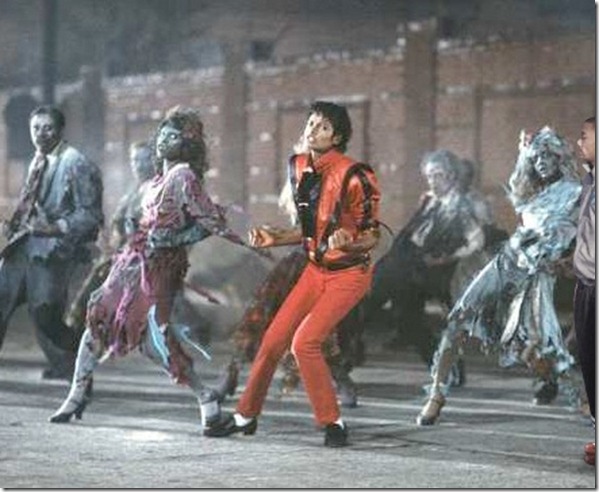

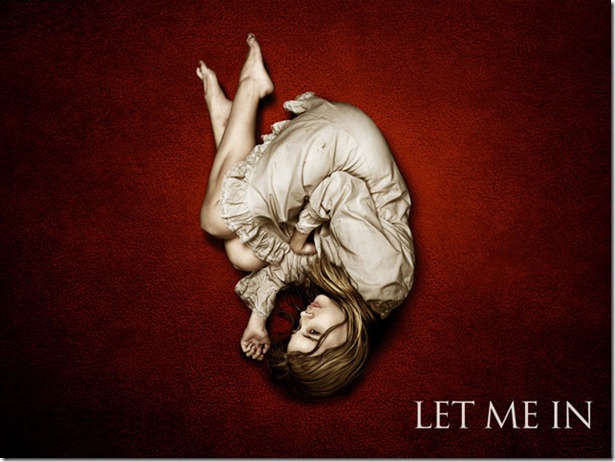























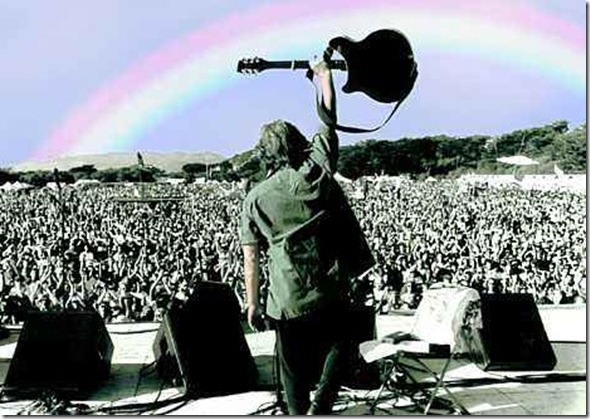















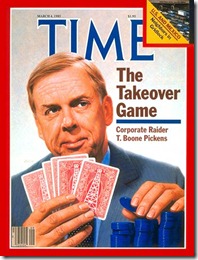


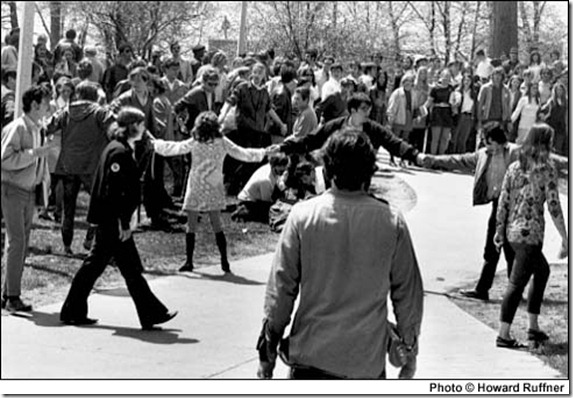
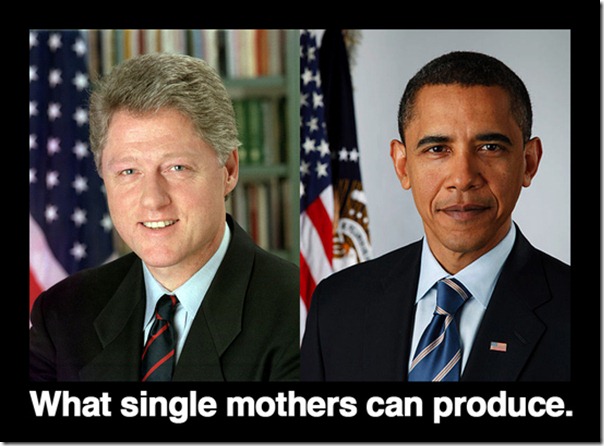









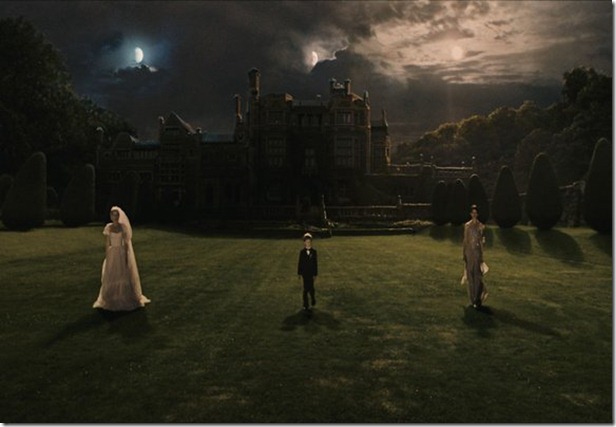










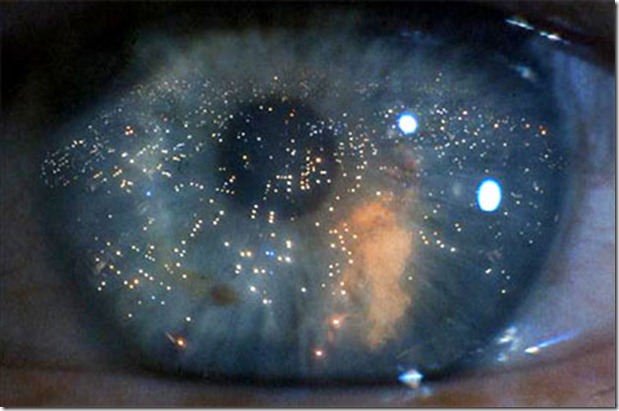






























































































 The rock groups and their lyrics themselves are often blatantly perinatal. The most obvious example of this was the group, Nirvana, who came out with a CD titled “In Utero.” The fact that the leader of the group, Kurt Cobain, committed suicide is a strong indication of his closeness and access to his perinatal trauma…as I will soon explain.
The rock groups and their lyrics themselves are often blatantly perinatal. The most obvious example of this was the group, Nirvana, who came out with a CD titled “In Utero.” The fact that the leader of the group, Kurt Cobain, committed suicide is a strong indication of his closeness and access to his perinatal trauma…as I will soon explain. 






















































